Introduction
In my wide-ranging survey of “Neoplatonism,” I included a section on the fourth-fifth-century Church Father Saint Augustine of Hippo. Augustine’s influence, both in the Catholic Church and across Protestant Christianity (when it arose in the early 16th century) is difficult to overstate. In fact, Augustine was one of only four early church personalities to receive the high approbation of being named a “Doctor of the Church,” in recognition “of the great advantage the whole Church has derived from their doctrine[s].”[1] It’s safe to say that Augustine, who – according to Google – was canonized by Pope Boniface VIII in 1303, was a pillar of Christian orthodoxy.
Due to this, it has struck some readers (viewers) as somewhere between odd, mistaken, or scandalous for me to have seemingly enrolled him among the ranks of “the Neoplatonists.”
For example, one commenter stated (in part): “…I am not …certain that as many Church Fathers as you have listed were of a Neoplatonic orientation. The occult may claim them as their own but many times that is an advertising gimmick. In the case of Augustine I dispute the notion that he was a Neoplatonist. He was an implacable foe of Hermes and Hermeticism, which are inseparable from Platonism. (The “Tractatus” attributed to him is apocryphal). The occultists deceitfully claim him for their own, predicated on trifles – because he did not deny the intellectual capacity of Plato, for example; which is a tribute to Augustine’s prudence and probity. In his masterwork, “City of God Against the Pagans” (the last three words of the title are often omitted in the modern era) – for example in Book IX chapter XVI – he clearly distinguishes between Christianity and Plato. Furthermore, Augustine rejected the Renaissance Neoplatonic appeal to the pagan philosophers as forerunners who bore witness to the validity of Christianity.”[2]
First of all, thank you so much for reading and commenting! Admittedly, in the article and in the companion video, I may not have adequately distinguished Augustinianism from (Plotinian) Neoplatonism. Once properly distinguished, however, I’d still argue that what we have – with St. Augustine – is a species of Christian Platonism. So, let’s dive in; I’ll try harder to make that case.
For a video version of (most of) this essay, see HERE.
Background
Recall that I started off the original video with a summary of some major tenets of Neoplatonism – especially as it was formulated by some of its ancient framers. Please see – or see again! – that presentation for the full story.
But, to aid comprehension here, and as a refresher, I listed five (5) main doctrines. (1) Neoplatonism’s view that the world is a hierarchy of entities with “something” called the “One” at the top. (2) Neoplatonism’s doctrine of emanation, according to which all other realities emerge from the One. (3) Neoplatonism’s pantheism, that is to say, it’s near identification of the divine with the entire universe. (4) Neoplatonism’s related mysticism – or its preoccupation with the idea that human souls ought to strive to ascend to and reunite with the One. And (5) Neoplatonism’s tendency towards syncretism, which is the tendency to try to harmonize or combine ideas from competing religious and philosophical systems.
Let me say, right off the bat and for the record, that I never meant to imply that Saint Augustine was a Neoplatonist in the sense of advocating or subscribing to these five doctrines. I tried to caveat the Augustine material in the original presentation. But, I now realize that I guess I never gave a direct disclaimer (as I just have).
Of the Neoplatonic varieties that accept the five basic beliefs sketched above, I think a case can be made that many (or even most) are heavily (possibly inextricably) wedded to Hermeticism. Although the occult-leaning journalist Jason Louv described “Hermeticism, Neoplatonism, and operative magic” as “three distinct yet intertwining schools of thought”.[3] And I basically agree with that.
Regardless, I don’t think, and have no interest in arguing, that Augustine was a Hermeticist in any meaningful sense. I’m going to kick the topic of Hermeticism into an “Afterword.” (Q.v.)
Here, I will note the remarks of Egyptologist Ronaldo Pereira, who listed Augustine among those “[o]ther writers” – also including Arnobius, Cyril of Alexandria, Lactantius, and Tertullian – “who discussed Hermetic literature [e.g., the Ad Asclepius, or Logos Teleios, tractate] and thereby helped shape its reception…”.[4]
Of course, it’s one thing to read and discuss Hermetic texts, and help “shape [their] reception,” and it’s another thing to endorse the texts’ worldview. The Church Fathers, including Augustine, “…rejected [the Hermetica’s] Paganism, but [they] noted that similarities could be found within their theology. …[Many] early Christian Fathers went as far as to quote the Hermetic texts in their campaign against heresies.”[5]
Before I use the occasion of the comment to unpack further details about Plato, the Platonic-Neoplatonic legacy, and Augustinianism, I’ll try to answer the most pressing question. If Augustine didn’t hold any of the distinctive, Neoplatonic beliefs (the One, emanation, pantheism, mysticism, syncretism), then why did I feature him in the Neoplatonism presentation at all?
Terminological Troubles
There are several reasons. Firstly, Augustine was (some kind of) a Platonist. And Platonism and Neoplatonism are often treated together.
Indeed, as I believe that I mentioned in my opening remarks to the “Deep Dive Into Neoplatonism” presentation, there’s arguably an inconsistency in the literature about how to refer to Plato’s multifaceted intellectual heirs. Sometimes Platonism and Neoplatonism are distinguished; other times, they’re used synonymously. This does give rise to confusion.[6]
I suggest that there are two (2) senses of “Neoplatonism.” One is technical.
On this narrow use, a thinker counts as “Neoplatonic” if and only if he was a disciple of Plotinus, practices mysticism, and upholds the five tenets. So… not Augustine.
Then again, note well that Plato himself wasn’t a Neoplatonist in this sense, either historically or ideologically![7] This may seem too obvious to mention, but we should carefully distinguish Plato from his Neoplatonic descendants. This is to say that subsequent thinkers – Plotinus, Porphyry, Iamblichus, Proclus, etc. – embellished (and even mystified) Plato’s thought and took it in new directions (e.g., toward metaphysical monism and religious pantheism).
Secondly, a distinction between Plato and Neoplatonists is important because it's doubtful that Augustine read Plato’s (Greek) dialogues directly. Rather, Augustine encountered Plato via various Neoplatonists, chiefly, Plotinus and Porphyry.[8] But going back to the question of terms…
If we insist on (what I earlier called) a “strict use” of Neoplatonism, where Neoplatonists are all and only those who are Pantheists, syncretists, and so on, then we should equally recognize that the word Platonism marks off the pre-Plotinian, non-mystical philosophy of Plato himself.
A second use of “Neoplatonism” is broader. A thinker is “Neoplatonic” in this looser sense if they’re indebted to Plato, no matter how. Most of the major “Neoplatonists” in this broad sense have put some novel “spin” on the doctrines they inherited from Plato. In fact, one of the main points that I was trying to suggest in my original presentation was that, in my opinion, Neoplatonism – in this looser sense – can be thought of as coming in subvarieties: Neoplatonisms (plural), if you like. Sticking to ancient Neoplatonism, the subcategories that I enumerated were the following.
(1) Pagan, Anti-Christian Neoplatonism (especially of a type modeled on Iamblichus),
(2) Christian Neoplatonism (of an Augustinian type),
(3) Neoplatonic Christianity (of a Dionysian type – later dominant in the Renaissance), &
(4) Non-Christian Neoplatonism (of other sorts, such as Islamic, Judaic, etc.).
In this broad sense, Neoplatonism isn’t always “Hermetic.” We’ve got to take systems and thinkers on a case-by-case basis. Plotinus would still be a Neoplatonist – as would Iamblichus. And Iamblichus would also be a Hermeticist. But Augustine was a non-Hermetic Neoplatonist of a Christian variety, and certainly not a Hermeticist. Pseudo-Dionysius was a different sort of Christian Neoplatonist, one who was much more Hermetic. That’s the sort of thing I had in mind.
We probably do need to make an initial terminological decision about which way we want to talk.
If we allow for a loose way of speaking (and I’m willing to allow it), then “Broad Neoplatonism”[9] can refer to the entire spectrum of thought that is, in some sense, “Platonic” (more on that later).
However, if we want to, we certainly can reserve the term “Neoplatonism” for the Hermetic line that arguably started with Ammonius Saccas and Plotinus, and proceeded through Iamblichus, Proclus, Dionysius, and so on, ultimately gaining traction (in supposedly Christian circles) during the Renaissance. I don’t prefer this way of speaking because I think it blurs the lines among subtypes that I’d rather distinguish: Such as Pagan Neoplatonism and Neoplatonic Christianity.
At the same time, I don’t want to argue about words. You’re free to choose whatever terms you think best. But, whatever word you pick, it’s best to stick to it. And I might have fumbled the ball a bit on this score.
If we do opt for the narrower usage, then what I previously called “Christian Neoplatonism” has to be renamed. Not to worry: The literature is replete with alternatives. We could call the variant Augustinianism, Augustinian Platonism, Christian Platonism, or whatever. For this exploration, I pick Augustinianism.
One More Preliminary Wrinkle
But the Neoplatonists’ elaborations were far from the only interpretations of Plato in play. This should be uncontroversial. It’s worth recalling that there was a little-mentioned intermediate period, called “Middle Platonism,”[10] during which there were similar (though opposing) shifts in interpreting Plato’s thought – this time towards metaphysical dualism and religious Gnosticism.
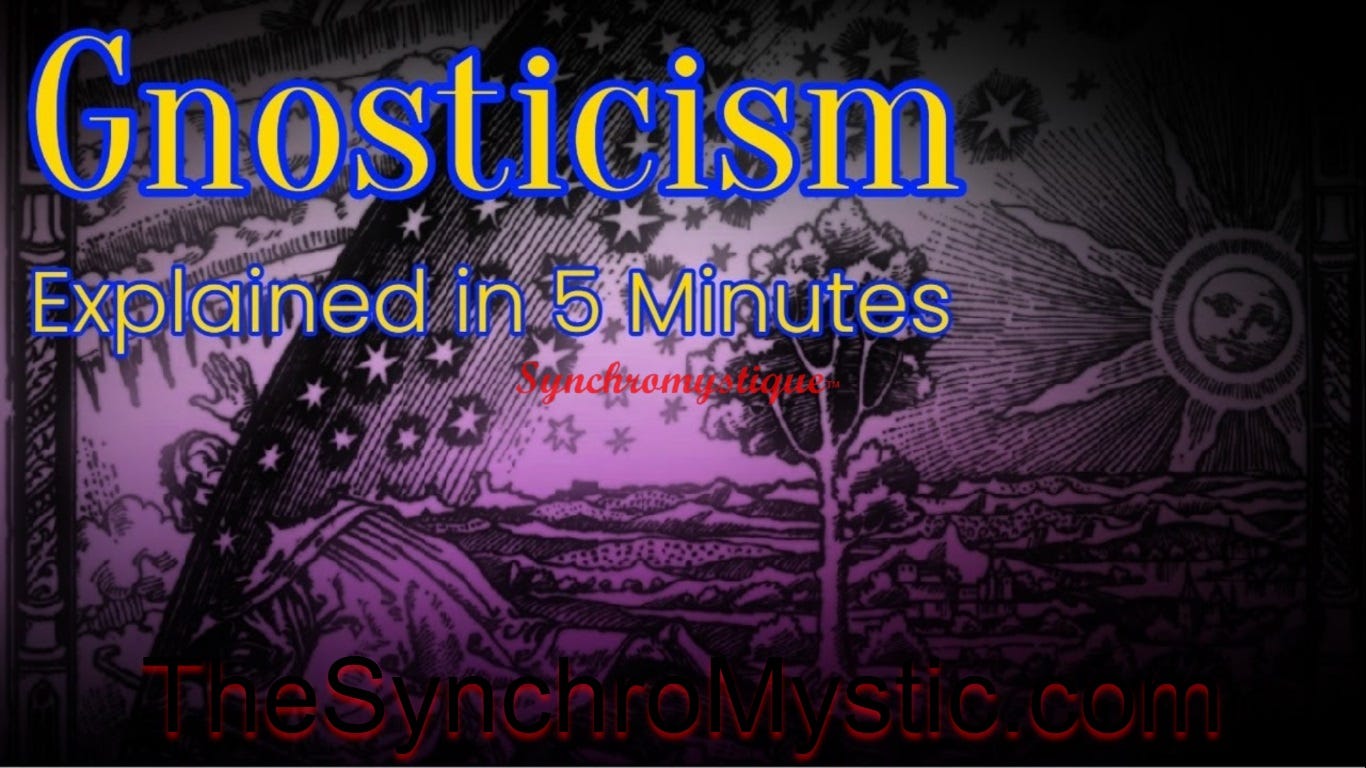
In this, Plato’s thought was seminal. Firstly, Plato distinguishes a world of Particulars from a world of Forms. This distinction was Plato’s answer to perennial philosophical problems such as “the one and the many” and the dichotomy of change and permanence. How do we perceive reality as a unified whole when it appears to be made up of a diversity and plurality of individual things? Is nothing actually permanent, as Heraclitus thought? Is change an illusion, as Parmenides and Zeno evidently held?
Plato’s solution to these puzzles was to posit two different realms. One of these, the perceptible world of everyday experience, was the realm of becoming, of change and of plurality; the other, an imperceptible realm of Forms, was unified and permanent.[11]
This spills over into what you might call Plato’s cognitive dualism of perception, on the one hand, and conception, on the other. This is to say that we explore the world of Particulars with our five senses. But the world of Forms can only be “conceived of” or explored with the mind. This bifurcation further unfolds into Plato’s anthropological dualism. According to this, we humans are composites of two kinds of “stuff”: material bodies and immaterial souls.[12]
Finally, from the standpoint of the theory of knowledge (or epistemology), there’s a major dualism between changing, time-and-space-bound opinion – which is the best we can hope for when we base judgments on the deliverances of perception – and timeless, unchanging knowledge – which, to Plato, has to be grounded in the Forms.
These nested dualisms suggest a strong connexion between Plato and the later Gnostics. Some “scholars have even referred to Gnosticism as a kind of Platonism.”[13] This association is underscored by the fact that Gnostics sometimes labeled the god of Darkness (the creator of what they call “evil matter”) after Plato’s “Demiurge.”[14] We’ll talk more about all this in a minute.
Was Augustine a Platonist?
Let’s start with this. Augustine was deeply (if indirectly) influenced by Plato. So, yes, he seems pretty clearly to have been a “Platonist.” Commentators with diverse worldviews agree on this.
For example, the late 20th-c. British philosophy “popularizer” and television-show host Bryan Edgar Magee, a self-professed religious “agnostic,”[15] concisely described St. Augustine’s thinking as: “The Fusion of Platonism and Christianity.”[16]
Magee, despite being ideologically opposed, nevertheless echoes the language of 19th-20th-c. French Jesuit theologian Eugène Portalié, who likewise described the bishop’s worldview as “…the fusion of Platonic philosophy with revealed dogmas…”.[17]
Similarly, Philology Professor Christian Tornau, writing in the standard reference, the Stanford Encyclopedia of Philosophy, says that “…Platonism in particular …[was] a decisive ingredient of …[Augustine’s] thought.”[18]
Finally, 20th-c. American Reformed theologian and philosophy professor Ronald Herman Nash – although espousing a quite different worldview from Magee, Portalié, and (I presume) Tornau – nevertheless also wrote that Augustine’s “work is …a model for those …thinkers who would use Platonism as a framework for their Christian world-and-life view.”[19]
As far as I can tell, Magee, Nash, Portalié, and Tornau are not occultists in any sense.
So, what were they thinking of when they all classified Augustine the same way? We’ll look at several things. As we do, bear in mind that, despite the fact that Augustine drew heavily from Plato – via Neoplatonists such as Plotinus – he felt at liberty, or even compelled, to modify his sources. Augustine did this out of “faithfulness to the Christian Scriptures and [out of] his own genius.”[20]
In places such as On the City of God Against the Pagans, or, The City of God, Augustine wrote clearly and voluminously against such forms of paganism as “the popular cults of Isis, Mithra and Cybele…”.[21] We can confidently say that, “[o]n any issue where Plotinus’s thought and Scripture were irreconcilable, Augustine parted company with Plotinus and sided with the Bible.”[22] The same goes for Augustine’s treatment of Plato – with the only caveat that, due to his indirect access to Plato, Augustine would’ve had difficulty demarcating Plato from Plotinus.
Why Would Augustine Have Wanted to Be a ‘Platonist’?
As to why Augustine attempted to combine Platonism with Christianity at all, and thought it was permissible to do so, Magee gives plausible suggestions. He wrote: “One thing that made it possible for Augustine to fuse the Platonic tradition in philosophy with Christianity is the fact that Christianity is not, in itself, a philosophy. It’s fundamental beliefs are …historical rather than …philosophical…: for instance, that a God made our world, and then came to live in the world of his creation as one of the people in it, and appeared on earth as a man called Jesus, in a particular part of Palestine, at a particular time, and lived a life that took a certain course, of which we possess historical records. Being a Christian involves, among other things, believing such things as this, and trying to live in the way …God …told us, partly through the mouth of …Jesus… Jesus did …provide …moral instruction, but he was not much given to discussing philosophical questions [per se].
“So it wasn’t the case that there was a Platonic philosophy on the one hand, and on the other, a philosophy at variance with it, [called] Christian philosophy – thus giving Augustine the problem of marrying the two. …[R]ather …Augustine, believing that Platonic philosophy embodied important truths …that the Bible did not concern itself with, wanted Platonism to be absorbed into the Christian world-view.”[23] That’s one reason. Another is a fondness for the man, Plato.
Plato as a ‘Christian Before Christ’
As noted in the “Deep Dive Into Neoplatonism” video, the 2nd-c. Christian apologist and philosopher “…Justin [Martyr called] Socrates and Plato, along with [the Old Testament Patriarch] Abraham, …‘Christians before Christ,’ because they followed the Divine Reason within them.”[24]
Especially from the standpoint of someone who takes Christian revelation seriously, there are numerous issues with Platonism. Later on, we’ll briefly catalog some of these. But it’s worth thinking about why early Christians felt such an affinity with or devotion to Plato or to Platonism – as that sort of friendly sentiment Justin Martyr expressed.[25]
Many reasons for this come from Plato’s writings. Consider a provocative passage, in Plato’s Republic (362a). The character Glaucon explains that, if ever the world were to encounter a truly just man, that man would end up being “crucified.”
Doubtless, some overzealous apologists make excessive claims for this text – such as that it was a bona fide prophecy. Still, it’s enough (for us) that it shows Plato’s remarkably Christian-sounding moral sensitivities.[26]
To some early Church Fathers, “both Greek philosophy and the Old Testament were preparatory phases that found their culmination in Christianity.”[27]
We can’t forget that Plato put a premium on evaluative notions like Beauty, Goodness, Justice, and Truth. Not all of Plato’s contemporaries had the same sensibilities. The Sophists didn’t!
Besides arraying himself against Sophism, Plato also opposed Hedonism, materialism, naturalism, relativism, and skepticism. Later thinkers would mobilize the resources of Platonism against other “-isms” such as atheism, empiricism, and mechanism.[28] Christians also frequently oppose these ideologies.
The upshot is this: “…Platonism is saturated with many of the same metaphysical assumptions as Christianity, revealing a deep concord between these two seemingly incompatible schools of thought. …Much like the Christian God, Plato’s form of the Good is a divine source of being for all of the world. …Just as the Christian God is truth and goodness himself, the Platonic Forms are the ultimate source of ‘truth and understanding’ for all things…According to Platonist anthropology, humans are inherently spiritual creatures possessing both a material body and an immaterial soul. …Both Platonism and Christianity understand the human soul as naturally calibrated for pursuing questions of the divine.”[29] And so on.
And, of course, in the centuries-long debate over the way to resolve the Problem of Universals, Plato was “an all-flags-flying Realist,” to borrow the colorful phraseology of philosopher John Cuddeback. Indeed, Plato was the wellspring and primary articulator of Realism. Anyone opposed to the other major position – Nominalism – ought to see Plato as some kind of ally.[30]
As an aside, nominalist thinkers such as the Franciscan friar William of Ockham, along with seminal “and radical empiricis[ts]” like fellow Franciscan Roger Bacon, “helped support the growing movement of mysticism” in the so-called “Late Middle Ages” (roughly A.D. 1300 to 1500).[31] I would also argue, although I won’t do so, presently, that – besides a connexion to this proto-empirical strand of medieval mysticism[32] (a strand that paved the road for its Renaissance successors) – nominalism is also detectable behind key theological principles that motivated the “Protestant Reformation” – including, most importantly, Sola Scriptura (or the “Bible Alone”). I’ll have to tackle all that another time.
For now, concerning St. Augustine, here’s my argument. Augustine was first and foremost a Christian. Augustinianism is a unique and thoroughgoing formulation of Christianity. If he had to choose between leading a hearer to Christian orthodoxy or convincing a reader of some arcane metaphysical contention of Platonism, I’d wager that he’d had chosen the former – without hesitation. For all that, however, Augustine’s considered, mature, complete, Christian worldview may be justifiably classified as a species of Platonism.
“The object of his philosophy …[was] to give authority the support of reasons, and ‘for him the great authority …is the authority of Christ’; and if he loves the Platonists, it is because he counts on finding among them interpretations always in harmony with his faith.”[33]
Now, at last, let’s look at some of the evidence for these claims.
Augustine on the ‘Immortality of the Soul’
An outstanding illustration of Augustine’s adherence to Platonism – by way of Neoplatonists such as Plotinus and Porphyry – was his commitment to the existence and Immortality of the Soul (the latter being the title, incidentally, of his treatise written around A.D. 387).[34]
By the way, the basics of Plato’s argument for the immortality of the soul can be put like this. To destroy something (like a glass water pitcher, for example) is to break it into parts. But, to Plato, the soul hasn’t got any parts. (It’s “simple.”) Therefore, the soul cannot be destroyed.[35]
As Fr. Frederick Copleston noted: Plato’s “…dualistic conception [of the soul] reappears in Neo-Platonism [sic], in St. Augustine, in [René] Descartes, etc.”[36] Augustine wrote: “…[A]mong those things which are created by God, …the rational soul …surpasses all; and it is nearer to God when it is pure.”[37] Not to put too fine a point on it, but “[i]n his anthropology[,] Augustine was firmly Platonist, insisting on the soul’s superiority to and independence of the body.”[38]
One could – not unfairly – think of this as a combination of (or a meditation on) the Platonic idea of the indestructibility of the soul, the Neoplatonic association of individual souls with the World Soul (mentioned in the “Deep Dive” video), and portions of the New Testament. In the Gospel of Matthew (chapter 10, verse 28), we read: “Do not be afraid of those who kill the body but cannot kill the soul. …[B]e afraid of the One who can destroy both soul and body in hell.”[39] Now…
If taken as a piece of serious metaphysics, as opposed to (say) a metaphor, Matthew 10:28 may be said to imply two (2) things: Firstly, that there is a soul and, secondly, that God is the only being capable of destroying it (since, apart from His activity, the soul is otherwise immortal).[40]
Other arguments for the bare existence of the soul, from people like Plato and (later) Descartes, turn on a point that is now known as the “Indiscernibility of identicals.” This principle states that if two things are identical, then they are also indiscernible – i.e., they have all the same properties.
So, then, Descartes points out, if I can doubt the existence of my body, but I cannot doubt the existence of my mind (because, cogito; ergo, sum), then my body and my mind do not have all the same properties. (He seems to be thinking of bodies as having a property like “being able to be doubted,” while souls have the property “being unable to be doubted.”) But if they don’t share all the same properties, then they’re not identical.[41]
Finally, (substance) dualism – of body and soul – is suggested to some thinkers on the basis of pure introspection. “For example, Plato, Augustine, Descartes, [Joseph] Butler, and [Thomas] Reid [all] held to [a view called] S[ubstance]D[ualism] in virtue of being aware of themselves from the first-person perspective as not reducible or identical to their bod[ies].”[42]
This is “cashed out” in terms of a consideration called intentionality or “aboutness.” “The property of intentionality is the property of being about something or being of something. For example, [William Lane Craig says,] I can think about my summer vacation or I can think of my wife. [But, p]hysical objects don’t have these sorts of properties. The brain is not about something any more than a chair or a table is about something …[O]nly thoughts which are of something that have this kind of aboutness …to [them]. But on [the] view [that] …there is no soul …[where] instead you just have the brain …intentionality is …an illusion. …This leads a naturalist philosopher like Alex Rosenberg to …[say] that we never really think about anything. It is just an illusion that we have intentional states.”[43] Granted, Rosenberg is an atheist. But…
Let’s say you’re thinking: A lot of traditions believe in some kind of “soul.” How does that show Augustine was a Platonist?
Well, apart from the details of his intellectual formation, which clearly suggest that he was steeped in the “books of the Platonists,”[44] we can come at the point in a backhanded way by looking at the argument of Plato’s critics.
I have in mind the “anti-soul movement” represented by Anglican bishop and New Testament scholar Nicholas Thomas “N. T.” Wright. Wright is part of a small and diverse group of Christians who are understood as “rejecting the soul” as a theological concept.[45] For Wright’s part, he criticizes modern advocates of body-soul “dualism”[46] on several grounds, one of which is his view that, “when Paul and the gospels use the word psyche, it is clear [to him] that …[that the] biblical authors] are not using it in the sense we’d find in Plato or [the Judaic-Platonist] Philo”.[47]
When Wright turns his attention to Christian exegesis, he asserts that “what the great tradition from Augustine onwards was referring to with [respect to certain words, like justification and soul] is significantly different from what Paul was referring to when he used the word[s].”[48] Thus Wright objects to a Platonizing of St. Paul, and seems to associate aspects of that sort of maneuver with Augustine. But…
Contrary to Wright, Augustine evidently believed that an immortal soul – in Plato’s sense – was not only what St. Paul had in mind, but was also further reason to commend Plato’s perspicacity (and similarity to Christians).
Even if Plato is the source of Augustine’s arguments for the soul and its immortality, as seems barely short of a certainty, note that Augustine crucially altered the picture. To Plato and Pagan Neoplatonists, the soul and its immortality were related to transmigration. Souls “reincarnate.”[49] Following the Bible, Augustine rejected this notion.[50] E.g., in the Book of Hebrews, the first part of verse 27, in chapter 9, tells us that “it is appointed for man to die once” – not over and over.
Augustine was a Realist About ‘Forms’
An even bigger connexion between Augustinianism and Platonism was the former’s allegiance to the latter’s doctrine of Forms. To put it slightly differently, Augustine believed in the real existence – independently of particular things – of what Plato called Forms or Ideas, and what later came to be termed “Universals.”[51] Forms make particular things, like my neighbor’s dog, the kinds of things they are. Fido is a dog because Fido “participates” in the Form of Dog-ness
Since I unpacked this a bit more in the “Deep-Dive” video, I won’t devote a lot of space to it, here. Suffice it to say that, if we tried to identify Platonism’s philosophical “core,” we’d be hard-pressed to do better than to name Plato’s notion of an abstract, immaterial, non-physical, perfect, spaceless, timeless, unchanging realm of Forms that not only exists, but constitute true reality. The Forms lie beyond, and make possible, our ephemeral experiences and perceptions of the physical world. Physical objects are merely imperfect approximations, copies, echoes, or shadows of the Forms. The Forms also ground truth claims and make knowledge possible.
A realist argues like this. For a sentence like “this stop sign is red” to be true, there has to be such a thing as the stop sign, there has to be such a thing as redness, and the two entities – the stop sign and the redness – have to be related in the correct way. A realist might say that the stop sign exemplifies or instantiates redness. Stop signs are no problem – they’re run-of-the-mill particular objects. But, redness? What’s that? Well… the realist says redness is a “universal.” For our purposes, we’ll say redness is one of Plato’s Forms. And the stop sign participates in it.
To a Platonist, more important Forms lie behind judgments such as equivalence, similarity, and identity. This comes across in the dialogue Phædo (esp. 74b-76c), where Plato argues that we conclude that two things are “equal” because we have the concept of “equivalence” already in our minds. To Plato, we don’t derive that concept from the world. Rather, we recognize when the world presents us with equal things, because deep down we already know what “the equal” is.
Augustine agreed with Plato’s general picture. He held: “[T]here are certain principal forms of ideas, or stable and unchangeable aspects of things, which are not themselves formed, and [which] are …eternal and always …[exist] in the same way… [These ideas] …neither arise nor perish; … however, …everything that arises and perishes, is said to be formed [with them].”[52]
Augustine seems to be saying that changeable, perishable, temporal things depend upon unchanging, nonperishable, and eternal things. To punctuate the connexion with Platonism, he wrote: “Plato called these principal aspects of things Ideas: but they are not only ideas, they are Truths themselves, because they are eternal, and remain such and unchangeable…”.[53]
Surely, a thinker who assents to the core of Platonism qualifies as a Platonist. QED.
Nevertheless, Augustine makes a crucial change, saying of the Forms, not that they subsist in some “Platonic Heaven,” as Plato held, but that they’re “…contained in the divine intelligence.”[54]
Changes like this gave Augustinianism longevity in Christian circles because they mitigated the elements of Plato that were incompatible with Christianity. Some 800 years later, for example, St. Thomas Aquinas was favorably “quot[ing] Augustine as to the …[Divine] Ideas…”.[55]
That’s saying something, for Aquinas leaned heavily toward Aristotle. In fact, that was a bone of contention between Aquinas and Bonaventure. The latter believed that Aristotelianism and Christianity were irreconcilable and he recommended going back to Augustine’s Platonism![56]
We shouldn’t forget to add to these resemblances the qualified praise that Augustine gave to Platonists. In The City of God, the second of Augustine’s two major works (the first being his autobiographical Confessions), he says of “the Platonists” (in Chapter 5): “Their Opinions [are] Preferable to Those of All Other Philosophers,” going so far as to say that “none come nearer to us [Christians] than [do] the Platonists.”[57]
Augustine then describes “Platonic philosophers” as among those “who …recognized the true God as the author of all things, the source of the light of truth, and the bountiful bestower of all blessedness.”[58] He commends Platonists as “great acknowledgers of so great a God” for not “having their mind[s] enslaved to their bod[ies],” thereby “suppos[ing] the principles of all things to be material” in the manner of materialists like Thales (whose central belief is often glossed as all is water), Anaximenes (all is air), the Stoics (all is fire), or Epicurus (all is atoms and the void).
His point is: Like Christians, Platonists have a healthy respect for the spiritual, over and above the physical. Both “…Plato and the Scriptures agree that our souls have a special affinity to God, that we are morally responsible for our actions, and that there is a time of reckoning in the world to come.”[59]
When navigating this terrain, we do need to keep in mind that Augustine expressed antipathy to “Hermetic” Neoplatonism – or, what I called “Magical Neoplatonism” in the “Deep Dive” video.
In fact, there was an ongoing rhetorical war between Neoplatonists like Iamblichus, and his school, and Christian polemicists like Tertullian and Augustine.
The former “attacked [Christian views] on magic, [and] accus[ed] Christians of impiety for denying the divine principles supporting theurgy”.[60] Additionally, “…Neoplatonists …vehemently protest[ed] against the …Christian dogma that human salvation has already been accomplished vicariously through the life and death of a man revered as the son of god. …[For some of them,] the route to salvation …[was] the philosophic life, a sincere and arduous effort of the mind to return to the One and forever abrogate any concerns for the body.”[61] Others based their hopes on a more magical-mystical form of “ascent” that I distinguished from Augustinian mysticism.[62]
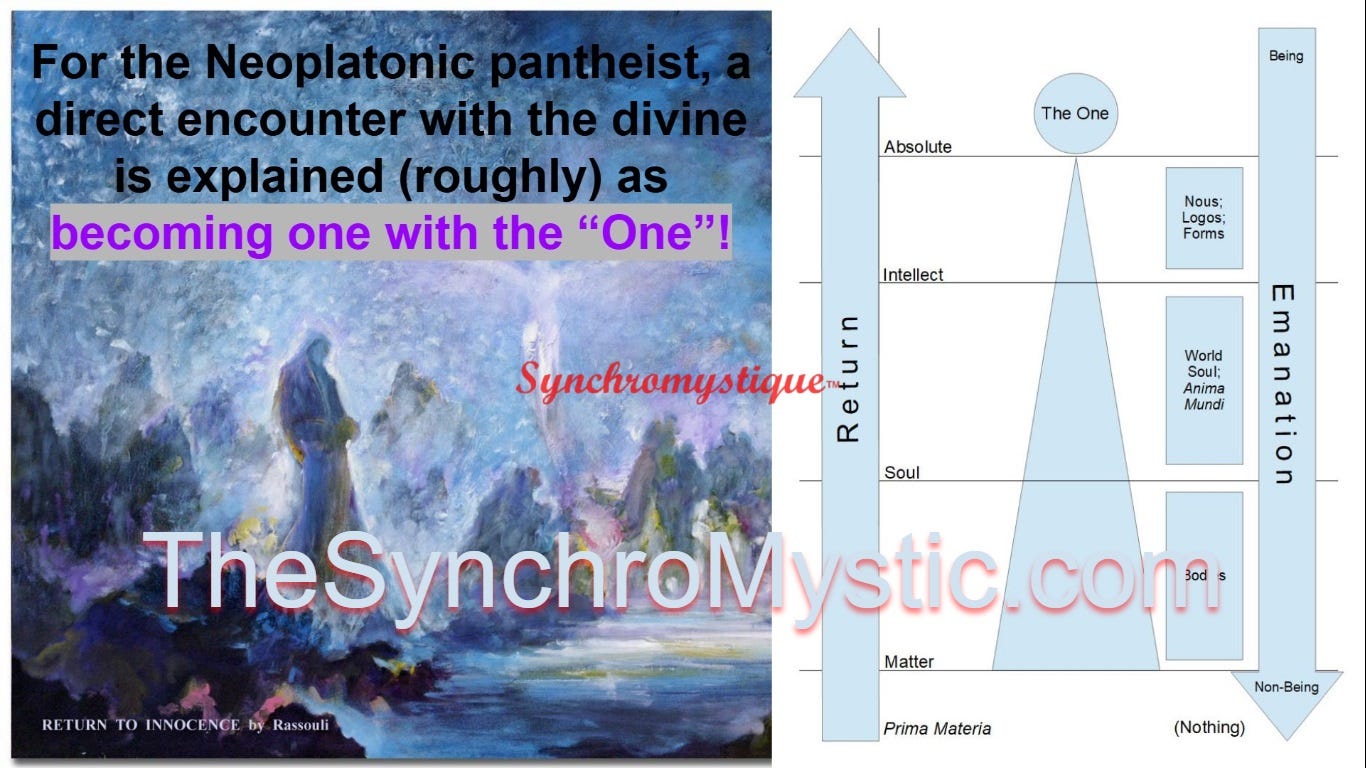
For his part, Augustine does have room in his system for a sort of “ascent of the soul.” But, for Augustine, such is an intellectual movement. For the soul that becomes attuned to God, the contemplated “ascent” is a gradual turning one one’s attention from earthly matters to divine matters.[63] It’s not taken metaphysically – as an attempt to “(re-)unite” your being with the One.
Augustine has dire warnings for those seeking to force a reconciliation with God through magic. Augustine harshly condemned both necromancy and Porphyry’s Neoplatonic “theurgy” as “…the deceitful rites of …demons” that are tantamount to “criminal tampering with the unseen world”.[64]
Nevertheless, it would be a mistake to conclude that Augustine took nothing onboard from Neoplatonism. It was not for nothing that Plotinus’s “name was so dear to …St. Augustine,” as the late Catholic philosopher and Jesuit Fr. Frederick Copleston once put it.[65] For, at the very least, as we have said, it was “[t]hrough the Neo-Platonists [that] Platonism made its influence felt on St. Augustine and on the formative period of mediæval thought. …The Augustinian philosophy was, through Neo-Platonism, strongly impregnated with the thought of Plato.”[66]
We just sketched that latter association, So, now, let me say something specifically about Augustine’s intellectual debt to Neoplatonism. I gestured to some of this in my previous video.
How Was Augustine Influenced by Neoplatonism?
Let me prime the pump for this section by opening with Augustine’s own words. In his biography, Confessions, he wrote: “[God] procured for me …certain books of the Platonists, translated from Greek into Latin. And therein I read, not indeed in the same words, but to the selfsame effect, enforced by many and various reasons, that, In the beginning was the Word, and the Word was with God, and the Word was God. …”.[67] Here is Saint Augustine telling us that he thinks that he’s found an echo of the Gospel in the “books of the Platonists.” That’s quite remarkable.
Of course, Augustine quotes one scripture passage after another. He alternately declares, of some Christian doctrines, that he does find them in the “books of the Platonists”; whereas, for other doctrines (such as believing in the name of Jesus), he says: “This I did not read there.”[68]
So, Augustine’s handling of “the Platonists” (really, as stated, the Neoplatonists Plotinus and Porphyry) is nuanced. But Augustine is by no means dead set against anything smacking of “Platonism.” Therefore, we have to look more closely at Augustine’s system. When we do so, I think, we won’t fail to find substantial overlap between Augustine’s thinking and Neoplatonism.
Neoplatonic-Inspired Account of Evil
For example, in the previous video, we discussed Augustine’s “privation” account of “evil.” In this account, Good exists, but evil – strictly speaking – does not. “Evil” is just a word for the absence of Good. But you can make the case that Augustine’s account, here, owes more to Neoplatonic than directly Platonic influences. Before I explain how, let’s get a handle on Augustine’s idea.
In the “Deep-Dive” video, I suggested that you can get a quick “fix” on his notion by thinking of our commonplace understanding of light. The difference between a well-lit room and dark room isn’t that the former is filled with stuff called “light” whereas the latter is filled with some opposing stuff called “darkness.” Instead, we say that the dark room merely has no light. Light has being; darkness does not. So it is with Good and evil, according to Augustine. And, remember…
Augustine wasn’t just waxing philosophical. He was arguing against a competing belief system known as Manichæism,[69] to which he had previously subscribed. Augustine’s fascination with Manichæism was partially motivated by his desire to find a satisfactory solution to the “Problem of Evil,” that is” “[t]he problem of reconciling the imperfect world with the goodness of God.”[70]
The Manichee solution was to posit the existence of two gods, Good and Darkness, who were locked in perpetual war. Thus, Manichæism advanced a version of Gnostic, theological dualism.
“That’s all well and good,” you’re saying. But how does this help show that Augustine’s privation account of evil was inspired by Neoplatonism?
Well, think of it this way: Plato wrote his dialogues and then he died.[71] One of the first formal schools to follow him was what is now called “Middle Platonism.”[72] The salient point is that these Middle Platonists pioneered the dualistic interpretation. Major streams of Gnosticism,[73] which preceded Neoplatonism, were heavily influenced by this teaching. And “Platonic dualism” was eventually embraced by Manichæism.[74] Augustine’s departure from its ranks also marked his turn away from this sort of dualism.[75]
So, from where was Augustine inspired to articulate a monistic account of evil? It wasn’t from Gnosticism or Middle Platonism. And as stated, the earliest non-skeptical interpreters took it for granted that Plato taught dualism.
Only two groups were really toying with monism. One was the Stoics – and they were hardcore materialists. The other – of course – were the Neoplatonists.
Plotinian Neoplatonism tended toward monism. We know that Augustine was reading Plotinus and Porphyry anyway. So, just speaking about Augustine’s personal history, Neoplatonism is a pretty good candidate for his source. When we think about Neoplatonism’s beliefs, it clinches it.
Recall that Plotinus imbued his all-important (and singularly lofty) entity – the “One” – with unsurpassed Being and Goodness. All subsidiary entities emerged out of (or “emanated from”) the One. But, as derivative beings emerged, they also degraded – both in Being and Goodness. Consequently, entities at the bottom of this existential totem pole (or “Chain of Being”), such as our bodies and other material things, literally verge on non-being and evil. Now…
You don’t have to “buy into” any of the hierarchical metaphysics. Just notice the punchline. I’ll say it again, if you missed it. For the Neoplatonists, evil was joined at the hip with non-being.
I don’t know about you, but the fact that evil had little-to-no existence in the Neoplatonic picture seems awfully similar to Augustine’s view that evil is a privation of good.
Let me toss in a brief comment about a possible misunderstanding that some people might have regarding what Augustine is saying. The idea that “evil is a privation” can sound a lot like the claim that “there’s no such thing as evil,” with the consequence that evil can’t or won’t be a part of our day-to-day experiences. But, it doesn’t take five seconds to stub your toe or watch the nightly news and recognize that our world is inundated with evil.
So, realize that, in none of these cases – whether of evil, or darkness, or the Neoplatonists’ concept of the dregs of emanation – are we prevented from experiencing or perceiving the things in question. If you have trouble seeing this (no pun intended), here’s an illustration.
Visualize a pothole-covered street.
Do you usually say that the street is made of two different things: asphalt (or whatever), on the one hand, and “potholes,” on the other? No, “pothole” is just our shorthand way of referring to a gap in the asphalt. The holes are places where asphalt is broken or missing. Yet, the fact that “holes” don’t have any separate, positive existence does not safeguard your ankle if you accidentally step in one – or your tire if you drive over one![76]
Neoplatonic-Inspired ‘Illumination’
A second major example is Augustine’s doctrine of “Divine Illumination,” according to which human knowledge of the Forms (which recall are, for Augustine, the Divine Ideas) would be impossible without God’s direct and immanent assistance.[77]
Augustine gives this analogy. Just as “eye of the flesh” requires “bodily (physical) light to see, so too does “the intellectual mind” require a Divine, “incorporeal light of a unique kind”.[78]
Consider that the Gospel of John,[79] calls Jesus Christ: “The true light that gives light to everyone…”.[80] Now, it is certainly true that alchemists may be inclined to count this passage as evidence that “matter contains a light or an invisible fire whose nature is that of the Word who created Light on the first Day.”[81] But this virtual pantheism isn’t what Augustine has in mind.
To Augustine, a personal God “illumines” the minds of all people – at least, to the extent that they recognize any truth at all. By this intentional action, the Christian God guarantees the universality of knowledge by (for example) causing a priori truths to “[arise] within the soul.”[82]
A lot of this sounds like Plato himself, until you realize that, for Plato, humans know the Forms by “Recollection” (Anamnesis). For Plato, preëxistent souls inhabit the realm of the Forms, where we are able to grasp truths implicitly. Augustine rejects this entire explanation (see further on).[83]
For Augustine, humans are capable of knowledge because God implants innate ideas in our souls – not necessarily as fully formed objects of thought, but at least as mental dispositions.
However, God does not merely accomplish this once-and-for-all. Rather, He continuously informs and sustains our intellects. This is roughly what is meant by Divine Illumination.[84]
Neoplatonic-Inspired Anthropology
Recall that Augustine once held a strain of Manichæism. Like typical Gnostics, Manichees distinguished a spiritual world of goodness and light from a material world of darkness and evil.
To Mani and his followers, for a soul to become embodied, enfleshed, or incarnated was tantamount to something inherently good – a soul – being implicated in something intrinsically evil – a body. But, of course, for Augustine, a soul becoming embodied isn’t, ipso facto, a “Fall.”
In the Book of Genesis, chapter 1, verse 31, the Bible says that “God saw everything that he had made” – the physical universe and everything in it – and declared “it was very good.” The Fall is the result of sin, i.e., disordered priorities (placing the self over God) and selfish choices.
So the Gnostic-Manichee story about the inherently evil nature of flesh would no longer do.
According to the late Fordham University professor and Jesuit Robert J. O’Connell, when Augustine renounced Manichæism, he “…adopted [a] Plotinian anthropology [instead. On this Neoplatonic view,] …man is a soul fallen into …[a] body in consequence of some sin [that he] committed in his pre-existent state.”[85]
But, as we’ll discuss more fully in a minute, Augustine eventually rejected the idea of the preëxistence of the soul. So, as we’re by now hopefully accustomed to expecting, Augustine modified Plotinus’s idea of a “pre-existent” Fall.
Following the 2nd-c. Greek Bishop Irenæus of Lyon – and, we should quickly add – in line with the creation account in the Old Testament Book of Genesis, Augustine attributed the fall to Adam’s “original sin.”
So, while Augustine doesn’t say that you and I personally sinned in our own preëxistent states, he nonetheless attributes our inherited, sinful dispositions to the sin of the first man and woman – both of whom “preëxisted” us. It appears to have been an ingenious adaptation of Plotinus.
Historically, Augustine’s “...important doctrines,” in this regard, “emerge[d] in the …controversy with the …Pelagian heresy, against which …Augustine affirm[ed] the reality of the Fall and of original sin as the hereditary moral disease that we all bear, only curable by God’s grace.”[86]
A number of proposals have been advanced to explain, justify, and understand this claimed link between Adam’s sin and our inherited guilt. These include: (1) postulating Adam as the “federal head” of humanity, whose decisions, like those of the federal head of the United States (the president) have consequences for everyone under the relevant “jurisdiction”; and (2) suggesting a “modal defense,” drawing on the apparatus of “possible worlds” to suppose that, in a world where you or I had been the first humans instead of Adam, we would have sinned just as he did.
Today, it’s not uncommon to see the doctrines reduced to aphorisms such as that humans have a “propensity to evil.”[87] But, until the ascendance of nominalism, around the fourteenth century, believers in the doctrines of the Fall and Original Sin analyzed them using the resources of realism. They weren’t simply affirmations of the fact that “we have all sinned and fall short of the glory of God,” to quote St. Paul.[88]
Instead, the doctrine of original sin posited that all humans participate in the sin of Adam – where “participation,” you’ll remember, was one of the Platonist’s words for the relationship between a particular and its Universal.[89]
‘Trinity’ of the One, the Logos & the World Soul
In the Encyclopedia Britannica, Arthur Hilary “A. H.” Armstrong and Henry J. Blumenthal gave a further example that they say shows “the most distinctive influence of [explicitly] Plotinian Neoplatonism on Augustine’s thinking about God …[namely,] his Trinitarian theology.”[90]
The controversial and difficult idea that Christian Trinitarianism itself might have been, well… let’s say anticipated by Neoplatonism was once helpfully (and non-technically) somewhere summarized by the late Evangelical-Protestant philosopher Arthur Frank Holmes.
In the Neoplatonic picture, Absolute reality is an indefinable, spaceless, timeless “something” known as the One. (For more, see – once again – our “Deep Dive.”)
Subsidiary reality “emanates” or “streams” out of the One as light radiates from the sun. Holmes noted that the two “highest” of these “emanations” are the Logos and the World Soul.[91] From here, in the Neoplatonic hierarchy, individual souls and the rest of the perceptible universe arise.
Without getting too deep in the weeds, Holmes suggested that the close linkage between the One, the Logos, and the World Soul – in the Neoplatonic schema – has points of contact with (and may have informed the articulation of) the Christian Trinity of Father, Son, and Holy Spirit.
To motivate this note, firstly, that the Apostle John literally referred to Jesus as “the Logos” in the prologue to the Gospel that bears his name. John 1:1 reads, in Koine Greek: En archē ên ho lógos, kaì ho lógos ên pròs tòn theón, kaì theòs ên ho lógos.[92] “In the beginning was the Logos [usually[93] transl. ‘the Word’], and the Logos was with God, and the Logos was God.”
Or consider a portion of the Nicene Creed, recited during typical Sunday Catholic Masses, where the Holy Spirit is said — emanation-like — to “[proceed] from the Father and the Son.”[94] Finally…
Think of typical doctrines (held by many Christians) – such as the “indwelling of the Holy Spirit.” According to this, the Spirit “lives within” Christians, aiding (or even guaranteeing) their ultimate salvation. This underscores the Holy Spirit’s intimate connection with individual souls – a connection reminiscent of that which the World Soul has with particular souls in Neoplatonism.
Pantheism Replaced By ‘Omnipresence’
A final example, cut from similar cloth as the one just surveyed, is the manifestly pantheistic and admittedly paradoxical part-whole relation that exists between the One and the universe in the Neoplatonic picture. This is to say that, to the textbook Neoplatonist, god is the universe; the One is all.
As O’Connell puts it: “…it …[takes] a firm effort of will to exclude association” of this background information with “Augustine’s thinking on God and on His relation to the world,” which thinking – ultimately – issued in the Christian doctrine of God’s “Omnipresence.”[95]
Of course, Augustine once again caveats and qualifies his doctrine. He said: “Although in speaking of him we say that God is everywhere present, we must resist carnal ideas and withdraw our mind from our bodily senses, and not imagine that God is distributed through all things by a sort of extension of size, as earth or water or air or light are distributed.”[96]
The idea of God’s omnipresence is difficult on its own. One problem partially stems from the inherent tension in reconciling the concept of God’s transcendence – or the idea that God is above, beyond, and distinct from His creation – with God’s immanence – or the conviction that God is available, “not far from us” (Acts 17:27), and is somehow “present” in all aspects of His creation.
Multiple models have been proposed to explain God’s omnipresence. The aim, here, is not to survey them. We’re simply noting that some commentators find similarities between the doctrine of omnipresence and Neoplatonic pantheism. However, we hasten to add that readers (or viewers!) must guard against the misimpression that the two ideas are equivalent. We’re not asserting that they are. Christians, especially, have been keen to draw out the differences.[97]
Problems With Platonism
Of course, despite his qualified embrace of some key Platonic doctrines, it would be misleading to say “Augustine was a Platonist,” full stop. After all, he was, more than anything, a Christian!
And this was partly because he did not find Platonism to be a completely satisfying worldview. “What Augustine did not find in the books of the Platonists were things essential to redeeming the times. What Augustine did not find in the books of the Platonists and had to find in Christian revelation was a personal God who was a God of justice, but not an immaterial form; a God of love who would listen to prayers and respond; a God of history who entered into history to redeem it, not a God who remained blissfully apart.”[98]
Whether for Augustine in the 4th-5th centuries, or for Christians today, “[n]either …[Plato nor Aristotle] can be accepted precisely as he stands…”.[99] Aquinas saw this in the latter case.
In developing his system of Aristotelian-Christianity, what we now think of as Thomism, the Angelic Doctor modified Aristotle. In this, St. Thomas followed the example of his illustrious predecessor, St. Augustine. As I hope I’ve adequately shown, Augustine likewise modified Plato and the Neoplatonists whenever he believed that fidelity to Biblical revelation demanded it.
The aforementioned late Calvinist-Baptist Ronald Nash went so far as to describe Platonism as a convenient set of errors against which Augustine painted an alternative picture. Nash goes too far, I think. But, from a Christian point of view, there’s no question that Platonism has issues.
Not least is the woolliness of Plato’s conception of God. It’s not obvious if Plato thought of his Demiurge as God, or whether he reserved the title for his Form of the Good …or something else.[100]
Commentators line up on both sides of that question, with Gnostics and Neoplatonists (not to mention Middle Platonists and Neopythagoreans) trying to incorporate both constructions (the Demiurge and the Good or the One) into their own, often convoluted, emanationist hierarchies.
For Augustine, of course, God is none other than the Holy Trinity: Father, Son, and Holy Spirit, as revealed within the Christian Bible. Moreover, the Biblical God is personal, not Neoplatonism’s impersonal, unkowable “One.” The Christian God is not only personal and knowable, He who “hast formed us for [Him]self, and our hearts are restless till they find rest in [Him].”[101]
Furthermore, the Biblical God the author of “salvation history,” which has events unfolding over time, in a linear fashion, towards a conclusion (the eschaton, or “last things”). Platonists, on the other hand, generally advanced a cyclical view of history where events repeat ad infinitum.
But other problems arise with Plato’s main doctrines as well.
The Forms Threaten Divine Aseity
Another major issue with Platonism is that the Platonic Forms, understood as Plato conceived of them, are a threat to the classical theistic picture that predicates of God such properties as His aseity and (unique) necessity.[102] “Aseity,” here, refers to the idea that the Christian God is radically independent and self-existent. Specifically, He doesn’t depend on anything outside Himself for his existence. (“Necessity,” as it’s come to be modeled by possible-world semantics, analyzes the claim ‘God couldn’t have failed to exist’ as: God exists in all possible worlds.)
As Evangelical thinker William Lane Craig puts it: “Central to classical theism is the conception of God as the sole ultimate reality, the Creator of all things apart from Himself. This doctrine receives its most significant challenge from Platonism, the view that there are uncreated abstract objects, such as numbers, sets, propositions, and so forth. According to Platonism there is a host of objects, indeed, infinities of infinities of beings, which are just as eternal, necessary, and uncreated as God. So God is not the sole ultimate reality.”[103]
Of course, Augustine saw this problem. This is the reason why he situated the Forms inside the mind of God, instead of outside of Him.
In a recent paper, Craig sketched a range of Platonic alternatives, which we will not rehearse, except to say that the one closest to Augustinianism seems to be the position he calls “Divine Conceptualism.”[104] According to this, “…putative abstract objects like propositions, properties, possible worlds, and mathematical objects are, or are analyzable in terms of, God’s thoughts of various sorts.”[105] Craig lists[106] Brian Leftow, Alvin Plantinga, and Greg Welty as contemporary defenders of this position, showing that this tenet of Augustinianism has yet to run out of steam.
Preëxistent Matter Threatens Divine Aseity
Similarly, Plato has no doctrine of Creation, as Augustine came to understand it. To be sure, in his dialogue Timæus, Plato imagines that the universe had been crafted out of preëxistent matter (the “receptacle”) by a benevolent demigod figure called the “Demiurge.”[107]
As to the Demiurge’s moral character, “Timaeus describes …[it] as unreservedly benevolent, and hence desirous of a world as good as possible. [But t]he world remains imperfect, however, because the Demiurge created the world out of a chaotic, indeterminate non-being.”[108]
Just a word on terminology. To the ancient Greeks, the word cosmos implies order. Structure is “baked into” a cosmos. Our universe is a cosmos because it is law-governed and rational. The opposite of this is chaos. Chaos is inherently disordered, irrational, unstructured, and so on.
But, to Augustine, an independently existing material “receptacle” – chaotic or not – is no more compatible with the God of the Bible than were independently existing Forms. So, once again, following the lead of the Book of Genesis – where it says, “In the beginning, God created the heavens and earth.”[109] – Augustine modifies Plato. Instead of holding that the universe was fashioned out of preëxisting stuff (ex materia), Augustine articulates the unique, Christian idea of creatio ex nihilo. This is to say that God created the universe out of nothing.[110]
Here’s a crude analogy. Think of the Demiurge as having helped himself to an assortment of preëxisting stuff, like a LEGO aficionado with a box of bricks that hasn’t yet been assembled. The ancient Greek picture, inherited and embellished by Plato, was that the Demiurge took a formless chaos – like a jumble of LEGO pieces – and imbued it with order and structure using the Forms – like a person building a toy castle, with a photograph as her guide or model.[111]
But, even in an unassembled heap, the prefabricated and standardized LEGO blocks exhibit a (fairly high) degree of (incipient) structure. In our analogy, the Demiurge takes full advantage of preëxisting material – material that has the (latent) potential to be shaped into a comos – just as the LEGO pieces have the (latent) potential to be put together into a castle.
But, the God of the Bible doesn’t have to rely on any supposed and externally existing material propensities.
This point is colorfully, but (I think) persuasively, expressed through the joke about the scientist who boasted to God that he could replicate what God had done in Genesis 2:7, where it says: “The Lord God took some dirt from the ground and made a man.” So, God said to the scientist: “Show me.” The scientist smugly accepted and immediately bent over to pick up a handful of soil. But God stopped him, saying: “Oh, no you don’t. Get your own dirt!”
Carl Sagan, of all people, underscored this when he quipped: “If you wish to make an apple pie [entirely and truly] from scratch, you must first invent the universe.”[112]
Preëxistent Souls & Reincarnation Are Unbiblical
Anything that coexists with the biblical God, or preëxists His creation – such as eternal matter or independently existing Forms – is ruled out of court. That includes preëxistent souls.[113]
For Plato,[114] souls are eternal, intrinsically immortal, preëxistent, uncreated (at least, in the sense of having been created out of nothing), and even quasi-Divine.[115] Before a person’s birth, their soul resided in the realm of Forms. And, after death, the soul returns to that “Intellectual” or “Intelligible” realm. In this purely “spiritual” state, souls have direct, perfect awareness of the Forms. However, after an indeterminate amount of time,[116] they are – for various reasons that needn’t detain us (and are, in any event, not quite clear[117]) – “reincarnated” into another body.[118]
As already mentioned – both earlier in this video, as well as in the “Deep Dive” – the New Testament Book of Hebrews (9:27) seems to exclude the possibility of reincarnation.
But Augustine also rejected Emanationism as an explanation of the origin of the soul. This had been proposed by the monist and Neoplatonist Plotinus and was also propounded, in a different form, by “gnostic-manichaean dualism”.[119]
You may remember from the “Deep Dive” presentation that Neoplatonic Emanationism is also bound up with Pantheism, or the idea that – literally – “all is god.” Augustine explicitly eschewed this emanationist-pantheist system, writing: “The soul is not a part of God; for if it were then it would be in every respect unchangeable and indestructible.”[120]
According to the 20th-c. Roman Catholic theologian Ludwig Ott, Augustine’s favored view on the soul’s origin – in line with his overall theological orientation – is what is known as “Creationism,” or the idea that: “Every individual soul was immediately created out of nothing by God.”[121]
Is Sense Experience Reliable Or Isn’t it?
Shifting gears to epistemology, for Plato, sense experience cannot deliver knowledge. It’s only ever able to generate opinion. Plato represented this in his famous diagram of the “Divided Line.”
According to it, sense perception aims at the world of ever-changing, spatiotemporal particulars. As such, the deliverances of the senses cannot provide us with eternal, unchanging truths.
This was, of course, where — and why — Plato brought in his Forms. As spaceless, timeless, and everlasting, they provided the permanence and stability Plato believed was the sine qua non of knowledge.
Augustine recognized that Christian apologetics requires the reliability of sense experience and the possibility of (of at least some) perceptual knowledge. After all, Christians couldn’t trust eye-witnesses to Jesus’s post-Resurrection appearances if sensation only ever yielded opinions.
Augustine alleviated Plato’s concerns in several ways. One was to argue that God created our minds so that they could comprehend physical Creation. Explicating this lies far afield of our current project. But, for Augustine, the explanatory heavy lifting is again done by the doctrines of Divine Ideas (Forms) – this time as the rational patterns for all Creation – and Illumination.
Another maneuver, later taken up by Descartes, was to say that humans are made in such a way as to be able to trust the deliverances of our senses. The bulk of Descartes’s explanation lies in the reliability of God’s benevolence. Descartes thinks that we can know (in a robust sense) that God wouldn’t deceive us about our sensory experiences of the external world.
Finally, Augustine articulated a dualistic account of human understanding. Accordingly, we have a “lower” faculty of knowing (scientia), aimed at the physical world, and a “higher” capacity for wisdom (sapientia), actualized only when our minds are conformed to the Divine Ideas (Forms) and otherwise properly disposed to things of God.[122]
Conclusion
My purpose has been to sketch various ways that Augustine was arguably influenced, not only by Plato, such as Augustine’s affinity for Platonic notions of Forms and immortal souls, but also by Neoplatonism, as seen, for example, in Augustine’s accounts of evil, Illumination, and omnipresence.
Despite this, we reemphasize, Augustine nearly always managed to introduce his own unique — and Christian — “spin” on these doctrines. An obvious illustration of this was that instead of situating the Forms in some sui generis “Platonic Heaven” – as Plato had done – Augustine put them “in” the mind of God. Or rather than supposing that souls preëxisted embodiment and would be reincarnated after death, he respected the quite different account that he found in Biblical revelation.
Augustine’s innovations and strong personality led professors Armstrong and Blumenthal to say, in their previously cited article for the Encyclopedia Britannica, that “Augustine’s thought was not merely a subspecies of Christian Platonism but something unique — Augustinianism.”[123]
An analog of this classification issue arose in a previous video with respect to the important, “Analytic Philosopher” Bertrand Russell. The question was: Is Russell Platonic or anti-Platonic?
Without rehearsing the entire answer, the Cliffs-Notes version is: It depends! If you think that the “core” of being “Platonic” is adopting a mystical posture toward ultimate reality – as the Neo- platonists did from Plotinus onward – then (sure) Russell comes across as anti-Platonic.
Something similar could be said about Augustine. Listen to what one commentator, writing in the 1913 edition of the Catholic Encyclopedia, under the heading “Teaching of St. Augustine of Hippo,” said about the good bishop. “The rôle of Origen, who engrafted Neo-Platonism on the Christian schools of the East, was [akin to] that of Augustine in the West, with the difference, however, that the Bishop of Hippo was better able to detach the truths of Platonism from the dreams of Oriental imagination.”[124]
In other words, Origen and Augustine were both influenced by Platonism. The major difference was that St. Augustine downplayed, modified, or outright rejected the various magical, mystical, and miscellaneous religious intrusions introduced by Plato’s Neoplatonic successors; whereas, Origen – and, arguably, the entire ancient school at Alexandria – hewed much more closely to Pythagoras, Plato, Plotinus, and Plotinus’s successors (for good or ill).
Of course, Origenism – which included such doctrines as a “Subordinationist” Christology, a “Universalist” soteriology, an anthropology of preëxistence of the soul, and an extravagant preference for allegorical hermeneutics – was condemned multiple times, from local synods held at Alexandria (A.D. 399-400) and Constantinople (in 543) and, ultimately, at the “official” (ecumenical) Council of Constantinople II (553).
Such was not the outcome for Augustine, who was canonized a “saint” in 1303. “Nonetheless,” add the encyclopedists of the vaunted Britannica, “the reading of Plotinus and Porphyry (in Latin translations) had a decisive influence on …[Augustine’s] religious and intellectual development, and he was more deeply and directly affected by Neoplatonism than any of his Western contemporaries and successors.”[125]
When you think about these statements side by side, they imply that Augustine was basically able to “backwards engineer” or reconstruct an earlier form of Platonism from his interaction with Neoplatonic sources. Thus, although Augustine “conformed fairly closely to the general pattern of Christian Platonism,” his overall philosophy ended up being much closer to “Middle Platonic …than Neoplatonic [especially] in that[, for the saint,] God could not be the ‘One’ beyond Intellect and Being[,] but was [none other than] the supreme reality in whose creative mind were the Platonic forms, the eternal patterns or regulative principles of all creation.”[126]
Whether this was with divine guidance or not, it’s nothing short of astounding.
But, let’s leave aside the vexed topic of “mysticism.” After all, as we’ve said, to a large extent, mysticism was added by Plato’s disciples (such as Plotinus, Iamblichus, and so on) rather than by the old man himself.[127]
As already stated, if we take the most distinctively “Platonic” idea to be the existence of the aforementioned extramental, ideal “Forms” that undergird reality and give a philosophical “ground” to truth claims, then it turns out that both Augustine and Bertrand Russell were — in this sense — Platonists of some sort! (For Russell, at least at some points over his long career!)
That Augustine and Russell are worlds apart in numerous other respects (not least, their beliefs about God) shows that Platonism is a “big tent.” – which is what my taxonomy was hinting at.
But it shouldn’t surprise us that Plato’s influence was so wide as to affect both the Christian and Saint Augustine as well as the Agnostic-Atheist Bertrand Russell.
Recall Alfred North “A. N.” Whitehead’s quip that “[t]he safest general characterization of the European philosophical tradition is that it consists in a series of footnotes to Plato.”[128]
Socrates’s illustrious student was so influential that one is hard-pressed to find Western thinkers who have not been influenced – to one degree or another – by Plato.
At the same time, his degree of influence varies widely. And, to be sure, sometimes it’s a matter of disagreement rather than agreement. But, even in cases of opposition, one finds that Plato has, for all intents and purposes, often framed the discussion. This is the case as much with the Bishop of Hippo as with Russell – and with others, including Karl Popper who took the view that Plato’s Republic, often held aloft as a model of ideal society, was really nothing other than a blueprint for totalitarianism.
The thinkers impacted by Plato are so numerous, and cut across so many diverse fields (from art and literature, to education and psychology, to philosophy and theology), one could barely scratch the surface in an encyclopedia – let alone a single paper or video production. – or two!
Additionally, in-depth treatments could be written about each of the many persons who owe an intellectual debt to Plato – many of whom wrote voluminously and were influential in their own right.
We’ll just leave you with the thought that, if we had to pick a chief among those people who were – broadly speaking “Platonists” – Saint Augustine would be in the running, as it were.
Afterword: On Hermeticism
One academic, writing in 2021, states: “Some of the most interesting topics discussed currently regard the lines of continuity between the medieval and Renaissance receptions of Platonism and Hermetism [sic].”[129]
Since the bulk of this paper has focused on the former, it’s probably useful to say something about the latter as well.
“Hermeticism …was a long-standing school of philosophy drawn from the study of the Corpus Hermeticum, the magical texts attributed to the Egyptian priest, king, and philosopher Hermes Trismegistus, believed to …[have been] a contemporary and spiritual equal of Moses, which thus formed a source of wisdom on a par with the Old Testament…”.[130]
According to the 1993 book, The Egyptian Hermes, one of Hermeticism’s core historical contentions was that “[e]ven the wisest representations of other traditions – Moses among the Jews, Solon, Pythagoras and Plato among the Greeks – were acknowledged to have sat at the feet of Egyptian priests.”[131]
By the time you get to Iamblichus, it was a common scholarly opinion that both “Pythagoras and Plato ...visit[ed] ...Egypt” in order to study the Hermetica “with the help of native priests.”[132]
This manifested in (competing) lists of “sages” – that included such other far-flung characters as Orpheus and Zoroaster – who supposedly owed their learning to Thoth-Hermes.[133]
These beliefs tell us many valuable things about the thinkers who formulated and held them. But they tell us much less – if anything at all – about Moses, Plato, Pythagoras (et al.) themselves.
We’re confronted with a similar case in the so-called Apocryphal Gospels, (Gnostic) texts that make claims about the life of Jesus of Nazareth that are at odds with the picture given in the four canonical Gospels – Matthew, Mark, Luke, & John.[134]
“[T]he majority of these texts …[are] products of the 2nd and 3rd centuries, with little …relevance for answering questions about the historical Jesus of 1st-century Judaea.”[135] But the texts are highly intriguing for gaining insight into “the perspectives of their authors and of the communities that read them…”.[136] Thus…
From the fact that many Neoplatonists and others (from the third century A.D. on) thought that Plato had been a disciple of Hermes, or represented him that way, it by no means follows that he was a “Hermetecist” in any substantive sense – other than believing in the existence of souls or in the ability of the soul to (in some sense) “ascend” to the Divine.[137] After all, many Christian beliefs are close cousins in these regards, and yet Christians aren’t ipso facto Hermeticists.
Nevertheless, you may suspect it was inevitable that Hermeticists (from the 4th c. onward) would seek to interpret Christian luminaries – such as Saint Augustine – as one of their own.
Some “Hermeticists” did lay claim to Augustine. For instance, “…Giordano Bruno, Marsilio Ficino, [Tommaso] Campanella and Giovanni Pico della Mirandolla… used as sources… [t]hose Christian writers …(i.e., Tertullian, Lactantius, [Augustine], etc.) …who included Hemetism as part of [their defense of] Christian doctrines through quotations…”.[138]
A low-grade, contemporary example of this comes from the occult-friendly writer Jason Louv, who reports that “[e]ven previous Christian intellectual giants like St. Thomas Aquinas and St. Augustine considered Hermes Trismegistus a pagan prophet and forerunner of Christianity.”[139]
However, pace Louv, whereas the pertinent ancient Christians selectively quoted the Hermetica for apologetical purposes, that is, to buttress what is now called “orthodoxy,” the latter thinkers, by “classify[ing Hermes] as a wise pagan prophet who foresaw the coming of Christianity”[140] sought to lionize Trismegistus in furtherance of Renaissance syncretism. These goals differ.[141]
Or, consider Ananda Kentish “A. K.” Coomaraswamy. Coomaraswamy was a proponent of what is now called “Perennialism,” a philosophy (also espoused by René Guénon, Aldous Huxley, Frithjof Schuon, and others[142]) that tends to ground theological claims in religious experience and that holds that there is a “core” of truth detectable in (almost) all religions.[143]
Coomaraswamy’s premises led him (preposterously, in my opinion) to conclude such things as that Augustine’s maxim credo ut intelligam (“I believe that I may understand”) is a version of the Hermetic precept “as above, so below.”[144] (For a similarly doubtful assertion, pertaining to St. Thomas, see “Appendix B: Was Aquinas an Alchemist?”)
Christian Appraisal of Hermeticism
But that Augustine (inter alia) read from, interacted with, and selectively quoted the Corpus Hermeticum no more proves that Augustine was a covert Hermeticist than do the facts that William Lane Craig reads from, interacts with, and selectively quotes his atheist debating opponents reveal Craig to be a crypto-atheist. We need to know the verdict(s) they passed.
And it’s worth considering the history. Tertullian, the 2nd-3rd-c. Carthaginian Christian apologist and heresiologist, was consistently negative in his assessment of the Hermetica. “In his tractate against Gnostics (early 3rd c. A.D), Tertullian called ‘Mercurius Trismegistus’ …the father of all …occultism.”[145] “For Tertullian, Plato [himself] was ‘omnium hæreticorum condimentarius’ [‘the spice of all heretics’].[146]
“In the fourth century Hermes too was inculpated [accused]. Marcellus of Ancyra (d. c. 374), …held that all heresies were inspired by the impious trio of Hermes, Plato and Aristotle, since it was impossible that they could be founded on the pure and undivided traditions of the apostolic Church.”[147]
Or, again, “…Arnobius of Sicca, a pagan rhetor turned Christian polemicist…, writing in the early years of the fourth century, addressed his pagan opponents as ‘you who follow after Mercury, Plato and Pythagoras…’.”[148]
Simultaneously, you had the influential 3rd-4th-c. Christian apologist and Roman statesman “…Lactantius maintain[ing] a positive view of Hermes… [as] an authoritative Egyptian sage and theologian who preached Christian theology before Christ. …[Hermetic religion] …was a true, divinely revealed philosophy whose ultimate goal was piety toward God. In terms of its basic structure, this was exactly how Lactantius wished to present Christian thought.”[149]
Between these two extremes, Augustine seems to have steered something of a middle course. For St. Augustine, although “some aspects of the Hermetic doctrine were not the work of the Holy Spirit, but of a spirit of lies”, he nevertheless said that: “Hermes makes many …statements agreeable to the truth concerning the one true God who fashioned this world.”[150]
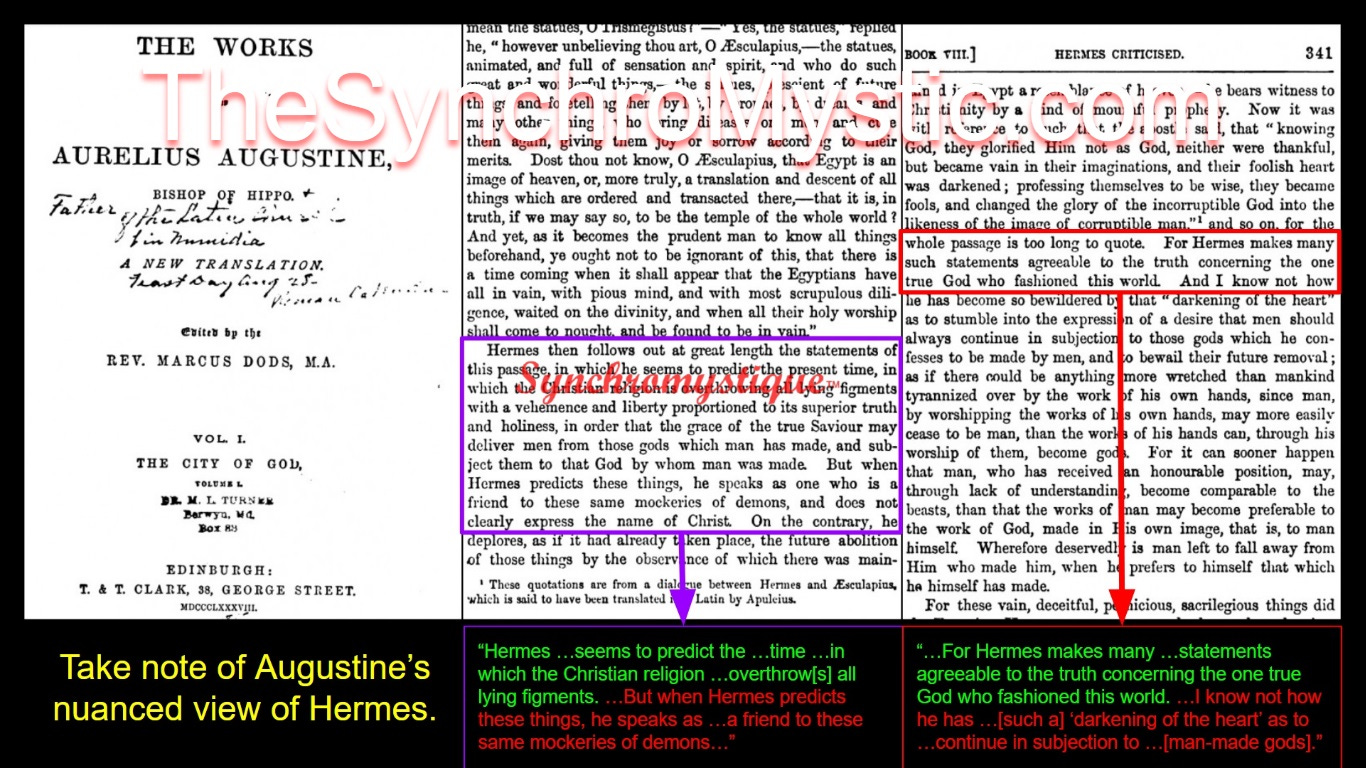
Augustine’s mediating position wasn’t unprecedented. It compares to that of Cyril of Alexandria, who favorably juxtaposed Hermes and Moses – saying the two were generally of “like mind” – with the caveat that “…[Hermes] was not correct and above reproach in everything.”[151]
Still, Augustine clearly “condemned all kinds of magic and classified incantations, charms, necromancy (goetia) and theurgy as demonolatry. He addressed …[several] chapters [in The City of God] against Platonists like Porphyry who insisted on the divine aspects of theurgy.”[152]
Notice that the “red line” for Augustine was anything having to do with sorcery.
“…Augustine of Hippo’s De Civitate Dei (‘City of God’) …taught that pagan gods were demons and that magicians drew upon satanic power whether they realized it or not.”[153]
Hermeticism’s Different ‘Flavors’
Just as Plato’s philosophy ramified – into Middle Platonism and Gnosticism,[154] Neoplatonism (of various sorts, according to me), and Augustinianism – so too was there variation within “Hermeticism.” There are a couple of illustrations of this variety
Take the honorific “Trismegistus” itself, which translates into the phrase “Thrice Great.” For some enthusiasts, Hermes’s triple “greatness” owed to his alleged mastery of alchemy, astrology, and magic.
According to other believers, the title was a take-off of Jesus Christ’s special prerogatives in the Lord’s capacity as prophet, priest, and king – following Moses, Abel, and David, respectively. Quite likely, the two explanations dovetailed in hermetic imaginings.
A second example of Hermeticism’s diversity applies to the story of Hermes’s origins. As mentioned above, Hermes the Three-Times Great emerged from Egyptian myth, where he supposedly started off as the god variously known as Tahuti, Theuth, Thoth, etc.
By the fourth century, A.D., some Greek Hermeticists took “the line of least resistance” and continued to “[depict] Hermes in [these] …unmistakably Egyptian terms…[,] propagat[ing] a version of Trismegistus that was scarcely Hellenized at all except in name.”[155]
On the other hand, there were Hermeticists “who looked at things from a [more thoroughgoing] Greek point of view, [and] …to some extent played down [various] specific Egyptian elements and assumed that, in origin at least, Hermes had [initially] been human.”[156]
Incidentally, during the late 2nd century A.D, Clement of Alexandria accused pagan Greeks – who went the Hermes-as-human route – of atheism. “In his ‘Exhortation to the Greeks’ …[,] He claimed that the pagan gods were nothing but divinised ancient men – thus, fake gods.”[157] But…
If Christian polemicists asserted Hermes’s humanity as an attack on Hermeticism, it invites the further question, what did the Hermeticists themselves believe about Trismegistus’s origins?
Was Plato a Hermeticist?
Plato becomes relevant here because – without coming down clearly on one side or another – he puts into the mouth of Socrates an allusion to “an Egyptian story that… [a] god or godlike man… [whose] name was Theuth…”.[158]
In another place, Plato has Socrates say that Thamus, the mythical Pharaoh of ancient Upper Egypt, was taught the art of writing from Theuth (Thoth). Thamus minimizes his use of it on the supposition that over-reliance on writing – which, in Socratic fashion, we might call “artificial memory” – may destroy one’s natural memory.[159]
Mostly, these references to Hermes are nothing more than one-liners. It’s for this reason that Plato is not usually classified as a “Hermeticist” himself. I’m unaware of any dedicated Plato scholar who represents him that way.
Indeed, the possibility that Plato was a Hermeticist (in the most obvious sense, namely, that he pored over the Hermetica) can, for all intents and purposes, be laid to rest by the philological thesis of 16th-17th-c. French-Swiss scholar Isaac Casaubon.[160] According to Casaubon,[161] the Corpus Hermeticum, which was more or less the definitive articulation of the Hermetic worldview, was written between circa A.D. 100 and 300, rather than in some primordial period.
But this interval, between the second and fourth centuries A.D., was far too late to have been able to produce a text that could have been read by the historical Plato. After all, Plato lived fully 450-650 years before that (between 428 and 347 B.C.)!
The “influential group of Egyptian religious thinkers [known as]…Hermetists …predate the rise of Neoplatonism”.[162] But, as a Hellenistic phenomenon, esoteric Hermeticism can be traced back to around the first century A.D. For example, at that time, “…Plutarch refers to Hermes the Thrice-Greatest…”.[163]
Not only this, but the various Hermetic texts, some seventeen of them, weren’t brought together under a single cover under the Middle Ages in Byzantium.
Of course, until Casaubon, these manuscripts were – classically – attributed to the mythic Hermes Trismegistus in line with the belief that Hermes was a prehistoric figure who was the fountainhead of esoteric and philosophical wisdom.
The tradition crossed into the West via Gemistus Plethon (“Pletho”) who attended some important sessions of the Council(s) of Basel, Ferrara, and Florence. With the financial backing of Cosimo de’ Medici, the Corpus Hermeticum was partially translated into Latin by the 15th-c. Italian humanist Marsilio Ficino and then more fully by Lodovico Lazzarelli.
People like Giovanni Pico della Mirandola mixed the newly Latinized Byzantine Hermeticism with Neoplatonism and Kabbalah, producing a heavily magic-infused variety of occultism.[164]
This Hermetic Neoplatonism became the dominant and “most influential” form “of Platonism… throughout the Renaissance…”.[165] Frances Yates makes this abundantly clear. She refers to a “Hermetic-Cabalist [sic] core which modern scholarship has revealed within Renaissance Neoplatonism.”[166] And she notes the interconnexion with magic. For example, she states that Marsilio Ficino trafficked in “Hermetic magic,” while Giovanni Pico della Mirandola was trained in “Cabalist magic”.[167]
According to Yates, Pico’s Renaissance project, self-consciously and arrogantly sought a “synthesis of all philosophies,” and concerned itself with “…magic, drawn from Hermetic sources; …Platonic and Neoplatonic texts; …Orphic hymns and Chaldaean oracles…”.[168] What interested Yates was the fact, which she said was little acknowledged or explored at the time of her writing, that Pico’s “was also a religious movement …believed to be compatible with Christinaity.”[169] “Pico …intended to create a harmonious synthesis of Plato, Aristotle, and Christianity, but also to reinterpret the latter through ‘Kabbalah and magic’…”.[170]
All that said, some contemporary scholars now challenge “…Frances Yates’s belief that Hermeticism’ was an identifiable movement or even ‘ideology’.”[171] Regardless, the point is…
Ficino, Pico, and company wanted to be able to claim Plato as much as – and perhaps even more than – they wanted to claim Augustine. This compromises their objectivity. For that reason alone, we can no more count on the accuracy of occultist claims about Plato than we can the same crowd’s claims about the Bishop of Hippo. In my view, they were as mistaken to think of Augustine as an ally of “Christian Cabala” as they were to count Plato as a friend to Hermetic Neoplatonism.
Hermeticism: Present in Gnosticism & Neoplatonism
What we want to know is: What did Plato believe? What did Plato’s earliest interpreters say?
Admittedly, it may well be a fact that Plato’s earliest interpreters were themselves, more often than not, Hermeticists. Gnosticism and Neoplatonism were cross-pollinated with Hermeticism.
For example, the alchemist and Gnostic philosopher Zosimos of Panopolis (fl. ca. A.D. 300) was as convinced a Hermeticist as the magician and Neoplatonist Iamblichus. Moreover, the “extensive” (Gnostic) Nag Hammadi collection also included volumes of “Hermetica.”[172]
Furthermore, important Gnostics, “including …Valentinus …drew on Hermes along with Plato and Aristotle in formulating their doctrines.”[173]
The Neoplatonist Iamblichus wrote about Hermeticism in such works as De Mysteriis Ægyptiorum (“On the Mysteries”)[174] as well his Commentary on Plato’s Timæus.[175]
The ancient version of “Neoplatonism” was similar to its Renaissance counterpart in that its “…signature project” was also aiming at “a grand synthesis …[that] absorbed, appropriated, and creatively harmonized almost the entire Hellenic tradition of philosophy, religion, and even literature – with the exceptions of Epicureanism, which [it] roundly rejected, and the thoroughgoing corporealism of the Stoics.”[176]
A major difference, however, was that the earliest proponents of ancient Neoplatonism, were variously indifferent to, ignorant of, or set against Christianity;[177] whereas, in the Renaissance, the major (Western) Neoplatonists were (supposedly) Christians.[178]
On the other hand, regrettable as it may be, “the Hermetica …[was] widely read by Christians” in the relevant period.[179] This leads Fowden to note that this fondness for Hermes Trismegistus — and the attending syncretistic thinking — “reflected a broader consensus”[180] than what could be explained merely by Neoplatonism.
Syncretism shows up in Manichaeanism as well. Evidently “…Mani claimed as heralds of his message Hermes of Egypt, Plato the Greek, and ‘Jesus who appeared in Judaea’.”[181] But…
As far as goes the influence of Hermeticism on the seminal, Plotinian form of Neoplatonism, Wildberg merely says, number one: “…[I]t is not impossible that Gnosticism (which Plotinus vehemently opposed) as well as the writings circulating under the name of Hermes Trismegistus confirmed or even informed his metaphysical monism.”[182] And, number two: “[T]he Neo- platonists shared with the Stoics and the Hermetists …[the belief that] reality, in all its cognitive and physical manifestations, depended on a highest principle which is unitary and singular.”[183]
What Can Plato’s Treatment of Atlantis Teach us?
But, to get a clearer picture of why, if he was not a Hermeticist, Plato would mention the Hermes lore at all, I would like to suggest comparing and contrasting the scattered references to Plato’s treatment of fabled Atlantis.[184]
Plato’s Atlantean material is concentrated in two of his so-called “late-period” dialogues, Timæus and Critias. I think it’s both fair and obvious to say that Plato’s treatment of the story of Atlantis is more deliberate and sustained than anything he said about Hermes. Notwithstanding this, writers – both ancient and modern – are divided over the question of whether Plato intended it to be a fictional-metaphorical or historical-literal account of the ill-fated island.
Plato’s early commentator Crantor of Soli is typically said to have been in the historico-literalist camp. On the other hand, Plato’s most illustrious student, Aristotle, is oft-cited as an example of a thinker who understood Plato to have been writing non-literally.
This strikes me as revealing. The Atlantean material, despite being fairly clearly set forth in what amounts to several pages of text in modern translations,[185] has been given various, conflicting interpretations over time.
In any event, disputes over how to understand “…the philosophical Hermetica” (including the fleeting, precursory references to Hermes we find in Plato’s dialogues) fit into “the long-standing” and far-reaching “controversies about the interpretation of Plato” in general.[186]
In other words, this confusion is sort of par for the course for those aspects of Plato that lie behind his philosophical “core.” Only recall the fact that both Gnostic-dualists and Neoplatonic-monists appealed to Plato as the authority for their – disparate – metaphysics. However…
On the face of it, I’d submit that there’s at least as much reason to take Plato’s Hermes references metaphorically as there is to take his Atlantis references that way. And he seems to have taken far more time and energy retelling the story of Atlantis than gesturing toward Hermes. Of course, you could always take Plato literally in both! But, I’d say the literal reading is far more plausible in the case of Atlantis. So, if you’re inclined to take Plato metaphorically on Atlantis, then – a fortiori – you’d think of his “Hermeticism” as merely figurative.
Finally, I’d point out that I couldn’t find even a single mention of “Hermes” (Mercury, Thoth, etc.) or Hermeticism in any of the overviews of Plato or Platonism in the Catholic Encyclopedia,[187] Encyclopedia Britannica,[188] nor any of several articles on either the Internet[189] or Stanford encyclopedias of philosophy.[190] I don’t say that my search was exhaustive. And, admittedly, the inclusion or omission of certain material might simply reflect the biases of the article authors.
But, for comparison purposes, there are four (4) such such explicit references in Iamblichus’s Stanford Encyclopedia of Philosophy entry,[191] five (5) in the one for Giovanni Pico della Mirandola,[192] and twelve (12) for Marsilio Ficino.[193]
My thought is that, had Plato been anywhere near as wrapped up with Hermeticism as some of his ancient and Renaissance Neoplatonic interpreters, surely, one of these basic entries would have at least alluded to it.
Copleston, in the first volume of his philosophical survey, only brings up Hermes in the context of Neopythagoreanism, writing: “In connection with Neo-Pythagoreanism stand the so-called Hermetic Literature and the Chaldaic [sic] Oracles. The former is the name given to a type of ‘mystical’ literature that arose in the first century A.D. and that may, or may not, owe a debt to previous Egyptian writings. The Greeks found in Hermes the Egyptian god Thoth, and their appellation ‘Hermes Trismegistos’ is derived from the Egyptian ‘Great Thoth.’ But whatever be the truth concerning the supposed influence of Egyptian tradition on the Hermetic literature, the latter owes its main contents to earlier Greek philosophy, and seems to have been indebted particularly to Poseidonius. The fundamental notion expressed in this literature is that of salvation through knowledge of God – gnosis – a notion that played a great part in ‘Gnosticism.’ A similar doctrine of salvation formed the content of the Chaldaic Oracles, a poem that was composed about A.D. 200, and which, like the Hermetic literature, combines Orphic-Pythagorean, Platonic and Stoic elements. In its close relation to the religious interest and needs of the time, and in the work of preparing the ground for Neo-Platonism, Neo-Pythagoreanism resembles Middle Platonism…”.[194]
On a similar wavelength, in the Internet Encyclopedia of Philosophy’s article “Middle Platonism,” author Edward Moore references “Hermes” (or a cognate word) full eighteen (18) times.[195] But in section #7, titled “‘Esoteric’ Platonism,” where the author treats “Hermeticism,” “Gnosticism,” and “The Chaldaean Oracles” (in that order), Plato himself is only mentioned once. This is when he’s describing the Hermetic text known as the Poimandres.[196] Moore calls this “[t]he most important treatise in …[the Corpus Hermeticum] …for the history of Platonism),” and he remarks that the unknown author (of the Poimandres) was “dependent on both Plato’s Timaeus and the book of Genesis (especially as these two works were interpreted by Philo…).”[197]
As far as this goes, it’s excellent evidence that Hermeticism was Platonic. Among other things, however, it fails to show that Plato (the man) was a Hermeticist.
There are some commentators who propose that Plato had intended to round out the Timæus and the Critias into a trilogy with a third installment, that presumably would have been titled Hermocrates.[198] This is by inference from a line in Critias, where Plato depicts Socrates promising Critias that he will be afforded the same opportunity to speak that is also granted Hermocrates and Timaeus.[199] (Critias, Hermocrates, Socrates, and Timaeus are all characters in the two dialogues we do have. And Hermocrates never really gets a chance to speak. Therefore, it’s supposed, Plato had planned to write a final dialogue to complete the series.)
That Plato considered writing, or resolved to write, a dialogue titled Hermocrates (which name, by the way, supposedly means “gifted by Hermes”[200]) is purely hypothetical. To say that we have any idea what Plato would have written is, in my opinion, sheer speculation and will reflect the presuppositions of the person making the guesses – rather than tell us anything about Plato.
In short, I don’t find much reason to consider Plato a Hermeticist himself. It’s one thing to see a link between Hermetic and Neoplatonic thought (the two come into close approach[201]). But Gnosticism, Hermeticism, Neoplatonism, and Platonism differ.
We needn’t seek a Hermeticist under every occult bush any more than we need to blame George Soros for every societal ill.
And, insofar as Saint Augustine distanced himself from the excesses of all four systems, I (for one) don’t find anything off-putting about classifying him as Platonic or Neoplatonic when the evidence warrants it – with the qualifier “Christian” duly affixed, of course.
Appendix A: ‘Justified, True Belief’
The canonical text (locus classicus) is Theætetus (201c–d), where Plato says knowledge is “true belief with an account (logos).”[202]
Notice, however, that the Justified-True-Belief (JTB) account makes no mention of “certainty.”
There is a slight difference, therefore, with Augustine in that some writers hold that the saint “was concerned with the quest for certainty. To him, nothing less than certain, eternal, and absolute truth could provide an adequate foundation for one’s life.”[203]
Augustine opposed the total skeptics of his day. This kind of skeptic claims that literally nothing is knowable. But, if there is even one piece of knowledge, then total skepticism is false – in the same way that “All swans are white” is false if you find even a single black swan.
In this regard, note that one of Augustine’s principal axioms was, in Latin, Si fallor sum, which means “Even if I’m wrong, I exist.” Anticipating René Descartes’s more famous Cogito; ergo, sum (“I think; therefore, I am”), Augustine reasoned that non-existing people can’t be wrong about anything. Therefore, no matter how wrong I may be on other matters, I can – and should – always affirm that “I exist.” And I won’t – and can’t – be wrong about that.
Elsewhere, Augustine anticipates Immanuel Kant in holding that knowledge is a combination of something innate (the Forms implanted by God) and something from the world (namely, sensations of physical objects). Unlike Kant, Augustine holds that God intermediates all this.
Example of a JTB
Jane believes that “the needles on her Christmas tree are green.” Very roughly, on the JTB account, Jane knows that “the needles on her Christmas tree are green” just in case the needles are (in fact) green, and she has a good reason for believing so. Suppose that her tree is a Norway Spruce (Picea abies). Well, then, the needles are green. And let’s say Jane’s vision is 20/20; the lighting around the tree is sufficient; and her senses are not impaired (by alcohol or drugs, etc.). Given all this, ordinarily – that is, say, outside of a philosophy classroom – we’d happily grant that Jane knows her Christmas tree is green. That’s knowledge as JTB.
Incidentally, the Platonic JTB theory arguably undergirds one of Augustine’s famous dictums, often rendered Credo ut intelligam.[204] He wrote: “A man says to me: ‘I must understand that I may believe.’ I answer: ‘Believe that you may understand.’”[205] In other words, Augustine represents belief – or, if you like, faith – as “an indispensable …precondition of knowledge.”[206] This is isomorphic with JTB. You could say that, for Augustine – when it came to theological matters, anyway – understanding was justified, true faith. This is modeled on Platonism.
Appendix B: On Aquinas’s Alleged Alchemy
As an illustration of an occultist making a farfetched claim, consider the case of St. Thomas Aquinas. In his The Complete Idiot’s Guide to Alchemy,[207] self-styled “alchemist” Dennis William Hauck, writes the following.
By the 13th century, “…Europe was producing its own alchemists. The first of these was a Swabian monk by the name of Albertus Magnus (Albert the Great), who lived from 1193 to 1280. …[H]e was called ‘Doctors Universalis’ …and became an adept in alchemy… Albertus taught at several universities, …and initiated other Europeans into alchemy. One of his students was St. Thomas Aquinas, who was one of the world’s greatest philosophers. …[Aquinas] …is …thought to have created the influential text Aurora Consurgens, which is an alchemical interpretation of the ‘Song of Songs.’
“Aquinas was a prolific writer, but after having a mystical experience in December 1273, he never wrote another word. As a result, several of his most important works end abruptly in the middle of a paragraph. [sic] He told his fellow monks that during meditation he had seen a vision of Sophia, the divine feminine principle suppressed by the patriarchal Church. He said he had found the Philosopher’s Stone in the wisdom of Sophia, and after that profound experience, everything he had written seemed worthless, like so much straw in comparison.”[208]
Aquinas is widely reported to have had a mysterious vision on St. Nicholas Day, December 6, 1273. For example, the Catholic Encyclopedia, in its article titled “St. Thomas Aquinas,” explains: “On 6 December, 1273, he laid aside his pen and would write no more. That day he experienced an unusually long ecstasy during Mass; what was revealed to him we can only surmise from his reply to Father Reginald, who urged him to continue his writings: ‘I can do no more. Such secrets have been revealed to me that all I have written now appears to be of little value’... . The ‘Summa theologica’ had been completed only as far as the ninetieth question of the third part (De partibus poenitentiæ). Thomas began his immediate preparation for death.”[209]
In her commentary on the Aurora Consurgens, Swiss psychoanalyst Carl Jung’s acolyte Marie- Louise von Franz stated: “As there are no authenticated reports to inform us of the content of that last, evidently overwhelming vision, we cannot explain why he broke off his work…”.[210]
Von Franz notes the oddity of “[t]he …fact that …biographers state that …[Aquinas] interpreted the Canticles to the monks of the monastery on his deathbed” given that “[t]he Canticles have always fascinated the mystics of the Church (Honorius of Autun, Gregory the Great, Teresa, John of the Cross, the Victorines, to name but a few), and it is no accident, either, that medieval alchemy, beginning with Aurora, made particular use of their symbolism.”[211] And she expresses her “personal conjecture …that Aurora …[constitutes] the last precious words of St. Thomas … which were not preserved officially, …but were transmitted as an ‘apocryphon’ …”.[212]
On the other hand, the standard practice of most scholars – outside of devotees of Jungianism or alchemy – seems to be to attribute the authorship of the Aurora to an unknown author under the byline “Pseudo-Aquinas.”
Von Franz’s stylistic conclusions seem to depend heavily upon, and assume the truth of, the key conscious-unconscious distinction so prominent in depth psychology. She writes: “When the author expresses himself more or less consciously, he does …write in the style of St. Thomas. But when, swallowed up in the unconscious, he speaks of his inner experiences, he employs a compensatory, excited language which is not in agreement with St. Thomas’s usual style.”[213]
Putting aside the question of the objectivity of von Franz’s carving up of the text into those parts that are supposedly expressions of the author’s conscious mind and those that are allegedly utterances of the unconscious, one obvious problem is that, according to her, portions of the Aurora Consurgens are given in “excited language.” Therefore, von Franz’s analysis is essentially an admission that, whatever percentage you assign to these passages – whether 25% of the whole, or 50%, 75%, etc. – that same percentage immediately becomes the portion of the text “which is not in agreement with St. Thomas’s usual style.”
Not only this, but the earliest manuscript of the Aurora Consurgens dates only as far back as the “15th century” (ca. 1400-1410).[214] Other manuscripts are more recent (early 16th century) still.[215] You will recall that Aquinas died in 1274.
Finally, going back to Hauck, I note that he gives no citations of any kind – including for the crucial claim that Aquinas supposedly admitted to an encounter with the “divine feminine.” This opacity is especially problematic since online sources (of unknown reliability) propose alternate accounts. According to one: “Pious tradition holds that Aquinas received a foretaste of the Beatific Vision, a mere glimpse of eternity in Heaven, where God revealed to him that all his efforts to describe Him fell so far short he resolved to never write again.”[216]
Apart from this, it seems quite unbelievable that – had Aquinas become suddenly convinced of his own supposedly deep-seated errors regarding the very nature of God – St. Thomas wouldn’t have made some clear statement of correction. As it stands, his lament that what he had written was “merely straw” is perfectly compatible with the truth of his efforts, fledgling though he may have discovered that they were.
(Note #1: I added a third, “Appendix C,” but the formatting misfired. So, please find it — if you wish! — following footnote #216, below.)
(Note #2: This article may contain Amazon-affiliate links. Your purchases through Amazon, using our links, may yield commissions which go toward funding our research and writing efforts. Your patronage – through Amazon, Substack, YouTube, etc. – is always greatly appreciated. Thank you!)
[1] John Chapman, “Doctors of the Church,” Catholic Encyclopedia, vol. 5, New York: Robert Appleton Co., 1909, <http://www.newadvent.org/cathen/05075a.htm>; citing Pope Boniface VIII, Decretals, chapt. Gloriosus (“Glorious”), De relique et veneratio sanctorum (“Of the Relics and Veneration of the Saints”), book six (sexto), §III, par. 22, 1298. The other three doctors were: Augustine’s best-known teacher, and Bishop of Milan, St. Ambrose (who lived circa 339-397); Augustine’s contemporary, and famed created of Latin Vulgate Bible translation, St. Jerome (ca. 342-420), and the later Pope Saint Gregory I, “the Great” (ca. 540-604), remembered for (among other things) his liturgical reforms and missionary efforts among the Anglo-Saxons, and for whom the distinctive, Catholic “Gregorian Chant” musical style was named.
[2] Michael Hoffman, comment, Nov. 13, 2024; on Matthew J. Bell, “Neoplatonism: A Historical and Philosophical Overview,” The SynchroMystic, Substack, Oct. 20, 2024, <https://matthewjbell.substack.com/p/neoplatonism/comment/77083470>.
[3] Jason Louv, John Dee and the Empire of Angels, Rochester, Vt.: Inner Traditions, 2018, p. 60.
[4] Ronaldo Guilherme Gurgel Pereira, The Hermetic Λόγος [Logos]: Reading the Corpus Hermeticum as a Reflection of Graeco-Egyptian Mentality, doctoral dissertation, dept. of philosophy and history, Basel, Switzerland & Rio de Janeiro, Brazil: Univ. of Basel, 2010, p. 100, <https://edoc.unibas.ch/1270/1/Diss.Ronaldo.Nov.2010.pdf>.
[5] Ibid., p. 191.
[6] If you think that it’s a mistake to throw them together, then you’ll probably say the two systems are conflated. If you think they’re so closely allied as to be hard to distinguish, then you might say the terms are being used synonymously.
[7] Of course, “[t]he name Neoplatonism is a …modern invention, designed to distinguish the thought of Plotinus and his followers from the older views of Plato and the intermediate position of thinkers now called Middle Platonism.” Ronald H. Nash, Life’s Ultimate Questions: An Introduction to Philosophy, Grand Rapids, Mich.: Zondervan, 1999, p. 142, footnote #1.
[8] Additionally, we shouldn’t neglect Latin thinkers such as Cicero, who specifically had produced an important – but incomplete – translation of Plato’s cosmological dialog Timæus. Of course, I'm also ingoring a few others. One of them is “Ambrose, the Bishop of Milan, [who,] in his preaching gave Augustine exposure to the allegorical and Platonising interpretation of the Scriptures. …This impressed Augustine, who had not been impressed by the literal interpretation of Scripture that had been practised by his mother, Monica. Augustine was awakened to the philosophical life by reading Cicero, but the Neoplatonists most decisively shaped his philosophical methods and ideas. To them he owed his conviction that beyond the world of the senses there is a spiritual world. Augustine began serious study of Neo-Platonism in Milan soon after he first met Ambrose. This reading may have included writings by Plotinus (205 - 270) himself.” (N.a., “1105 Neo-Platonism,” n.d., <http://augnet.org/en/life-of-augustine/in-italy/1105-neo-platonism/>.) But, with Ambrose comes a caveat, and a third name. “Though Augustine took on Ambrose as a spiritual father, and despite Catholic tradition in regard to the conversion of Augustine, it was not Ambrose who was the most influential role in Augustine’s conversion; it was Simplician who nurtured Augustine’s faith. Simplician was the mentor of Ambrose, and would later be Ambrose’s successor as the Bishop of Milan. ...Simplician introduced Augustine to Christian Neoplatonism. This belief was very important to Augustine as he later became very interested in the writing of Plotinus." (Joe Aaron Gafford II, “The Life and Conversion of Augustine of Hippo,” Tenor of Our Times, vol. 4, article 4, Spring 2015, p. 21, <https://scholarworks.harding.edu/cgi/viewcontent.cgi?article=1050&context=tenor>.)
[9] If there’s an argument against the broader use of the word “Neoplatonism,” it might be sketched as follows. If all thinkers who borrowed from Plato and followed him in time are “Neoplatonists,” then Philo of Alexandria and Plutarch – who borrowed from Plato and followed him in time – are Neoplatonists. But, Philo of Alexandria and Plutarch are (usually considered) Middle Platonists – and Middle Platonism and Neoplatonism are typically distinguished. Therefore, not all thinkers who borrowed from Plato and followed him in time are “Neoplatonists.” I’m sympathetic! I was simply trying to treat the entire range of Platonic thought with an economical set of labels.
[10] Apuleius and Plutarch are examples of thinkers typically classified as Middle Platonists.
[11] Plotinus explains multiplicity via emanation; Augustine has the resources of Trinitarian Christianity – where multiplicity (by way of a “three-in-one” God) comes in at the ontological ground level.
[12] There are two (2) “parts” to human persons: bodies and souls. But there are three (3) “parts” to the soul. One subpart (our reason) is rational. The other two – appetites (or passions) and spirit – are irrational (according to Plato), and must be reigned in by the rational part. The metaphor Plato develops is of a charioteer (reason) driving a black horse (appetite) and a white horse (spirit). See Phaedrus, 246abff.
[13] Birger A. Pearson, "Gnosticism as Platonism: With Special Reference to Marsanes…," Harvard Theological Review, vol. 77, no. 1, 1984, p. 56; <https://www.jstor.org/stable/1509519>. Italics added. “From ancient times it has been averred that the Gnostics derived their basic ideas from the Greek philosophers, especially Pythagoras and Plato.” Ibid., p. 55.
[14] Or Dēmiourgos, literally, “one who works for the people,” Brian P. Copenhaver, Hermetica: The Greek Corpus Hermeticum and the Latin Asclepius in a New English Translation, with Notes and Introduction, Cambridge (U.K.): Cambridge Univ. Press, 1995, p. 104. As a craftsman or workman, the Demiurge figure hearkens back to “gods” such as Hephæstus (Lat. Vulcan) as well as the Egyptian deity Ptah.
[15] “…[I]n the …way as [John] Locke …[is] known as the empiricist among philosophers, and Hume as the sceptic, and Schopenhauer as the pessimist, I would choose, if I were to merit a tag, to be known as the agnostic. ” Bryan Magee, Ultimate Questions, Princeton and Oxford: Princeton Univ. Press, 2016, p. 124.
[16] Bryan Magee, The Story of Philosophy, London: Dorling Kindersley, 2001, p. 50. Interestingly, after noting Plato’s decisive influence on St. Augustine, Fr. Frederick Copleston goes on to say: “Indeed, although St. Thomas Aquinas, the greatest of the Schoolmen, adopted Aristotle as ‘the Philosopher,’ there is much in his system than can be traced back ultimately to Plato rather than to Aristotle.” A History of Philosophy, vol. 1, New York: Doubleday, 1993, pp. 261-262. This should also be understood against the further, biographical fact that “Plato’s personal influence may [also] be seen from the impression he made on his great pupil, Aristotle. …Aristotle gradually separated himself from some of the Platonic doctrines …; but, in spite of his growing interest in empirical science, he never abandoned metaphysics or his belief in the good life culminating in true wisdom – in other words, he never abandoned altogether the legacy of Plato, and his philosophy would be unthinkable apart from the work of his great predecessor.” Ibid., p. 261.
[17] Eugène Portalié, “Life of St. Augustine of Hippo,” Dave Ofstead, transcr., Catholic Encyclopedia, vol. 2, New York: Robert Appleton Co., 1907, <http://www.newadvent.org/cathen/02084a.htm>.
[18] Christian Tornau, “Augustine of Hippo,” Edward N. Zalta & Uri Nodelman, eds., Stanford Encyclopedia of Philosophy, Summer, 2024, <https://plato.stanford.edu/archives/sum2024/entries/augustine/>.
[19] Nash, op. cit., p. 140. Of course, if we look to writers who are more interested in the occult (even if they are not “occultists” per se, themselves), like Frances Yates, these attestations multiply. Yates, for instance, offhandely says of the system of Ramon Lull (or Raimundo Llull) that it “is a kind of Platonism” and that “Lull belongs into the tradition of medieval Christian Platonism, based primarily on Augustine…”. The Occult Philosophy in the Elizabethan Age, London and New York: Routledge, 2001, p. 14.
[20] Nash, op. cit., pp. 143-144.
[21] Book VII, 23-26; cf. Pereira, op. cit., p. 191, n. 345.
[22] Nash, op. cit., p. 144.
[23] Magee, op. cit., p. 51.
[24] As noted in William F. Lawhead, The Voyage of Discovery: A Historical Introduction to Philosophy, Belmont, Cal.: Wadsworth Thomson Learning, 2002, p. 114, Justin’s basic position was that “all truth is God’s … truth.” Ibid.. He wrote, concerning pagan philosophy, that “on some points we [Christians] teach the same things as the poets and philosophers whom you [pagans] honour.” Ibid.; citing Justin Martyr, Apology, I. Rudolf Steiner apparently thought that Augustine had said something similar. Steiner stated: “‘Christianity did not begin with Christ; there were Christians before Christ, only they were not so called.’ This is what St. Augustine says.” Steiner, “Cosmic Christianity and the Impulse of Michael (GA 240),” lecture VI, London, Aug. 27, 1924; archived at <https://rsarchive.org/Lectures/GA240/English/APC1953/19240827p02.html>. Of course, he gives no citation. Possibly, Steiner is in contact with some authentic quotation that I have been unable to validate. Probably, he’s just misattributing Justin Martyr’s opinion to Augustine.
[25] For Justin, too, however, “even Platonic philosophy, the spiritual high point of Greek thought, fell short of what the gospel of Christ had to offer.” Lawhead, op. cit., p. 114.
[26] Of course, there were also spurious attributions, such as the claim that “Plato the glorious” once “said… ‘His [i.e. God’s] son, Christ, will be born of the Virgin Mary, and I believe in him’,” quoted in Fowden, p. 181, n. 132; citing Theosophia Tubingensis, F. Gr. Th. 221.13-14, and “Mandeville’s Travels,” Letter 2.237.
[27] Lawhead, op. cit., p. 115.
[28] Clement of Alexandria thought that “all truth is one and all wisdom is from the Lord” – whether “in Plato” or in “the words of the prophets”, it’s all “from God” since the Logos is the light of truth for everyone. See Lawhead, op. cit., p. 115. For more on the “Alexandrian School of Theology” in our “Deep Dive.”
[29] Faith Brown, “The Christian Platonist Tradition,” The Bell Tower, Hope College, Apr. 27, 2022, <https://blogs.hope.edu/belltower/bell-tower-volume-1-issue-1/the-christian-platonist-tradition/> .
[30] Some philosophers distinguish Realism about such Universals from Realism about abstract objects. In this way of thinking, “Realism,” strictly so-called, is “about universals [and] is the doctrine that there are universals,” while “Platonism” names “the doctrine that there are abstract objects.” Gonzalo Rodriguez-Pereyra, “Nominalism in Metaphysics,” Stanford Encyclopedia of Philosophy, Edward N. Zalta, ed., Summer, 2019, <https://plato.stanford.edu/archives/sum2019/entries/nominalism-metaphysics/>. Growing out of this distinction, “there are [likewise] (at least) two kinds of Nominalism, one that maintains that there are no universals and one that maintains that there are no abstract objects. …[The former] kind of Nominalism asserts that there are particular objects and that everything is particular, and the other asserts that there are concrete objects and that everything is concrete.” Ibid. Incidentally, “the two forms of nominalism are independent.” Ibid. A thinker could be “a nominalist in one sense but not in the other…”. Ibid.
[31] Lawhead, op. cit., p. 195. “If logic cannot tell us about God and we …only know what we directly experience, then instead of trying to understand God conceptually, we should …experience him.” Ibid.
[32] Examples would be the Dominican Meister Eckhart and the Beguine Marguerite Porete.
[33] Portalié, “Life of St. Augustine of Hippo,” loc. cit.
[34] De Immortalitate Animæ.
[35] See Phædo, roughly between 78b-80c. For an accessible reconstruction of the argument, with context, see Thomas V. “Tom” Morris, Philosophy for Dummies, New York: Hungry Minds, 1999, p. 219.
[36] Copleston, op. cit., p. 211; citing, in footnote #1, St. Augustine, Homo anima rationalis est mortalis atque terreno utens corpore, “Man is a rational soul, mortal and using an earthly body,” (De Moribus Ecclesiæ Catholicæ et de Moribus Manichæorum, vol. I, chapt. 27, par. 52). Cf. Richard Stothert, transl., <https://www.documentacatholicaomnia.eu/03d/0354-0430,_Augustinus,_De_Moribus_Ecclesiae_Catholicae_et_de_Moribus_Manichaeorum_%5BSchaff%5D,_EN.pdf>, p. 71, as paginated (p. 28 digitally).
[37] “Sed anima rationalis inter eas res quae sunt a Deo conditae, omnia superat; et Deo proxima est, quando pura est.” Augustinus, “Quæstio XLVI: De ideis,” De Diversis Quæstionibus, loc. cit.
[38] Armstrong and Blumenthal, loc. cit. For Augustine, the soul connects humans with the Divine Ideas.
[39] New International Version.
[40] By itself, this verse might also (and for similar reasons) be understood as evidence for the eventual annihilation of the souls of the damned, rather than for their everlasting torment in hell. Many Christians here offer additional evidence – such as Matthew 25:26, where Jesus (in the “Parable of the Sheep and the Goats”) says evildoers will suffer “eternal punishment.” Other passages can be added, including – sticking to the Gospel of Matthew – chapter 25, verse 41, where Jesus talks about “eternal fire.”
[41] See Morris, op. cit., p. 180.
[42] Rickabaugh, op. cit., p. 3.
[43] William Lane Craig, “Doctrine of Man,” “podcast” transcript, Defenders, series 2, part 8, Nov. 4, 2013, <https://www.reasonablefaith.org/podcasts/defenders-podcast-series-2/s2-doctrine-of-man/doctrine-of-man-part-8>; citing Alex Rosenberg, The Atheist’s Guide to Reality: Enjoying Life Without Illusions, New York: W. W. Norton and Company, 2011.
[44] As cited infra.
[45] See, Brandon L. Rickabaugh, “Responding to N.T. Wright’s Rejection of the Soul,” forthcoming, Heythrop Journal, 2016, <https://philarchive.org/archive/RICRTN> and <http://onlinelibrary.wiley.com.ezproxy.baylor.edu/journal/10.1111/(ISSN)1468-2265>, who also includes Warren Brown, Joel Green, and Nancy Murphy in the same group.
[46] Wright warns against unqualified use of “the word ‘dualism’ …,” noting that there are “no fewer than ten significantly different uses to which the word ‘dualism’ …[is] being put within biblical studies, …and point[ing] out the muddle which this linguistic and conceptual slipperiness has occasioned.” N. T. Wright, “Mind, Spirit, Soul and Body: All for One and One for All Reflections on Paul’s Anthropology in his Complex Contexts,” paper delivering to the Society of Christian Philosophers: Regional Meeting, Fordham Univ., March 18, 2011, <https://ntwrightpage.com/2016/07/12/mind-spirit-soul-and-body/>.
[47] Ibid.
[48] Ibid.
[49] See Plato’s Timæus, e.g., 41e, where souls are associated with various stars; and 42b-42c, just souls return to their stars, while unjust souls reincarnate on earth. In the same dialogue, at 91a, reincarnation is connected to sexual intercourse.
[50] See, e.g., Christian Tornau, “Augustine of Hippo,” Edward N. Zalta and Uri Nodelman, eds., Stanford Encyclopedia of Philosophy, Summer 2024, <https://plato.stanford.edu/archives/sum2024/entries/augustine/>.
[51] This is to say that Augustine championed Realism – for example, against what would much later, especially under the influence of William of Ockham, become known as “Nominalism.”
[52] “Sunt namque ideae principales formae quaedam, vel rationes rerum stabiles atque incommutabiles, quae ipsae formatae non sunt, ac per hoc aeternae ac semper eodem modo sese habentes, quae in divina intelligentia continentur. Et cum ipsae neque oriantur, neque intereant; secundum eas tamen formari dicitur omne quod oriri et interire potest, et omne quod oritur et interit.” Augustinus, “Quæstio XLVI: De ideis,” De Diversis Quæstionibus, <http://www.monumenta.ch/latein/text.php?tabelle=Augustinus&rumpfid=Augustinus,%20Varia,%20De%20Diversis%20Quaestionibus,%20%20%2046>.
[53] Ibid. For his part, “Plato …[had been so] confident [that] we could know the Forms” he leveraged his metaphysical apparatus into epistemology to fight “the skepticism of the Sophists.” Lawhead, op. cit., p. 100. Augustine likewise opposed the skepticism of his day. As a historical matter, a corrosive strain of skepticism took root in Plato’s school, called the Academy, after he died. These skeptics drew inspiration and resources from Plato. For example, in Plato’s dialogue Meno (80d-86c), Plato articulates the argument that it’s impossible to come to know anything. For any proposition, p, either you already know p or you don’t. If you already know p, then you can’t “come to know it” (or, in any event, there’s no need) because all the relevant information is already in your mind. But if you do not already know p, that is, if the relevant information is not in your mind, then you wouldn’t know what to look for or wouldn’t recognize it if you found it. Plato’s answer was his doctrine of Anamnesis or “Recollection.” Plato further articulated what (came to be known as) the Justified True Belief (JTB) account of knowledge. (See Appendix A.)
[54] Ibid. These are rationes æternæ, the eternal ideas of all things that exist in the Divine Word (Logos).
[55] Even though Aquinas further modified the notion and taught “that there is a plurality of [them] in the Divine Mind.” According to Copleston, A History of Philosophy, op. cit., p. 297, n. 2. Augustine’s argument was compelling. He asked: “[W]ho dares to say that God created all things irrationally? And if it cannot be rightly said …, [then] it remains that everything must be founded on reason. Nor [was] man [created] by the same reason as a horse… Therefore each one was created for its own reasons. But where are these reasons supposed to be, except in the very mind of the Creator? For he did not look at anything placed outside himself …to [create] …what he established … [So,] these reasons of all things created …are contained in the divine mind. [But] …nothing can be in the divine mind but [that which is] eternal and unchangeable…”. “[Q]uis audeat dicere Deum irrationabiliter omnia condidisse? Quod si recte dici vel credi non potest, restat ut omnia ratione sint condita. Nec eadem ratione homo, qua equus: hoc enim absurdum est existimare. Singula igitur propriis sunt creata rationibus. Has autem rationes ubi arbitrandum est esse, nisi in ipsa mente Creatoris? Non enim extra se quidquam positum intuebatur, ut secundum id constitueret quod constituebat: nam hoc opinari sacrilegum est. Quod si hae rerum omnium creandarum creatarumve rationes in divina mente continentur, neque in divina mente quidquam nisi aeternum atque incommutabile potest esse; atque has rerum rationes principales appellat ideas Plato: non solum sunt ideae, sed ipsae verae sunt, quia aeternae sunt, et eiusmodi atque incommutabiles manent; quarum participatione fit ut sit quidquid est, quoquomodo est.” Augustinus, “Quæstio XLVI: De ideis,” De Diversis Quæstionibus, loc. cit.
[56] See Robert Adamson, “Bonaventura, Saint,” Encyclopædia Britannica, vol. 4, 1911, <https://en.wikisource.org/wiki/1911_Encyclop%C3%A6dia_Britannica/Bonaventura,_Saint>.
[57] Augustine, The City of God, Marcus Dods, transl., eBook, Moscow, Idaho: Roman Roads Media, p. 99, <https://files.romanroadsstatic.com/materials/romans/nicene-christianity/City%20of%20God.pdf>. N.B. I cite this edition for expedience only. (It’s available for free as a .pdf download at the above link.)
[58] Ibid., p. 100. Additionally, AugNet.org, which bills itself as a “website about St Augustine of Hippo and the Order of Saint Augustine,” tells us that “Augustine recognised Neo-Platonism as the closest pagan philosophy to the beliefs of Christians. This was mainly because its followers were not materialists as Epicureans and Stoics were, but held that there are immaterial or spiritual realities.” (N.a., “1105 Neo-Platonism,” n.d., <http://augnet.org/en/life-of-augustine/in-italy/1105-neo-platonism/>.)
[59] Lawhead, op. cit., p. 114. Justin Martyr seems to have believed (erroneously, according to modern scholarship) “that Socrates and Plato …were acquainted with the Pentateuch (the first five books of the Old Testament).” Ibid.
[60] Pereira, op. cit., p. 212; citing Iamblichus, De Mysteriis Ægyptiorum (“On the Mysteries of the Egyptians, Chaldeans, and Assyrians”), X, 3.
[61] Christian Wildberg, “Neoplatonism,” Edward N. Zalta, ed., Stanford Encyclopedia of Philosophy, Winter, 2021, <https://plato.stanford.edu/archives/win2021/entries/neoplatonism/>.
[62] As epitomized, e.g., by the Victorines, philosopher-mystics based at the Augustinian Abbey of Saint Victor in Paris that had been founded by the influential realist William of Champeaux. I’m not sure how “Neoplatonic” the Victorines were. With the possible exception of Thomas (Gallus) of St. Victor, they seem to have been Augustinian. Incidentally, William of Champeaux is not generally considered to have been a Platonist (but something like a “moderate realist”). In subsequent philosophical discussions over the Problem of Universals, “Platonism” exclusively refers to the position where Forms exist independently (a.k.a. “Exaggerated or Extreme Realism”).
[63] See Augustine, Confessions, book VII, chapt. 17, par. 23; J. G. Pilkington, transl., in Philip Schaff, ed., Nicene and Post-Nicene Fathers, series 1, vol. 2, Buffalo, N.Y.: Christian Literature Publ. Co., 1887, archived online at New Advent, Kevin Knight, ed., <http://www.newadvent.org/fathers/110107.htm>; and The City of God, book XI, chapt. 2; Marcus Dods, transl., in Schaff, loc. cit., <http://www.newadvent.org/fathers/120111.htm>.
[64] Augustine, City of God, book X, chapt. 9; Marcus Dods, transl., Schaff, op. cit.; online at New Advent, Kevin Knight, ed., <http://www.newadvent.org/fathers/120110.htm>. Those who “have attempted these methods …have been rewarded with illusions. For in their quest they have been lifted up by pride …, inflating their chest rather than beating their breast. Through an affinity in heart they attracted to themselves as associates and allies of their pride ‘the powers of the air’ (Eph[esians]. 2:2) who deluded them with magical powers. They sought a mediator to purify them, and it was not the true one. For it was ‘the devil transforming himself into an angel of light’ (2 Cor[inthians]. 11:14).”Augustine, Confessions, 218-219; cited by Louv, op. cit., p. 186, n. *.
[65] Frederick Copleston, A History of Philosophy, vol. 1, New York: Doubleday, 1993, p. 12. “Many affinities exist between Augustine and Plotinus on …Illumination, the relationship between soul and body, the arguments for the immortality of the soul, sensation, and …the problem of evil.” Nash, op. cit., p. 143.
[66] Ibid., pp. 261-262 & 298. For what it’s worth, John Uebersax, in his impressive list, titled “Christian Platonism and Christian Neoplatonism: Christian Platonists and Platonizing Christians in History,” lists “St. Augustine of Hippo” under the subhead “Latin Christian Neoplatonists”. (Apr. 4, 2008, revised Aug. 4, 2021, <https://www.john-uebersax.com/plato/cp.htm>.) So, I’m not the only one thinking along those lines!
[67] Book VII, chapter 9, paragraph 13, <https://www.newadvent.org/fathers/110107.htm>.
[68] Ibid.
[69] Alternatively spelled Manicheanism, Manichaeism, etc.
[70] Simon Blackburn, “Evil, the Problem of,” in Oxford Dictionary of Philosophy, Oxford & New York: Oxford Univ. Press, 1996, p. 128.
[71] This is obviously a general and superficial biography! Plato did other things, such as starting the Academy, instructing Aristotle, and so on. But these aren’t of concern to us.
[72] Actually, there was a period of “dogmatism” under Plato’s nephew, Speusippus, and a few others, during which the primary aim was evidently to systematize his metaphysics. Following that, his school turned to skepticism (“Academic Skepticism”). This was partly due to the fact that many of Plato’s dialogues have an “aporetic” quality, in which the issue broached at the beginning is never fully resolved. Additionally, Plato subjected his theory of Forms to such withering criticism (Parmenides) that many readers suspected he had abandoned his own doctrine. Finally, and most famously, Plato reported that the Delphic Oracle had represented Socrates as being the “wisest” of all men because (to paraphrase Apology 21d) “he alone knew that he knew nothing.”
[73] E.g., Sethianian and Valentinianism.
[74] The Gnostics – and later Neoplatonists – were also influenced by Neo-Pythagoreanism, which was reportedly divided. One group of Neo-pythagoreans was partial to dualism (and, by inference, Platonism); the other leaned toward monism (which was only really otherwise adopted by Stoics).
[75] Of course, Augustine espoused other “dualities,” such as the distinctions between bodies and souls, the Creator and His creation, etc.
[76] Similar things can be said about Swiss cheese. It has “holes” in it. But, does this mean that each slice has two entities: Swiss cheese and holes? We don’t usually speak or think this way. Usually, we’re more inclined to say that the relevant “holes” are simply places in the slice where there is no cheese. Actually, I’m skating past some issues regarding holes – trying not to fall into one! For more details, see Roberto Casati and Achille Varzi, “Holes,” Stanford Encyclopedia of Philosophy, Summer 2023, Edward N. Zalta Uri Nodelman, eds., <https://plato.stanford.edu/archives/sum2023/entries/holes/>.
[77] See Augustine, On Genesis: A Refutation of the Manichees, 7.31.59.
[78] See On the Trinity, 12.15.24; Arthur West Haddan, transl., in Schaff, op. cit., series 1, vol. 3, Buffalo, N.Y.: Christian Lit. Publ. Co., 1887, Kevin Knight, ed., <http://www.newadvent.org/fathers/130112.htm>.
[79] Chapt. 1, verse 9.
[80] New Intl. Vers. Cf. Augustine, Epistle 120, section 10.
[81] Faivre, op. cit., p. 61. Additionally, alchemists like Paracelsus also seem to have borrowed from Augustine his concept of “seminal reasons” (rationes seminales), according to Hiro Hirai, “Logoi Spermatikoi and the Concept of Seeds in the Mineralogy and Cosmogony of Paracelsus,” JPD Systems, transl., Revue d’histoire des sciences, vol. 61, no. 2, Jul.-Dec. 2008, pp. 245-264 (pp. I-XXI in .pdf); online at <https://shs.cairn.info/journal-revue-d-histoire-des-sciences-2008-2-page-245?lang=en>.
[82] Nash, op. cit., p. 157.
[83] On the Trinity, 12.15.24; loc. cit. He also denies that the knowledge in question can be communicated by human-to-human teaching. See On the Teacher, 11.
[84] For a discussion, see Nash, op. cit., p. 158.
[85] R. J. O’Connell, “Augustine’s Plotinianism and a Question of Number,” Vigiliæ Christianæ, vol. 17, 1963, p. 130; archived at JSTOR, <https://www.jstor.org/stable/1582804>.
[86] Blackburn, “Augustine,” in op. cit., p. 29.
[87] Honer, Hunt, and Ockholm, op. cit., p. 192.
[88] In the New Testament’s “Epistle to the Romans,” chapt. 3, verse 23; New Intl. Vers.
[89] The other words were “exemplification” and “instantiation.”
[90] Armstrong and Blumenthal, “Augustinian Platonism,” loc. cit. Italics supplied. They tell us: “He [Augustine] started with the unity of God…, unlike Greek Christian thinkers, who started with the Three Persons… [B]ecause he thought that something like the Christian doctrine of the Trinity was to be found in Plotinus and Porphyry, he tended to regard it as a philosophical doctrine and tried to make philosophical sense of it to a greater extent than the Greek Fathers did.” Ibid.
[91] A.k.a., the Nous and Anima Mundi or Spiritus Mundi, respectively.
[92] Ἐν ἀρχῇ ἦν ὁ Λόγος, καὶ ὁ Λόγος ἦν πρὸς τὸν Θεόν, καὶ Θεὸς ἦν ὁ Λόγος.
[93] This wording is stable across several translations, including the Douay-Rheims, King James, Revised Standard, and New International versions of the New Testament.
[94] “Nicene Creed (Professed at Sunday Mass),” compiled by Alfred J. Freddoso, Univ. of Notre Dame, n.d., <https://www3.nd.edu/~afreddos/courses/43801/creeds.pdf>. In Latin, the relevant portion of the text reads: Et in Spiritum Sanctum, Dominum et vivificantem: qui ex Patre Filioque procedit. (“And in the Holy Spirit, Lord and giver of life: who proceeds from the Father and the Son.”) See “Nicene Creed (Latin),” Catholic Online, <https://www.catholic.org/prayers/prayer.php?p=283>. The key word – filioque – was at the heart of the “Filioque controversy,” which is a theological disagreement pitting the Eastern “Orthodox” Church (which holds that the Holy Spirit proceeds from the Father alone) and the Western “Roman Catholic” Church (which affirms that the Holy Spirit proceeds from both the Father and the Son).
[95] Op. cit., p. 137.
[96] Letter 187, Ch. 2; quoted in Edward Wierenga, “Omnipresence,” Stanford Encyclopedia of Philosophy, Edward N. Zalta & Uri Nodelman, eds., Summer, 2023, <https://plato.stanford.edu/archives/sum2023/entries/omnipresence/>.
[97] Whether this is always (or ever) successful is another matter. Any serious attempt is heavy-going. The explanatory models are often – when all’s said and done – hard to distinguish from pantheism. E.g., St. Anselm’s doctrine of “immensity” is the idea that God is completely, fully, and simultaneously present everywhere in space. Anselm didn’t want to suggest God was “boxed in” or confined. But God somehow “fills space” without being “contained by” it. This sounds close to contemporary “Panentheism,” at least as articulated by Alfred North “A. N.” Whitehead. (See Lawhead, op. cit., p. 495.) Another difficult case is Aquinas’s attempt to explain creation ex nihilo. Prior to creation, there wasn’t anything besides God. God used the patterns inherent within His Divine Ideas to form “prime matter” (prima materia) into the cosmos. To St. Thomas, the Divine Ideas and prime matter are not things; ∴ they’re nothing. Aquinas felt that his invocation of these concepts didn’t undermine the notion of creation out of nothing. Still, if “prime matter” is preëxistent, then it’s just as problematic as preëxistent Forms or souls. If prime matter is made of or is part of God, then we’ve just got pantheism. Of course, God could have created prime matter ex nihilo. In that case, however, it’s not clear how it qualifies as “nothing.” Presumably, nothing has no being and no properties. If we can distinguish “nothings,” then what we’re distinguishing isn’t actually nothing after all.
[98] Randall Smith, “What Augustine Did Not Find in the Books of the Platonists,” Logos, vol. 23, no. 4, Fall 2020, p. 20; <http://t4.stthom.edu/users/smith/portfolio/what%20augustine%20did%20not%20find%20in%20platonists.pdf>.
[99] Copleston, op. cit., p. 298.
[100] E.g., the Form of One-ness (see Parmenides).
[101] St. Augustine of Hippo, Confessions, 1,1.5; reproduced as “Lord, teach me to praise Thee,” Vatican.va, <https://www.vatican.va/spirit/documents/spirit_20020821_agostino_en.html>.
[102] The “classical picture” wasn’t fully developed until after Augustine’s day – although, he was certainly a foundational figure in that regard. In philosophical literature, one often reads about the Anselmian view of God, according to which (Proslogion, chapt. 2) God is that “than which nothing greater can be conceived.” This was later expanded – or precisified – by enumeration of the specific “great-making” properties that constitute God’s “incommunicable attributes” (the qualities that God alone possesses). On most lists, the characteristics in question would include omnibenevolence (God’s being all-loving), omnipotence (God’s being all-powerful), omniscience (God’s being all-knowing), etc.
[103] William Lane Craig, “God and the Platonic Host,” paper presented to the C. S. Lewis Society (Oxford, U.K.), 2013, p. 1, <https://www.reasonablefaith.org/images/uploads/God_and_the_Platonic_Host_%282%29.pdf>.
[104] Craig doesn’t explicitly endorse Divine Conceptualism himself. He writes: “Another version of realism about mathematical objects is considered: divine conceptualism, the view that objects normally taken to be abstract are actually thoughts in the mind of God. Whether conceptualism solves the challenge to divine aseity is unclear, since God’s thoughts seem to be objects not identical to God and must therefore be regarded as created by God, in which case the bootstrapping objection dogging absolute creationism rears its ugly head. Conceptualism can avoid the bootstrapping problem, since the conceptualist can hold that God, prior to His conceiving properties, for example, is as He is without exemplifying properties. While conceptualism holds promise for the theist, a number of worries about the adequacy of divine thoughts as substitutes for abstract objects nonetheless arise. Identifying propositions with God’s thoughts, for example, seems to saddle us with purely private propositions. Taking sets to be God’s collectings seems to violate the Axiom of Extensionality that sets have their members essentially. Such worries, though not knock-down objections, should motivate theists to explore more seriously the wide variety of anti-realist solutions to Platonism’s challenge to divine aseity.” William Lane Craig, “Divine Conceptualism,” chapt. 5, God Over All: Divine Aseity and the Challenge of Platonism, Oxford: Oxford Univ. Press, 2016, p. 72. <https://doi.org/10.1093/acprof:oso/9780198786887.003.0005>; <https://academic.oup.com/book/7941/chapter-abstract/153226739>.
[105] Craig, “God and the Platonic Host,” loc. cit.
[106] Craig, “God and the Platonic Host,” loc. cit.
[107] See, also, the previous footnote #13.
[108] N.a., “The Demiurge,” PlatoInDepth (weblog), n.d., <https://platoindepth.wordpress.com/about-plato/the-demiurge/>. Frances Yates, drawing on occultists such as Pico and Heinrich Cornelius Agrippa, connects the Renaissance Neoplatonic concept of God as Opifex, or “artisan” – an idea that arguably recurs in 18th-c. Freemasonry under the description Great Architect of the Universe (GAOTU). See Yates, op. cit., p. 53; cf. Diana Fernando, Alchemy: An Illustrated A to Z, London: Blanford; New York: Sterling Publ., 1998, p. 181.
[109] Genesis 1:1, New Intl. Version.
[110] Here, I’ll add – without elaboration – that St. Thomas Aquinas allowed that it was possible to defend, philosophically, the existence of an eternal universe. But, it’s important to note, number one, that Aquinas didn’t think an eternal universe would be one that existed apart from God’s creative activity. It was simply that Aquinas thought it was logically possible that God had created the universe eternally. And, number two, although Aquinas didn’t believe that the matter could be definitively resolved through philosophical argument, he did believe that it was conclusively revealed in the Bible that the universe was not eternal.
[111] Interestingly, Genesis 1:2 (New Intl. Version) reads: “Now the earth was formless and empty…”.
[112] Carl Sagan, Cosmos, New York: Random House, 1980, p. 218.
[113] Additional objections that we won’t discuss were articulated by Aristotle. E.g., “Aristotle insisted that the Platonic School failed to give any satisfactory explanation of the soul’s union with the body.” Copleston, op. cit., p. 329. This is in addition to the “Third-Man Argument,” on which see “On Ideas” (Peri Ideōn), 84.21-85 – attributed to Aristotle – and in Plato’s own Parmenides, 132a-132b.
[114] Origen of Alexandria seems to have accepted this, also. See Ludwig Ott, Fundamentals of Catholic Dogma, Patrick Lynch, transl., James Canon Bastible, ed., Rockford, Ill.: TAN Books, 1955, p. 99.
[115] In the Timæus (41d), Plato portrays the Demiurge manufacturing individual souls out of the World Soul (Greek, Psychḕ toû Kósmou; Latin, Anima Mundi). The World Soul’s origin itself (discussed by Donald Zeyl and Barbara Sattler, “Plato’s Timaeus,” Edward N. Zalta & Uri Nodelman eds., Stanford Encyclopedia of Philosophy, Fall, 2023, <https://plato.stanford.edu/archives/fall2023/entries/plato-timaeus/>.) is difficult to follow. In any case, none of this is comparable to or comptaible with the Christian concept of the an uncreated Trinity, existing eternally and a se, and who created everything else ex nihilo.
[116] According to Plato’s somewhat difficult discussions of the point (e.g., Timæus, 38e-39a), the Forms preceded time and are themselves atemporal, eternal, and everlasting. (In Greek, we might say aïdion.)
[117] In his Republic (book 10, 614b-621d), Plato gives his “Myth of Er,” which introduces a concept of reward and punishment that closely resembles Karma in Hinduism and Buddhism.
[118] There are a number of words sometimes used for this process, including metempsychosis (roughly, “ensouled change”), palingenesis (“rebirth”), and transmigration (“movement of [the soul’s] abode across, beyond, or over”). There are also similarities with Eastern (Hindu-Buddhist, Jain) concepts of Saṃsāra (“wandering”; the cycle of death and rebirth), Druze Taqammus (“being reborn”), Jewish-Kabalistic Gilgul (“rolling over, turning over”; transmigration), as well as with (in some versions) Wiccan “rebirth.”
[119] Ott, op. cit., p. 99.
[120] Ibid.; citing Letter (Epistle) #166, 2, 3. Cf. “Letters 156-210 (Epistulae),” The Works of Saint Augustine: A Translation for the 21st Century, Roland Teske, transl., Boniface Ramsey, ed., vol. II/3, Hyde Park, N.Y.: New City Press, 2004, p. 79, <https://wesleyscholar.com/wp-content/uploads/2019/04/Augustine-Letters-156-210.pdf>.
[121] Ott, op. cit., p. 100. “Immediately,” here, more means “not mediated,” or “without anything intervening,” rather than “at once” or “instantly.” This is because St. Augustine believed that God was outside of time, i.e., “timeless,” and doesn’t experience temporal succession. So, it’s between hard, impossible, and wrongheaded to say “when” God created your soul. What Augustine probably would have said was that God timelessly created your soul such that its origination is coincident with your conception. Ott also described another view, “Generationism,” or the notion that the soul stems from “the act of generation performed by the parents. According to …[generationism], parents are the originators of both body and soul. The cruder form of generationism, i.e., the traducianism expounded by Tertullian, teaches that with the corporeal semen, a part of the soul-substance of the parents (tradux) is transmitted to the child. A less crude form of generationism, which was held by St. Augustine to be possible, …holds fast to the spirituality of the soul, and makes the soul of the child emerge from a semen spirituale [‘spiritual seed’] of the parents.” Ibid., pp. 99-100.
[122] See Augustine, On the Trinity, book XII, chapt. 15, par. 25; Nicene and Post-Nicene Fathers, Arthur West Haddan, transl., Philip Schaff, ed., series 1, vol. 3, Buffalo, N.Y.: Christian Literature Publ. Co., 1887, archived online at New Advent, Kevin Knight, ed., <http://www.newadvent.org/fathers/130112.htm>.
[123] “Augustinian Platonism,” Britannica (online ed.), updated Sept. 23, 2024, <https://www.britannica.com/topic/Platonism/Augustinian-Platonism>.
[124] Eugène Portalié, “Teaching of St. Augustine of Hippo,” Catholic Encyclopedia, vol. 2, New York: Robert Appleton Co., 1907-1913. <http://www.newadvent.org/cathen/02091a.htm>.
[125] Armstrong and Blumenthal, “Augustinian Platonism,” loc. cit. Emphasis supplied.
[126] “Augustinian Platonism,” Britannica (online ed.), updated Sept. 23, 2024, <https://www.britannica.com/topic/Platonism/Augustinian-Platonism>.
[127] Frederick Copleston takes this up in A History of Philosophy, writing: “By what process does the mind arrive at the apprehension of the Ideas, according to Plato? …[T]he question arises whether Plato did or did not envisage a religious, even a mystical, approach to the One or Good.” Volume 1, p. 196. After an introductory remark to the effect that “Neo-Platonist and Christian writers” are often predisposed to read (portions of) Plato mystically, Copleston then quotes Alfred Edward “A. E.” Taylor as going so far as to say that, “in the Symposium, … ‘...Socrates is describing …the same spiritual voyage which St. John of the Cross describes…’.” Citing Taylor, Plato, the Man and His Work, London: Methuen Publ., 1926, p, 225. On the other hand, Copleston lists Constantin Ritter (The Essence of Plato’s Philosophy, Adam Alles, transl., London: George Allen & Unwin, 1933, p. 11) and Walter Terence “W. T.” Stace (A Critical History of Greek Philosophy, New York: Macmillan Publ., 1920, pp. 190-191) as registering their opinions, basically, that “…Plato is no mystic at all…”. Copleston, op. cit., p. 198.
[128] A. N. Whitehead, Process and Reality: An Essay in Cosmology, New York: Free Press, 1985, 39.
[129] Harriet, loc. cit.
[130] Louv, op. cit., p. 60.
[131] Garth Fowden, The Egyptian Hermes: A Historical Approach to the Late Pagan Mind, Princeton, N.J.: Princeton Univ. Press, 1993, p. 15.
[132] Fowden, op. cit., p. 30. Iamblichus further reports that some important Hermetic texts had been translated into Greek by an Egyptian priest supposedly named Bitys.
[133] See Antoine Faivre, Western Esotericism: A Concise History, Christine Rhone, transl., Albany, N.Y.: State Univ. of N.Y. Press, 2010, p. 6.
[134] E.g., some texts say (or can be read to imply) that Jesus was romantically involved with Mary Magdalene. Others seem to teach that Judas Iscariot was the only one of the Twelve Apostles to grasp the “truth” of the Crucifixion: namely, that the Divine needed the event to slough off the useless body of the Nazarene as an object lesson in the evils of matter.
[135] Paul Foster, The Apocryphal Gospels: A Very Short Introduction, Oxford & New York: Oxford Univ. Press, 2009, p. 21.
[136] Ibid., p. 24.
[137] Fowden, op. cit., p. 153.
[138] Pereira, op. cit., p. 221.
[139] Louv, op. cit., p. 60.
[140] Pereira, op. cit., pp. 221-222.
[141] Louv also attributes to Augustine certain beliefs or interests – such as in the “Adamic language” – out of which later occultists would make a lot of hay. “St. Augustine – and following him, Aquinas, [Martin] Luther, [Marsilio] Ficino, Conrad Gessner, and Paracelsus – believed that Hebrew …was the original language, and the sole survivor of the fall of the Tower of Babel…”. Louv, op. cit., p. 105. Evidently, “Augustine also believed that there was an ‘inner word,’ reflecting the logos that resonated within the soul of man, beyond all verbal language.” Ibid. Taken in isolation, this sort of thing could go either way, interpretively. Then again, interpretations are not best made in isolation.
[142] Édouard Schuré was a perennialist (or “proto-perennialist”) who “…defended the existence of a Primordial Tradition in his book Les Grands Inités ([‘The Great Initiates,’] 1889)... In it we find again (as in the Renaissance…) a list – a chain – of ancient ‘Sages’ of the philosophia perennis [‘the perennial philosophy’], but now flanked with other more exotic names (his list is composed of Rama, Krishna, Hermes, Moses, Orpheus, Pythagoras, Plato, and Jesus).” Faivre, op. cit., p. 78. Cf. Setareh Houman, From the Philosophia Perennis to American Perennialism, Chicago: Kazi Publications, 2014.
[143] Perennialism dovetails with Blavatskian Theosophy, popularized by Helena Petrovny “H. P.” Blavatsky, Annie Besant, and their disciples. It’s also closely connected with a particular strand of study called “comparative religion,” as typified by folks like Huston Cummings Smith (The Religions of Man, television series, 1955; The World’s Religions: Our Great Wisdom Traditions, San Francisco: Harper, 1958).
[144] See Algis Uždavinys, Philosophy as a Rite of Rebirth: From Ancient Egypt to Neoplatonism, Westbury, Wiltshire (U.K.): Prometheus Trust, 2008, p. V; <https://www.themathesontrust.org/publications-files/MTexcerpt-PhilosophyRebirth.pdf>.
[145] Adversus Valentinianos, XV, 1. Pereira, op. cit., p. 194 & n. 354. Tertullian paired a phrase translatable as “natural science” (in grammatical apposition) with “occultism.” Tertullian was certainly not using the former term univocally with our typical 21st-c. usage. Similar sentiments to Tertullian’s may be found in Augustine, City of God, VIII,11 and Eusebius, Præparatio evangelica [“Preparation for the Gospel”], IX, 3.
[146] Part of the intellectual backdrop is a debate over the relationship between faith and reason. Tertullian famously asked, “What hath Athens to do with Jerusalem,” not unreasonably construed as an expression of the belief that “Faith and reason are incompatible.” Stanley M. Honer, Thomas C. Hunt, and Dennis L. Ockholm, Invitation to Philosophy: Issues and Options, Belmont, Cal.: Wadsworth, 1999, p. 133. “Justin Martyr and the Alexandrian school (which included Clement and Origen)” were arguably proponents of the diametrically opposed view that “Faith and reason converge,” ibid., p. 135. Finally, the formidable St. Thomas Aquinas was perhaps the most articulate defender of the idea (ibid.) that “[f]aith and reason are complementary,” a position (known as the “Medieval Synthesis”) that collapsed during the Renaissance.
[147] Fowden, op. cit., p. 209; citing Tertullian, De anima, Jan Hendrik “J. H.” Waszink, ed., Amsterdam: J.M. Meulenhoff, 1947, in Corpus Christianorum: Series Latina (CCSL), Turnhout, Belgium: Brepols, 1954, pp. 779-869, esp. p. xxiii.5 and “Marc. Anc., Eccl., 1-3, 7, 9.” Fowden’s latter citation presumably corresponds with the following bibliographic entry (on p. 220): "Marcellus of Ancyra (Ps.-Anthimus of Nicomedia), De sancta Ecclesia, ed. G. Mercati, Note di letteratura biblica e Cristiana antica (Rome 1901) 95-8." Tho, he listed neither “Marc. Anc.” nor “Eccl.” in his “Abbreviations” section (pp. ix-xii). Although, possibly, he intended either Eusebius’s On the Theology of the Church, a Refutation of Marcellus, which he also listed (p. 219) as “Eusebius of Caesarea, Contra Marcellum, ed. E. Klostermann and G. C. Hansen (Berlin 1972)," or even Eusebius, Against Marcellus and On Ecclesiastical History. By the way, Marcellus was the Sabellian Bishop Marcellus of Ancyra.
[148] Fowden, op. cit., p. 199.
[149] M. David Litwa, “Lactantius,” Hermetica II The Excerpts of Stobaeus, Papyrus Fragments, and Ancient Testimonies in an English Translation with Notes and Introduction, Cambridge Univ. Press, 2018, p. 182, <https://www.cambridge.org/core/books/abs/hermetica-ii/lactantius/2F531649CFAC2BDED0CE96AD1E99570D>. Some commentators ascribe to Lactantius authorship of a mythological poem titled De ave phœnice (“On the Phoenix Bird”). Whether this is so or not, and whether – if it is so – Lactantius intended to introduce the phoenix as a symbol of the resurrection of Jesus Christ, are open questions.
[150] Pereira, op. cit., p. 204 and Augustine, City of God, book VIII, chapt. 23.
[151] Fowden, op. cit., p. 27, n. 86; citing Stromata, 1.21.134.1; Contra Julianum, book I, section 548ac; and Contra Julianum, book VI, section 812d.
[152] Pereira, op. cit., p. 212; citing City of God, X, 9-11. Emphasis supplied.
[153] Malcolm Gaskill, Witchcraft: A Very Short Introduction, Oxford: Oxford Univ. Press, 2010, p. 17. Augustine was influential in this regard. “Early in the 5th century, Rome tightened its legal code pertaining to magic… In the 6th century, Augustine’s maxim that magicians consorted with demons became the basis of all laws and edicts thereafter.” Ibid., pp. 17 and 63. Specifically, “St. Augustine had recommended that all magicians, as de facto diabolists, be put to death, and after 1500, in cases where diabolism was detected, relatively few disagreed.” Ibid., p. 75.
[154] According to Paul Foster, “…there was no unified Gnostic religion…” either. See Foster, op. cit., p. 13.
[155] Fowden, op. cit., p. 27. In fact, a tangent line “absor[bed] …Thoth-Hermes into the cult of the Egyptian Church in the guise of the archangel Michael…”. Fowden, op. cit., p. 27 and n. #84; citing Dierk Wortmann, "Kosmogonie und Nilflut: Studien zu einigen Typen magischer Gemmen griechisch-römischer Zeit aus Ägypten," Bonner Jahrbücher, vol. 166, 1966, pp. 62-112, esp. p. 102; John Cuthbert "J. C." Lawson, Modern Greek Folklore and Ancient Greek Religion: A Study in Survivals, Cambridge (U.K.): Cambridge Univ. Press, 1910, p. 45; and Hans Lewy, Chaldæan Oracles and Theurgy: Mysticism, Magic and Platonism in the Later Roman Empire, Michel Tardieu, ed., Paris: n.p., 1978, p. 225, n. 197. Incidentally, Lewy’s book gives an example of how the word “Platonism” almost certainly means pagan Neoplatonism.
[156] Fowden, op. cit., p. 27.
[157] With regards to Hermes and Asclepius specifically, he says: “‘A countless host, all mortal and perishable men, who have been called by similar names to the deities we have just mentioned. And what if I were to tell you of the many gods named Asclepius, or every Hermes that is enumerated [...]. His arguments included Ares, Asclepius, Poseidon, Apollo, Zeus, the Muses, the mysteries, and other Heathen practises.” Pereira, op. cit., p. 192, n. 349; citing Clement, Exhortation to the Greeks, G. W. Butterworth, transl., London: Loeb Classical Library, 1968, pp. II 24p-32p, esp. pp. II, 20p and II, 25p.
[158] See Plato, Philebus, 18b.
[159] See Plato, Phaedrus, 274d.
[160] Apropos of nothing, Isaac Casaubon’s son, Meric, weighed on the question of whether the 16th-c. Elizabethan astrologer royal John Dee had actually been contacting angels or demons during his “scrying” sessions with the English alchemist Edward Kelly (Kelley, alias Edward Talbot). Louv claims that Casaubon agreed with Kelly himself in concluding that the sessions “were real but inspired by demons pretending to be angels…; also the standard long-running argument of religious authorities, such as St. Augustine, against operative magic; and also the argument of some later occultists, like Paul Foster Case, who eschewed the angelic system as inherently dangerous…”. Louv, op. cit., p. 163; citing Paul A. Clark, Paul Foster Case: His Life and Works, Covina, Cal.: Fraternity of the Hidden Light, 2013, pp. 54-56 and 62-63.
[161] Writing in the 16th volume of his “Exercises on sacred and Ecclesiastical Matters,” De rebus sacris et ecclesiasticis exercitationes XVI, 1614.
[162] Wildberg, loc. cit.
[163] Stephan A. Hoeller, “On the Trail of the Winged God: Hermes and Hermeticism Throughout the Ages,” Gnosis: A Journal of Western Inner Traditions, vol. 40, Summer, 1996; archived at The Gnosis Archive, <http://www.gnosis.org/hermes.htm>.
[164] Yates catalogs a host of other, thoroughgoing Hermeticists of the period in her book, q.v., loc. cit. Later people cut out of similar cloth might include Cambridge Platonist Henry More’s (1614-1687) near contemporaries such as the Irish “faith healer” (or “stroker”) Valentine Greatrakes (1628-1682), the Paracelsian alchemist Jan Baptist van Helmont (1580-1644), and the Galenic physician Henry Stubbe (1632-1676). See Sara Read, “‘My Method and Medicines’: Mary Trye, Chemical Physician,” Early Modern Women: An Interdisciplinary Journal, Arizona Center for Medieval and Renaissance Studies, vol. 11, no. 1, Fall 2016, p. 138, <https://muse.jhu.edu/article/640528/summary>.
[165] Francisco Bastitta Harriet, “Platonism, Neoplatonism, and the Hermetic Tradition,” Oxford Bibliographies, Oct. 27, 2021, <https://www.oxfordbibliographies.com/display/document/obo-9780195399301/obo-9780195399301-0475.xml>.
[166] Frances Yates, The Occult Philosophy in the Elizabethan Age, London & New York: Routledge, 2001, p. 111.
[167] Ibid., p. 53.
[168] Yates, op. cit., p. 21.
[169] Yates, op. cit., p. 21.
[170] Faivre, op. cit., p. 39.
[171] Dmitri Levitin, Ancient Wisdom in the Age of the New Science: Histories of Philosophy in England, c. 1640–1700, Cambridge (U.K.): Cambridge Univ. Press, 2015, p. 33.
[172] Fowden, op. cit., p. 172.
[173] Fowden, op. cit., p. 173.
[174] See Thomas Taylor, transl., Iamblichus on the Mysteries of the Egyptians, Chaldeans, and Assyrians, Chiswick, England: Chiswick Press; Charles Whittingham, 1821; <https://books.google.com/books/about/Iamblichus_on_the_Mysteries_of_the_Egypt.html?id=wb8vAAAAYAAJ>.
[175] See John M. Dillon, Iamblichus’ Commentary on the Timaeus of Plato: A Collection of the Fragments, with an Attempt at Reconstruction, Berkeley, Cal.: Univ. of California, 1969; <https://books.google.com/books?id=YeZKAQAAMAAJ>.
[176] WIldberg, loc. cit.
[177] Wildberg writes: “…Plotinus may have been well aware of the rise of Christianity, but if so, he was not as alarmed by it as his pupil Porphyry.” Ibid.
[178] Gemistus Plethon, a.k.a. “Pletho,” was an important exception to this. Pletho was a thoroughgoing pagan Neoplatonist and was an enemy of the Byzantine Church. His presence at various sessions of the Council(s) of Basel, Ferrara, and Florence is quite intriguing.
[179] Fowden, op. cit., p. 173.
[180] Fowden, op. cit., p. 172.
[181] Fowden, op. cit., p. 204; citing Ephraem the Syrian, Against Mani, 208-210.
[182] Wildberg, loc. cit.
[183] Wildberg, loc. cit.
[184] To forestall a possible misconception, Plato didn’t mention Hermes in his story of Atlantis. You can satisfy yourself on that by perusing excerpts. (“Plato’s Atlantis [Part 1]: Excerpt from ‘Critias’, by Plato
c. 428 - c. 347 BC,” from Ignatius Donnelly, The Antediluvian World, reproduced online at <https://ascendingpassage.com/plato-atlantis-critias.htm>; and “Plato’s Atlantis [Part 2:] Excerpt from ‘Timaeus’, …,” from Donnelly, loc. cit., <https://ascendingpassage.com/plato-atlantis-timaeus.htm>.) However, on the contemporary scene, one sometimes hears that Hermes was a king or priest of Atlantis. This appears to be (partly) traceable to 20th-c. esotericist Maurice Doreal (born Claude Doggins). Doreal claimed to have discovered, ca. 1925 (and in the Great Pyramid of Giza, no less) an ancient text titled The Emerald Tablets of Thoth the Atlantean, which he translated. The story is typical occult flummery, doubtless aimed at bolstering the membership roll of his “Brotherhood of the White Temple.” According to Plato, the Atlantean king was named “Atlas.” According to Plato, Critias, 114a.
[185] Roughly, Timæus 19b–25d and Critias 108c–121c.
[186] Fowden, op. cit., p. xxii.
[187] William Turner, “Neo-Platonism,” vol. 10, New York: Robert Appleton Co., 1911, <http://www.newadvent.org/cathen/10742b.htm> and William Turner, “Plato and Platonism,” vol. 12, op. cit., 1911, <http://www.newadvent.org/cathen/12159a.htm>.
[188] Constance C. Meinwald, “Plato,” <https://www.britannica.com/biography/Plato>.
[189] E.g.: Thomas Brickhouse and Nicholas D. Smith, “Plato (427—347 B.C.E.),” <https://iep.utm.edu/plato/> and Eddy Carder, “Platonism and Theism,” n.d., <https://iep.utm.edu/pla-thei/>.
[190] E.g., with all the following edited by Edward N. Zalta: Mark Balaguer, “Platonism in Metaphysics,” Spring, 2016, <https://plato.stanford.edu/archives/spr2016/entries/platonism/>; Dorothea Frede and Mi-Kyoung Lee, “Plato’s Ethics: An Overview,” Uri Nodelman, ed., <https://plato.stanford.edu/archives/win2023/entries/plato-ethics/>.; Richard Kraut, “Plato,” ord Spring, 2022, <https://plato.stanford.edu/archives/spr2022/entries/plato/>; Allan Silverman, “Plato’s Middle Period Metaphysics and Epistemology,” Fall, 2022, Nodelman, ed., <https://plato.stanford.edu/archives/fall2022/entries/plato-metaphysics/>; and Donald Zeyl and Barbara Sattler, “Plato’s Timaeus,” Nodelman, ed., Fall, 2023, <https://plato.stanford.edu/archives/fall2023/entries/plato-timaeus/>.
[191] Riccardo Chiaradonna and Adrien Lecerf, “Iamblichus, Winter, 2023, Edward N. Zalta & Uri Nodelman, eds., <https://plato.stanford.edu/archives/win2023/entries/iamblichus/>.
[192] Brian Copenhaver, “Giovanni Pico della Mirandola, Fall, 2024, Edward N. Zalta & Uri Nodelman, eds., <https://plato.stanford.edu/archives/fall2024/entries/pico-della-mirandola/>.
[193] Christopher S. Celenza, “Marsilio Ficino,” Summer, 2024, Edward N. Zalta & Uri Nodelman, eds., <https://plato.stanford.edu/archives/sum2024/entries/ficino/>.
[194] Copleston, op. cit., pp. 448-449.
[195] Edward Moore, “Middle Platonism,” n.d., <https://iep.utm.edu/midplato/>.
[196] Moore doesn’t translate the title directly, he merely says that it is “…a name suggesting ‘Shepherd of Men’ in Greek…”. Ibid. The title Poimandres is also given as: Pœmandres, Pœmander, and Pimander.
[197] Ibid. Moore also calls it “the Platonic Underworld,” ibid. Wildberg mentions “Hermes” (or a cognate) twice in his article on Neoplatonism for the Stanford Encyclopedia of Philosophy, loc. cit.
[198] See Diskin Clay, “The Plan of Plato’s Critias,” in Tomás Calvo and Luc Brisson, eds., Interpreting the Timaeus-Critias, vol. 9, Sankt Augustin, Germany: Academia; Intl. Plato Studies, 1997, pp. 49-54.
[199] See Critias, 108a-b.
[200] According to Wikipedia, anyway. See “Hermocrates (dialogue),” Oct. 26, 2024, <https://en.wikipedia.org/wiki/Hermocrates_(dialogue)>.
[201] In terms of ideology and proponents’ identities; ditto for Gnosticism and Middle Platonism.
[202] See Sophie-Grace Chappell, “Plato on Knowledge in the Theaetetus,” Stanford Encyclopedia of Philosophy, Edward N. Zalta & Uri Nodelman, eds., Fall, 2024, <https://plato.stanford.edu/archives/fall2024/entries/plato-theaetetus/>.
[203] Lawhead, The Voyage of Discovery, p. 125.
[204] This was also taken up by St. Anselm of Canterbury. See Anselm’s Proslogion, §1.
[205] “Ut ille mihi dicat: ‘Intellegam ut credam,’ ego ei respondeam: ‘Immo crede ut intellegas’.” Augustine, “Sermo 43,” §4; cf. sections 7, 9, <https://www.augustinus.it/latino/discorsi/discorso_054_testo.htm>. Cf. On the Freedom of the Will, 1.2.4.
[206] Nash, op. cit., p. 151.
[207] New York: Penguin, 2008.
[208] Hauck, op. cit., p. 43. Elsewhere, Hauck claims: “Although many reports of the creation of the Philosopher’s Stone exist among Arabian and European alchemists, one of the most credible is from the revered alchemist Albertus Magnus, who reported he had successfully created gold by transmutation ub the later years of his life. When Magnus died in 1280, he passed the miraculous object on to his student Thomas Aquinas, who is also said to have made many successful transmutations using it.” Ibid., p. 105.
[209] Daniel Kennedy, “St. Thomas Aquinas,” The Catholic Encyclopedia, vol. 14, New York: Robert Appleton Co., 1912. <http://www.newadvent.org/cathen/14663b.htm>; citing Dominic Maria Prümmer, Fontes Vitæ S. Thomae Aquinatis, Notis Historicis et Criticis Illustrati [“Sources of the Life of St. Thomas Aquinas, Illustrated With Historical and Critical Notes”], Toulouse, France: Privately Published, 1912, section LXXIX, p. 377; <https://archive.org/details/fontesvitaesthom00pr/page/376/mode/2up>.
[210] Marie-Louise von Franz, ed., Aurora Consurgens; A Document Attributed to Thomas Aquinas on the Problem of Opposites in Alchemy, London: Routledge & K. Paul, 1966, p. 426; <https://archive.org/details/auroraconsurgens0000thom/page/426/mode/2up>.
[211] Ibid., p. 427; citing Martin Grabmann, Die echten Schriften des hl. Thomas von Aquin Auf Grund der alten Kataloge und der handschriftlichen Überlieferung festgestellt [“The authentic writings of St. Thomas Aquinas Determined based on the old catalogs and the handwritten tradition”], Münster, De.: Aschendorffschen Verlagsbuchhandlung, 1920, pp, 189ff and Jacques Paul Migne, Patrologia Latina, vol. 172, cols. 347-518; vol. 196, cols. 405-524; and vol. 79, cols. 471-548.
[212] Von Franz, Aurora Consurgens…, op. cit., pp. 430-431; <https://archive.org/details/auroraconsurgens0000thom/page/430/mode/2up>.
[213] Ibid., p. 430.
[214] Zürich, Zentralbibliothek MS. Rhenoviensis 172; <https://www.e-codices.unifr.ch/de/list/one/zbz/Ms-Rh-0172>.
[215] Cf. Berlin, Staatsbibliothek Preußischer Kulturbesitz, MS. Germ. qu. 848; <https://www.facsimiles.com/facsimiles/aurora-consurgens>.
[216] George Ryan, “Why Aquinas Didn’t Finish His Summa: The Vision of Heaven That Made Him Put Down His Pen,” UCatholic, Feb. 5, 2019, <https://ucatholic.com/blog/why-aquinas-didnt-finish-his-summa-a-vision-of-heaven-made-the-prolific-writer-put-down-his-pen/>. See, also, the ruminations of Peter Andrew Kwasniewski, who comes very near ascribing Aquinas’s vision to a divine intervention mediated by St. Nicholas, writing “Seeing that the experience occurred not only on the feast of Nicholas, as is probable, but also in the very chapel dedicated to him, as is certain, we have more than enough reason to wonder why divine Providence linked the destiny of Thomas to the patronage of Nicholas.” See Peter Kwasniewski, “When St Nicholas Intervened in the Life of Aquinas 750 Years Ago,” OnePeterFive, Dec. 6, 2023, <https://onepeterfive.com/nicholas-aquinas-750/>. For more in this vicinity, see our Santa-Claus-themed symbol odyssey titled “Alias, Saint Nick.”
Appendix C: Augustine’s vs. Pico’s Use of Hermes
The early apologists used the popularity of Hermes to encourage people to take a look at Christianity. The idea was to say: “Hey, for all of you who revere Hermes, did you know that he said ‘this’ or ‘that’?” – where “this” and “that” are some quotations thought to have value in the defense of the Christian faith.
For example, St. Augustine, in The City of God (book VIII, chapter 24), points out that Hermes himself was reported to have said the following. “[O]ur forefathers erred very far with respect to the knowledge of the gods… [T]hey invented this art of making gods… [T]hey evoked ...demons or …angels… and united them with …holy images …in order that through …[demonic] souls the images might have power to do good or harm to men.”[1]
Augustine then marvels at this admission, commenting that “I know not whether the demons themselves could have been made, even by adjuration, to confess as he has confessed in these words…”. And Augustine rhetorically asks: “Does [Hermes] say that it was a moderate degree of error which resulted in their discovery of the art of making gods…? No; he must needs add ‘very far,’ and say, ‘They erred very far’.”[2]
So, you can see the apologetical thrust. For Augustine, we’re Fallen and, consequently, when we convince ourselves that we can be “spiritual” by ourselves (without first being reconciled to the true God on His terms), we end up dealing with demons. “God-making” and theurgy become demonolatry and idolatry. And, if even Hermes says that paganism gets things really wrong on this score, then pagans might just be open to hearing about the Christian alternative.
Pico, on the other hand, in his “Oration on the Dignity of Man,”[3] immediately cites Hermes to the effect that humans are marvelous and miraculous. So, for Pico – and many others in the Renaissance – man can do a lot on his own, by way of “Christian Cabala,” “natural magic,” and allied occult arts. Pico wants to trace his optimistic view back through history. And, by doing so, he finds seeds of a supposed “ancient theology” woven through all religions. Pico summoned “authorities” like Hermes to motivate and prop up his quest for a prisca theologia.[4]
There’s a general point that, if you’re going to (try to) combine two systems – whatever they are – it’s not clear that the product of this combination can (or should) be considered a species of one and only one of the (two) ingredients.
So, for example, if you want to combine Plato and Aristotle (like Pico did), then, on the face of it, there’s going to be as much reason to call the final system a species of Aristotelianism as there is to think of it as a species of Platonism. A lot depends on the ingredients’ ratios. By the way…
This arguably isn’t a unique philosophical concern. Is a “blue-green” crayon a kind of “blue” or is it a kind of “green”? Or, better yet, what is purple? Arguably, we’d rightly consider purple to be its own color. Even if you analyze purple into its (subtractive) primary-color constituents – blue and red; and even if you call it blue-red; there would seem to be something slightly disrespectable or misleading about calling purple “a kind of blue” or a “kind of red” and leaving it at that.
More than anything, Augustine was a Christian. It’s just that he tried to systematize finer points of theology using a retooled apparatus borrowed from Platonism. On the other hand, more than anything, Pico is a syncretist. And his syncretism cashes out this way: Pico had to change both Aristotle and Plato in order to fit them together. Similarly, Pico changed both Christianity and Kabbalah in order to fit them together. And, on that latter point, diverse investigators seem to agree that if you want to rightly identify Pico’s innovation, you need both words – Christian and Cabala – because otherwise you’re apt to say something misleading. (Since what he believes in isn’t exactly Christianity and it’s not exactly Kabbalah.) Or, to revisit my earlier analogy, Pico’s Christian Cabala is to Christianity and Jewish-Spanish Kabbalah what purple is to blue and red.
So let me tie a bow around my answer to the issues raised by the comment noted at the outset.
It depends on what the problem is. Let’s say, first, that it’s a question of Augustine’s sources.
Maybe there is an objection regarding whether Augustine borrowed anything – in any sense – from Plato or the Neoplatonists. If so, then I hope I’ve made a convincing case that he did. In other words, Augustinianism is a shade of green made from Platonic blue and Biblical yellow.
But if the worry is purely terminological, that is, if the worry is that calling Augustine a “kind of Neoplatonist” is as misleading as it would be to call purple a “kind of blue,” then I agree! If we call Augustine a “Neoplatonist” at all, we have to qualify it. He was a Christian Neoplatonist.
[1] Marcus Dods, transl., Schaff, op. cit., on Kevin Knight, ed., New Advent, <http://www.newadvent.org/fathers/120108.htm>.
[2] Ibid.
[3] De hominis dignitate, lecture, delivered 1486; Pete Grubbs, ed., <http://bactra.org/Mirandola/>.
[4] If you get into “Pico” scholarship, things get complicated in a hurry – especially if you’re coming at it through Frances Yates (as I did). Because, it’s easy to start with a premise such as “Pico was a Hermetic Neoplatonist.” But, you’ll discover that scholars debate how “Neoplatonic” Pico actually was. It’s debatable how “Hermetic” Pico was. For instance, one commentator states that Pico “did not view Mercury (Hermes) Trismegistus as a magician.” (S. A. Farmer, Syncretism in the West: Pico’s 900 Theses (1486), Tempe, Ariz.: Medieval & Renaissance Texts & Studies, 1998, p. 120; online at <http://www.simardartizanfarm.ca/pdf/1581.pdf>.) On his “Neoplatonism,” recall that Pico aimed at reconciling Plato and Aristotle. So, this being the case, then what we get is an Aristotelian-Platonism, or a Platonic-Aristotelianism. And there’s of course precedent for this in Islamic and thought, where (e.g.) al-Kindi and Maimonides are sometimes thought of as Aristotelian Neoplatonists or Neoplatonic Aristotelians. (Then again, you can find people who say something similar about Porphyry and Boethius in ancient and medieval philosophy, respectively.) Put aside the (admittedly important) question of the details of Pico’s project. And forget about the fact that Aristotle himself was a student of Plato – and, that, therefore, his Aristotelianism has the fingerprints of “Platonism” upon it. Similar asterisks can be penciled-in above Pico’s treatment of Hermes. “[I]n the nine hundred theses,” Pico simultaneously “attack[s] the ‘opinions of the Egyptians’ while [at the same time] support[s] the general idea that Egyptian sages like Mercury (Hermes) Trismegistus were privy to a secret wisdom far surpassing that of the modems.” (Farmer, Syncretism in the West, op. cit., p. 39.) Brian Copenhaver asserts: “As for a tradition called ‘Hermetic’, the Conclusions had nothing good to say. Imitating Proclus, Pico preferred Chaldean prophets and Orphic bards to the Egyptian Hermes.” (Copenhaver, “Giovanni Pico della Mirandola,” loc. cit.) Arguably, this is because Pico’s “Hermeticism” is as impure a specimen of Egyptian-Hellenistic Hermeticism as is Pico’s “Christianity” an impure specimen of ancient or medieval Christianity.

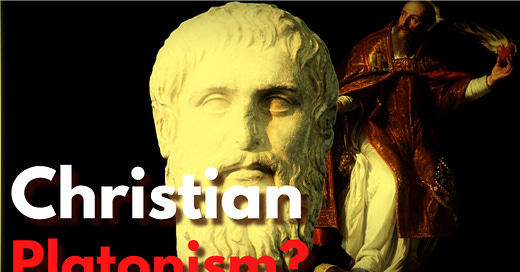



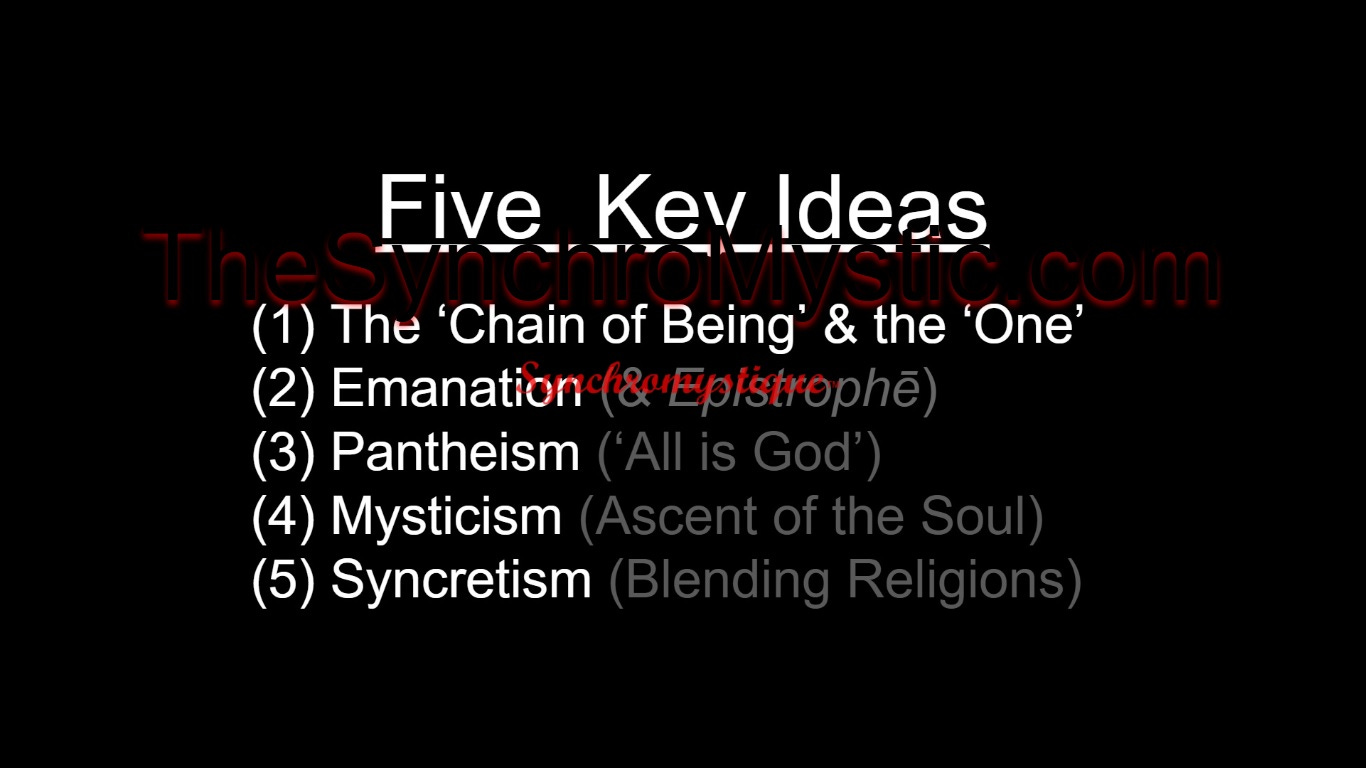
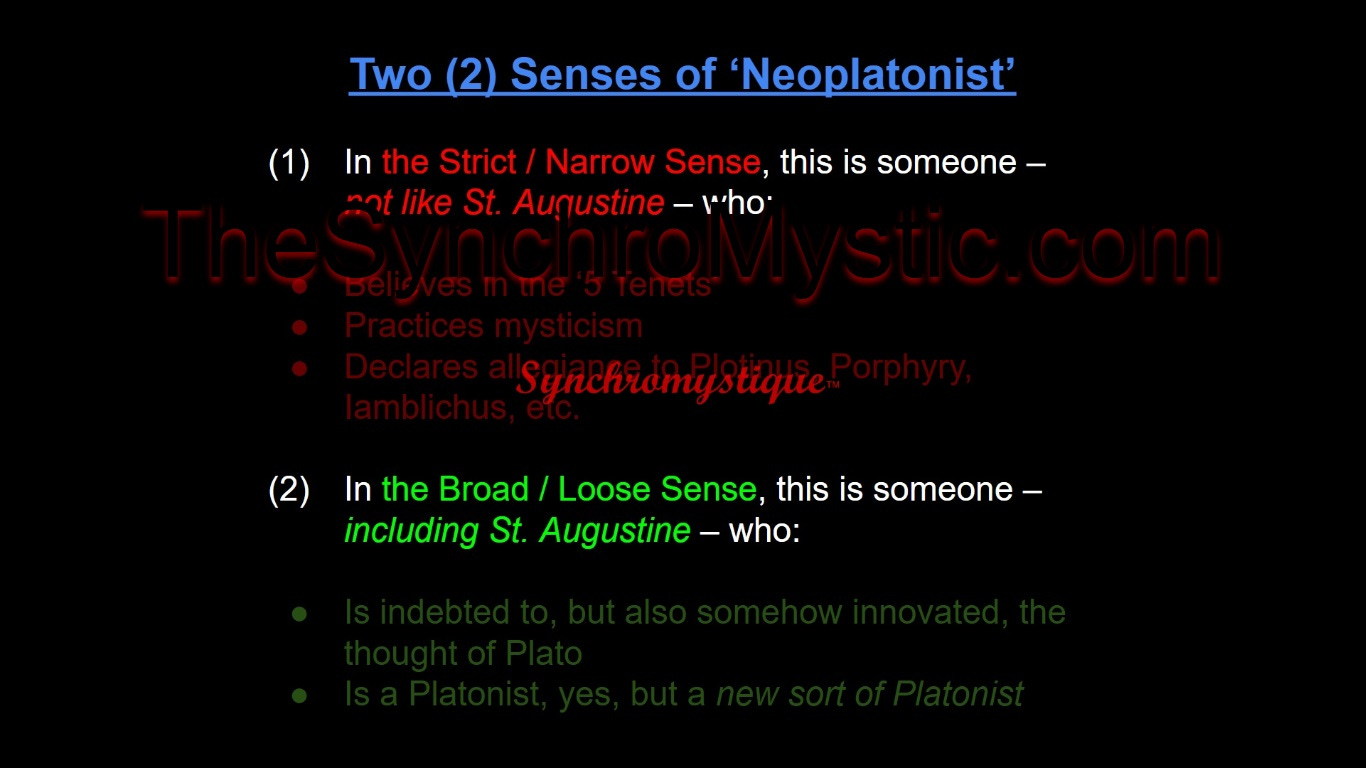
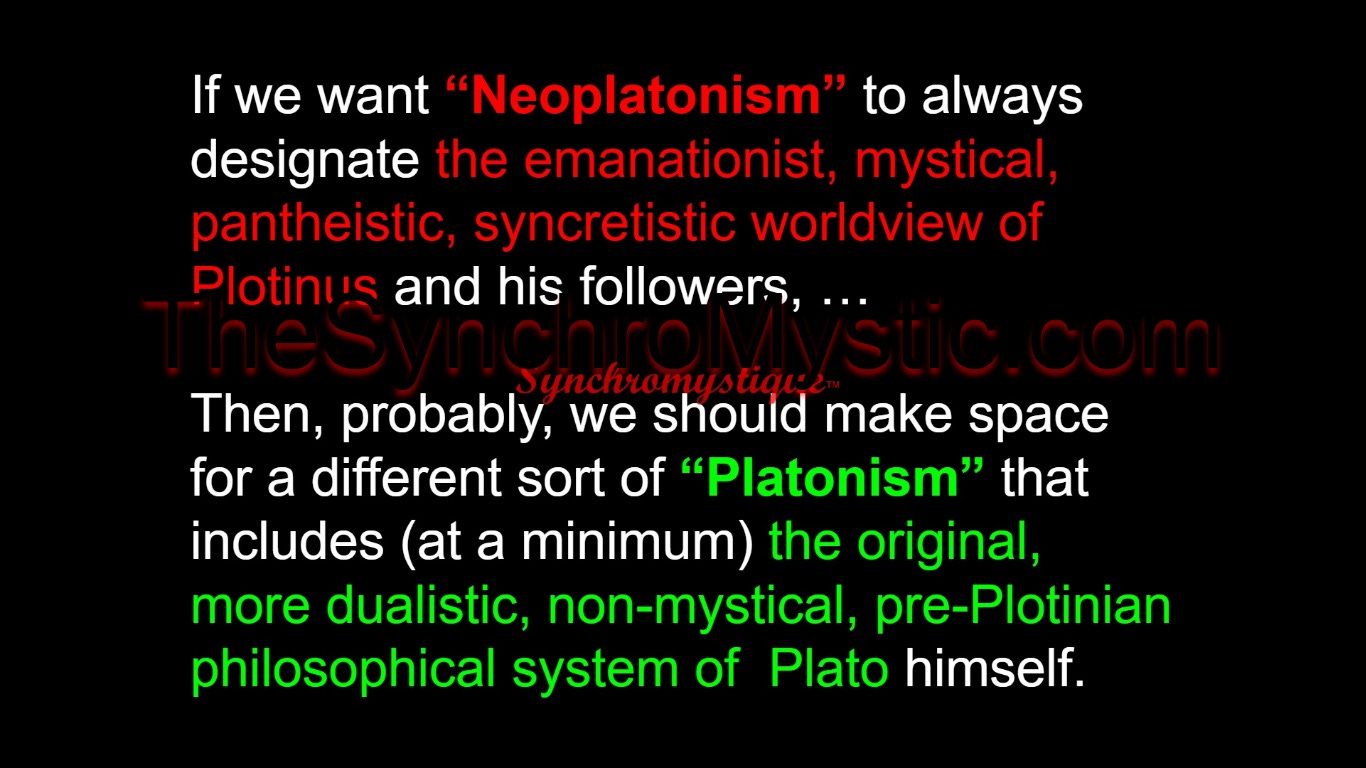


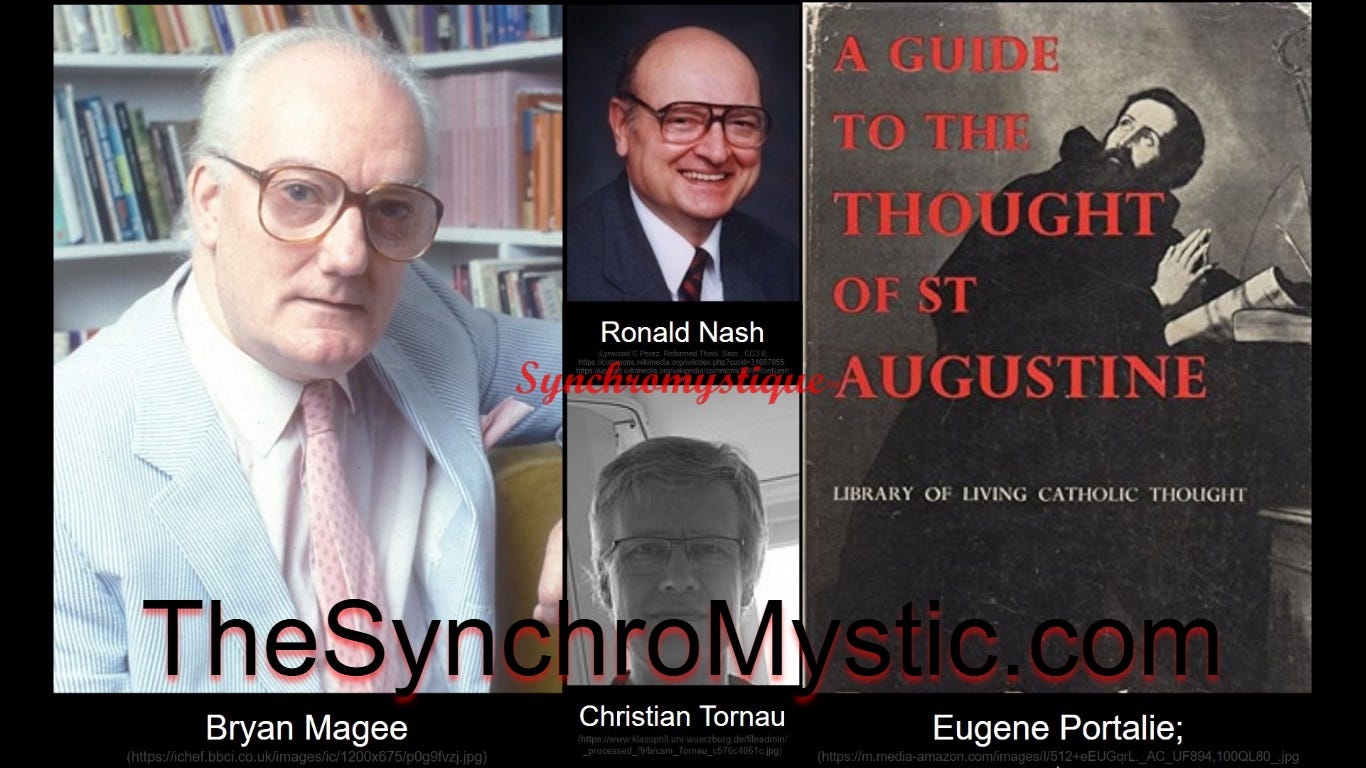
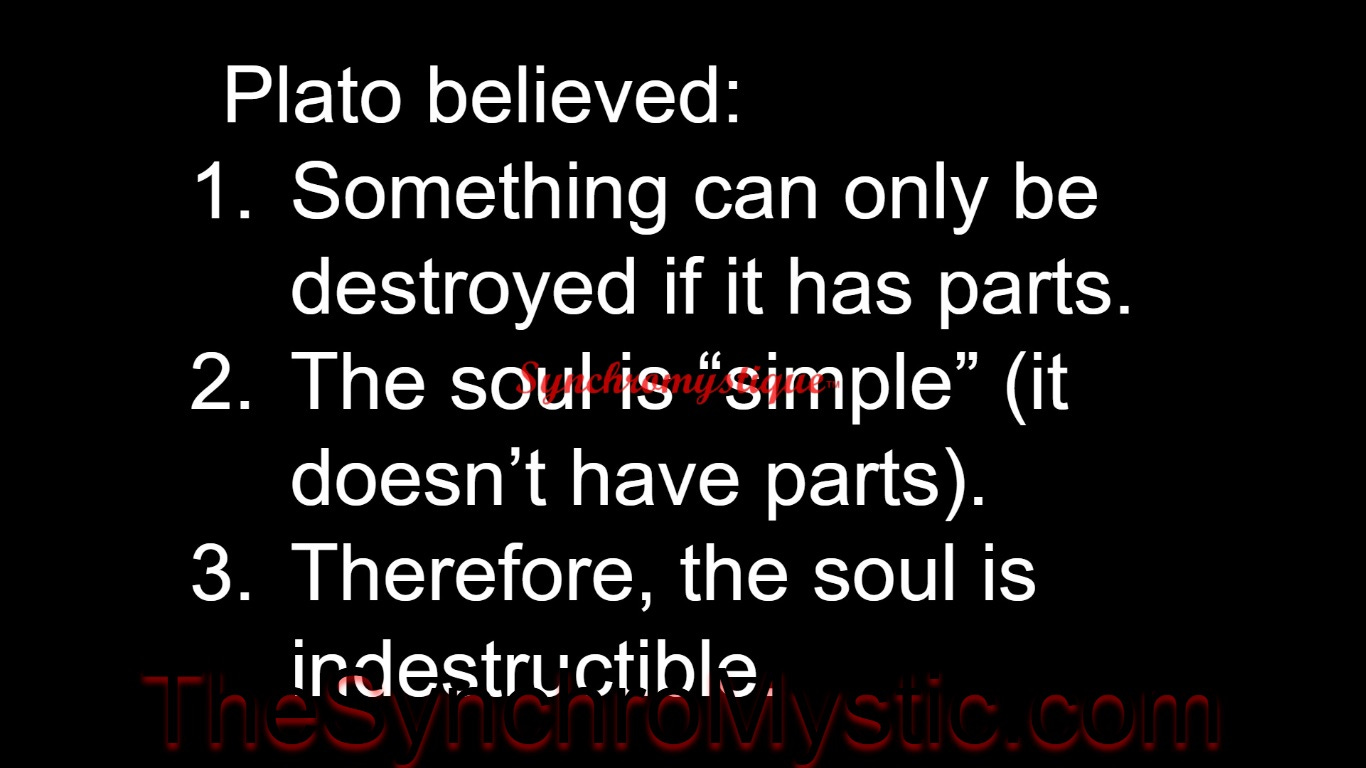




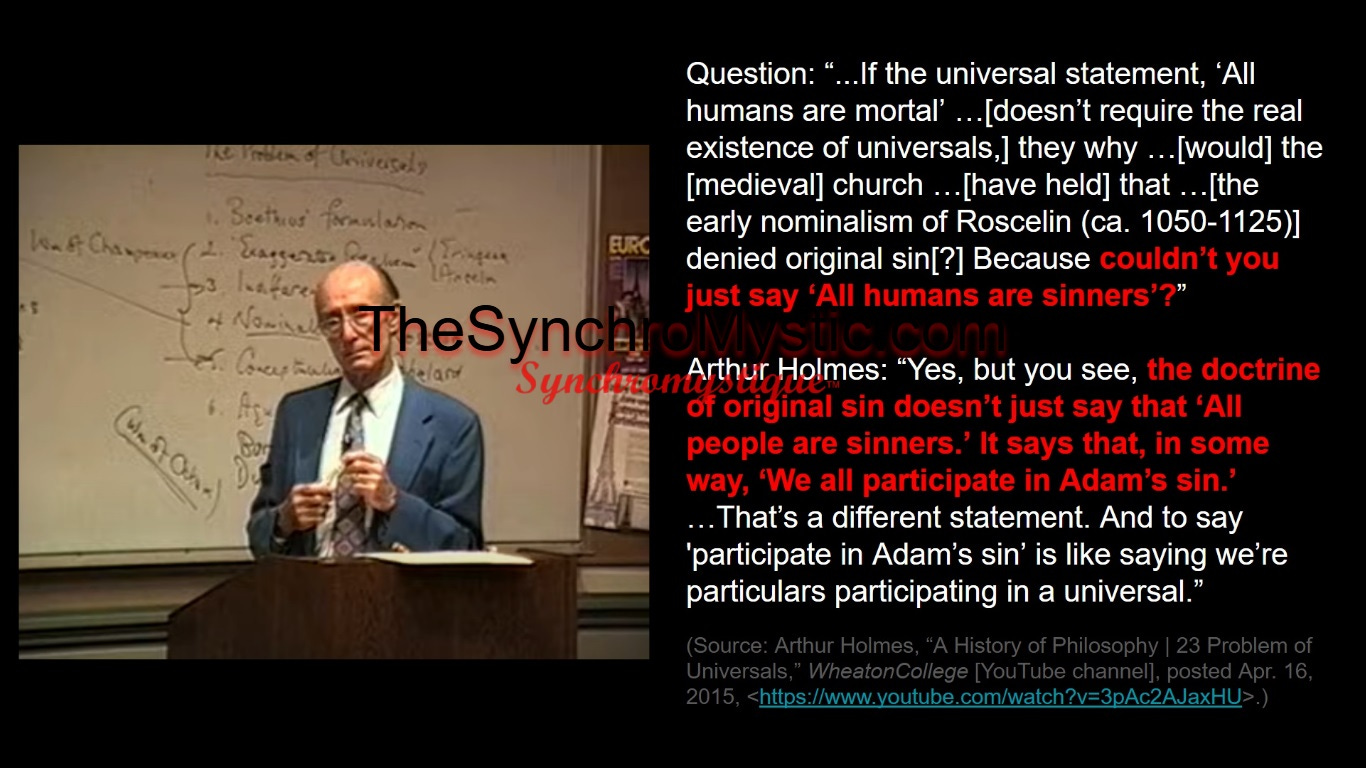

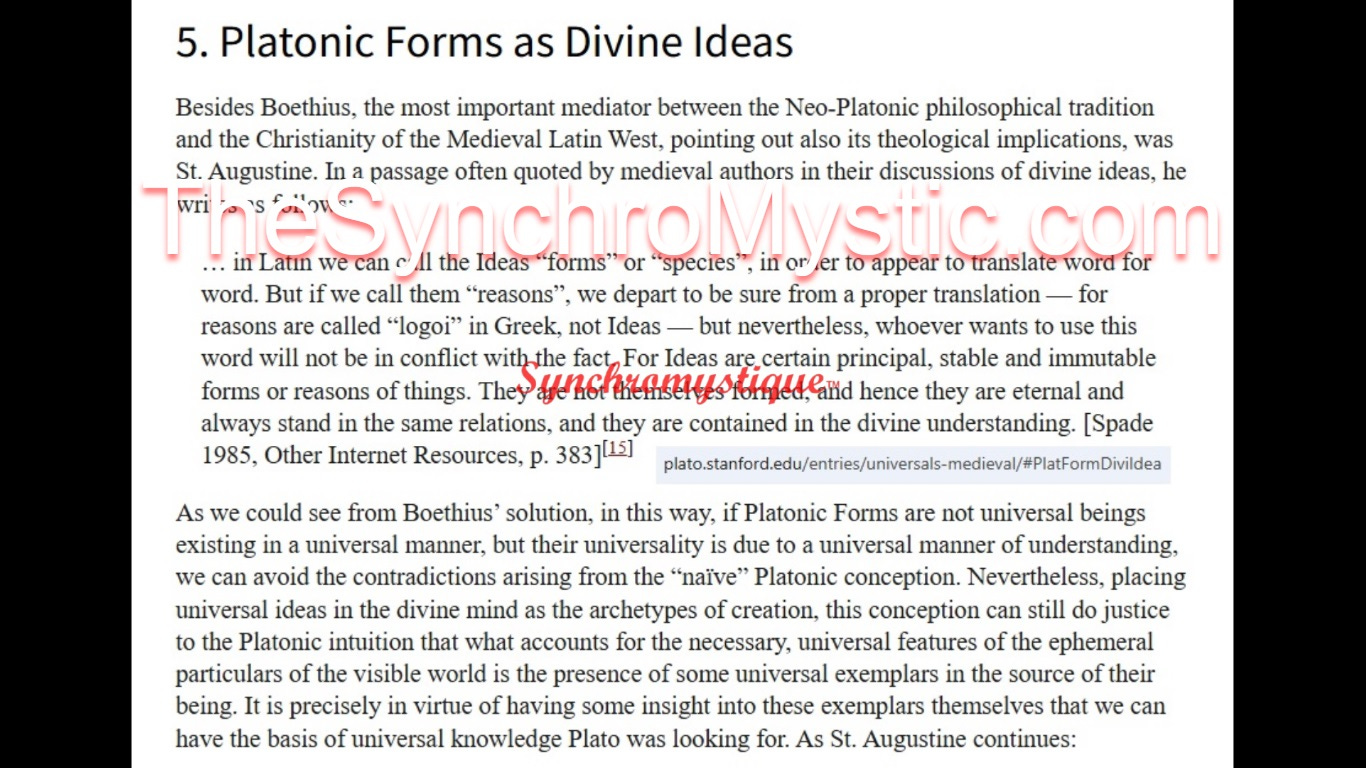

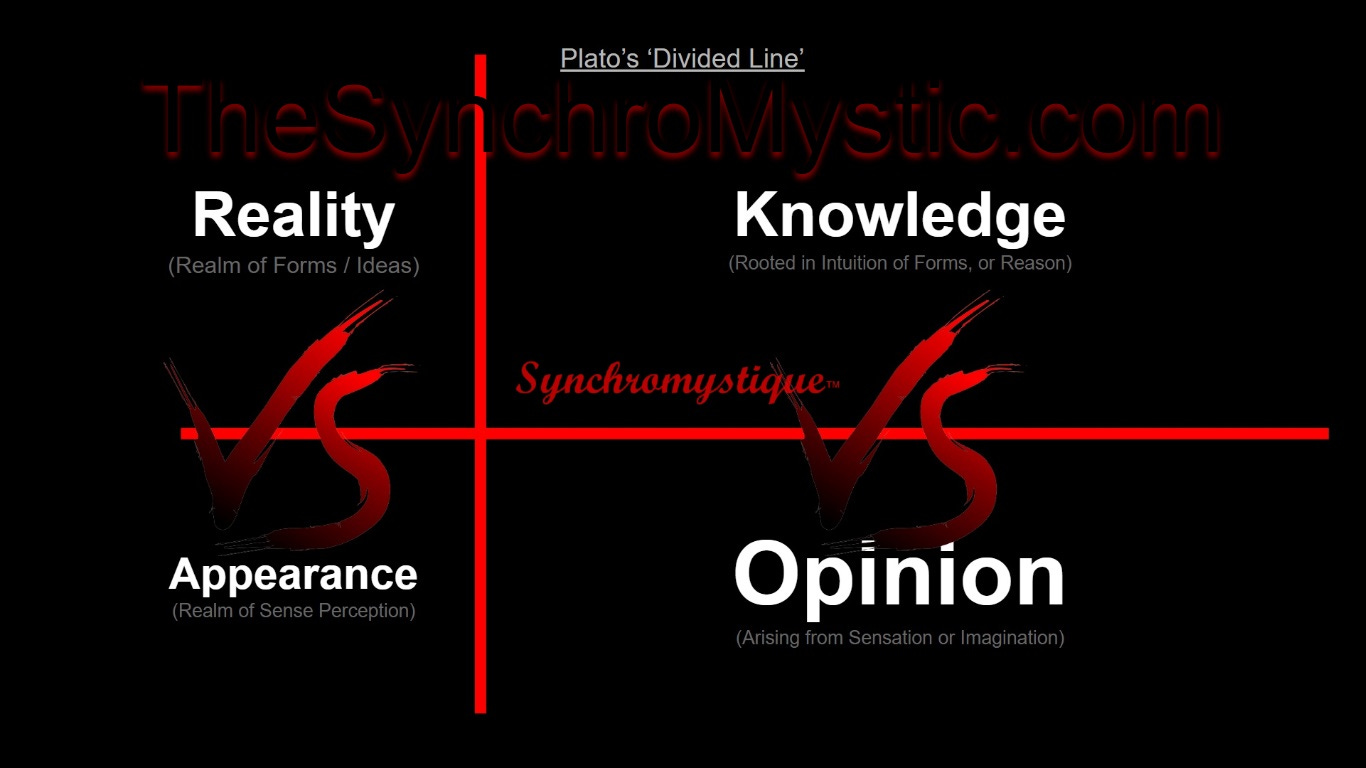
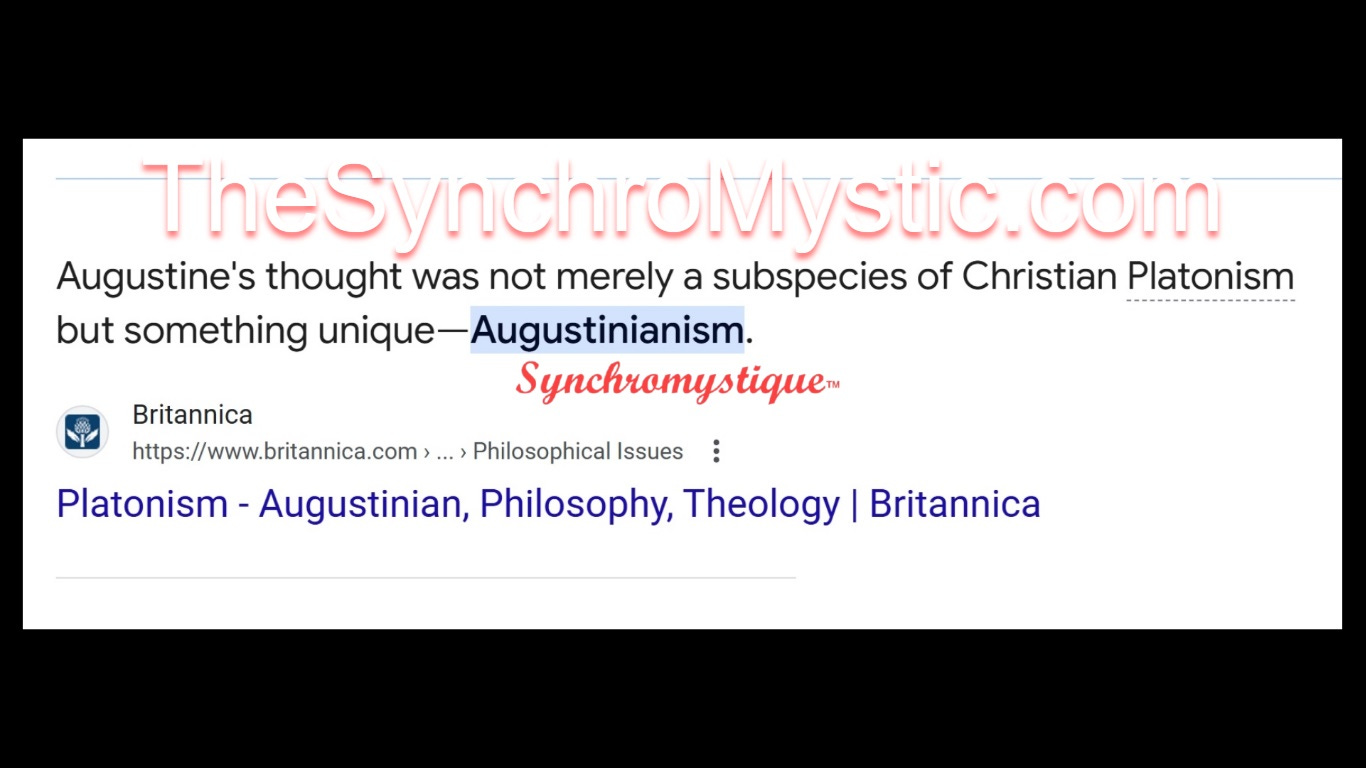
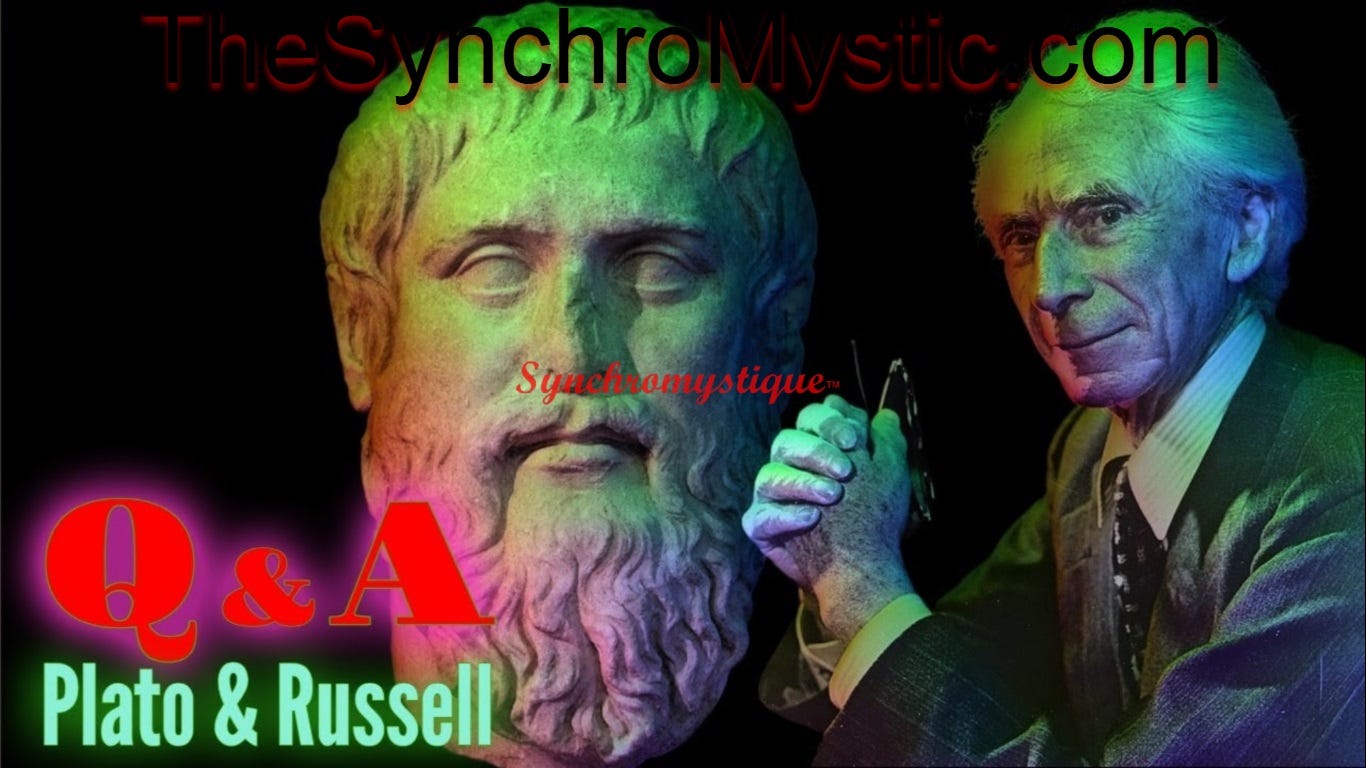
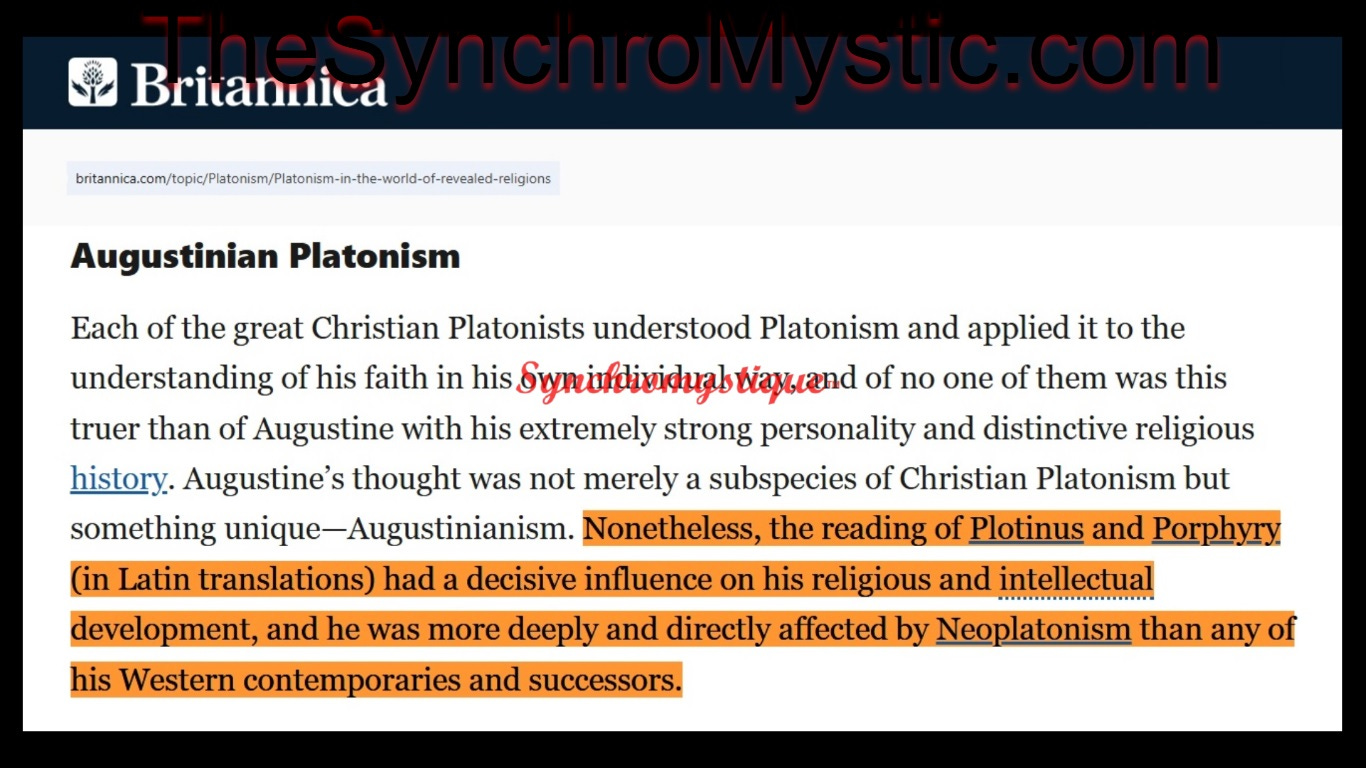
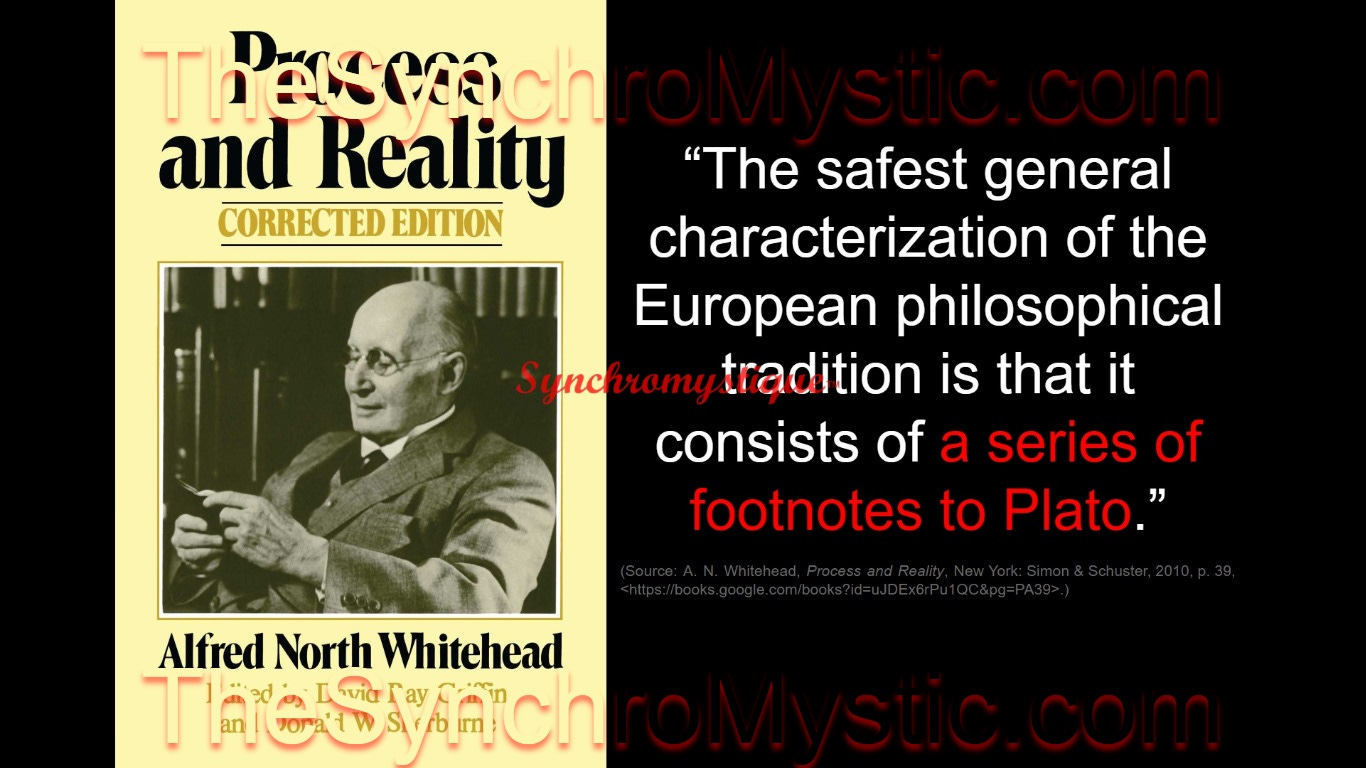

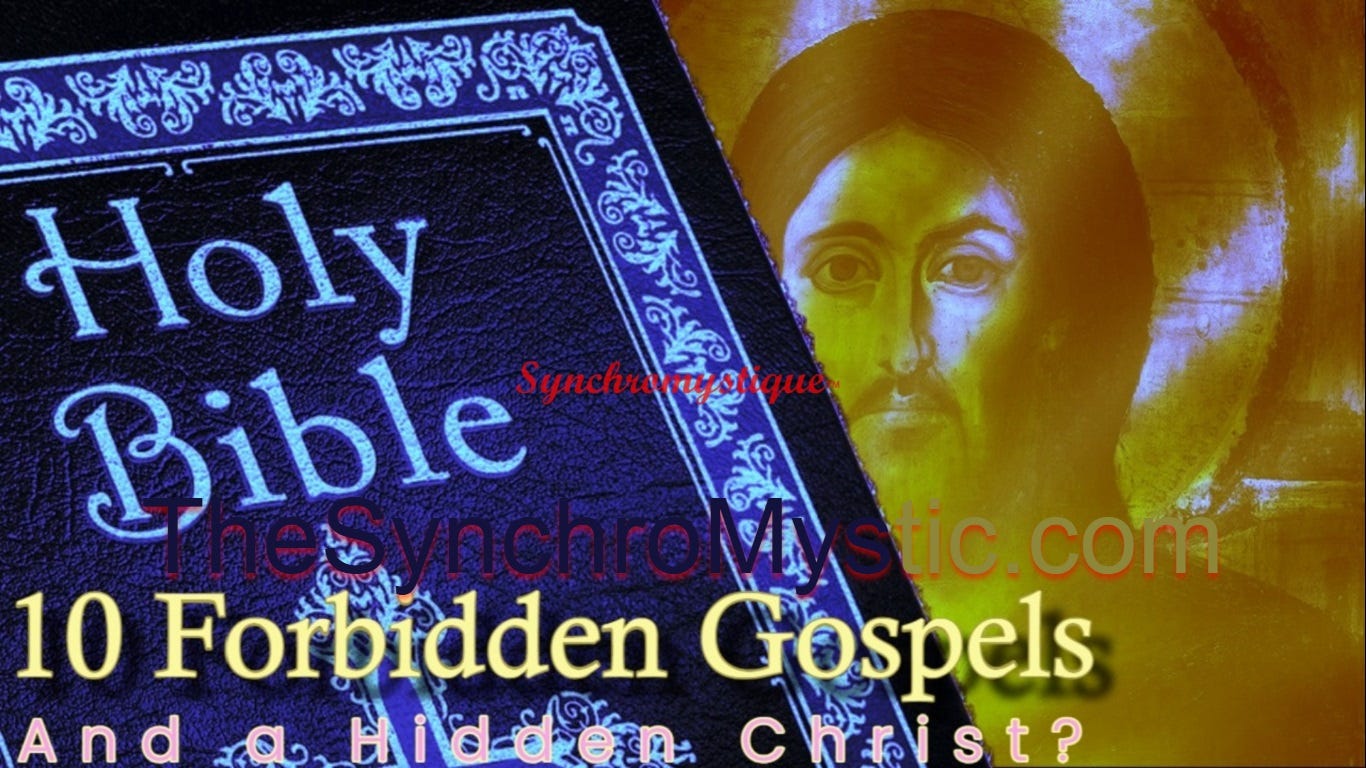
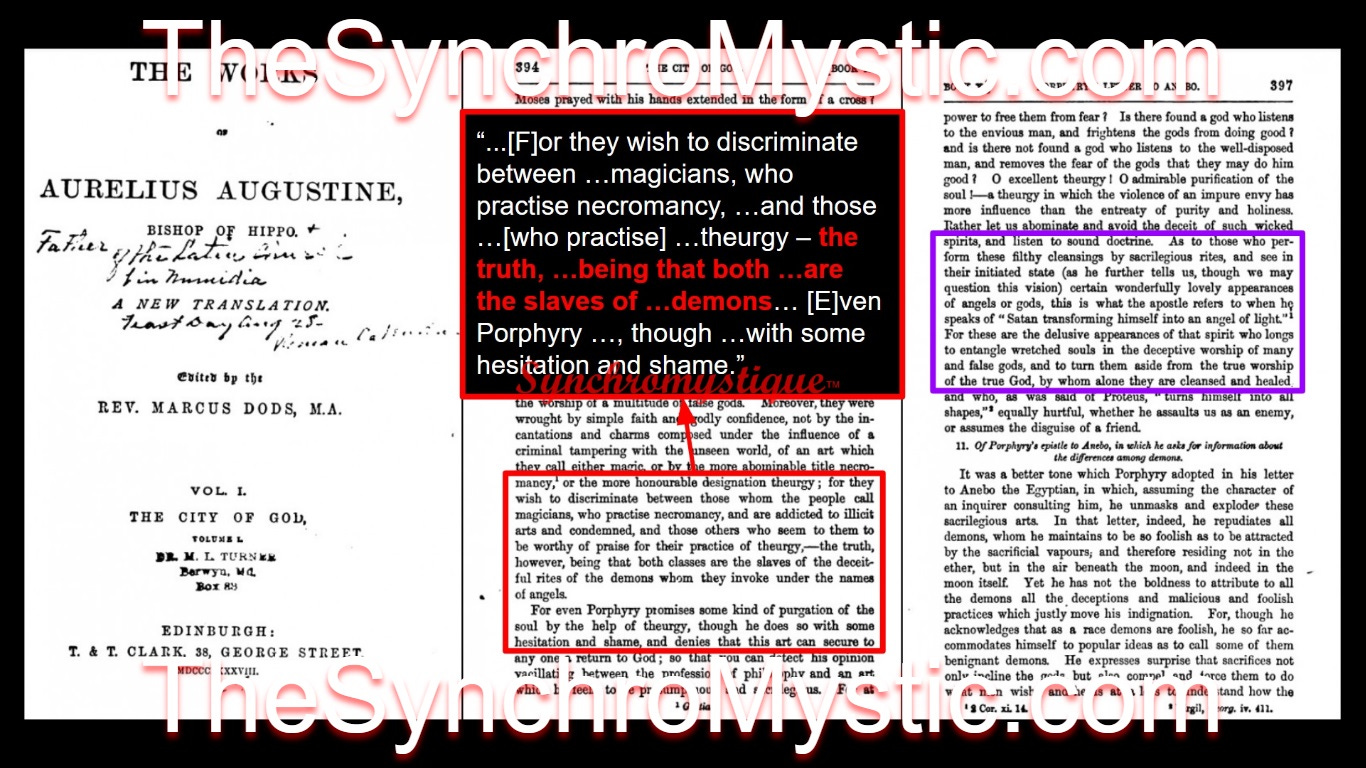
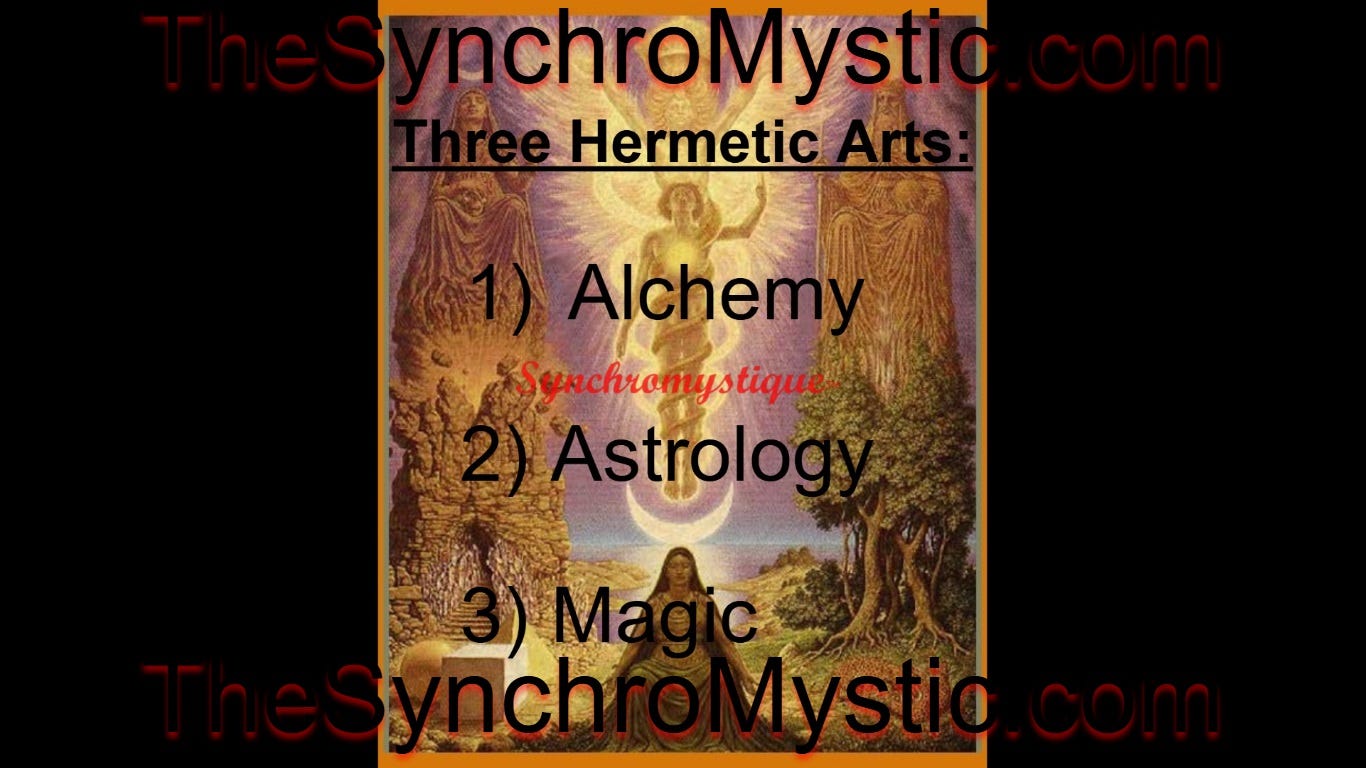
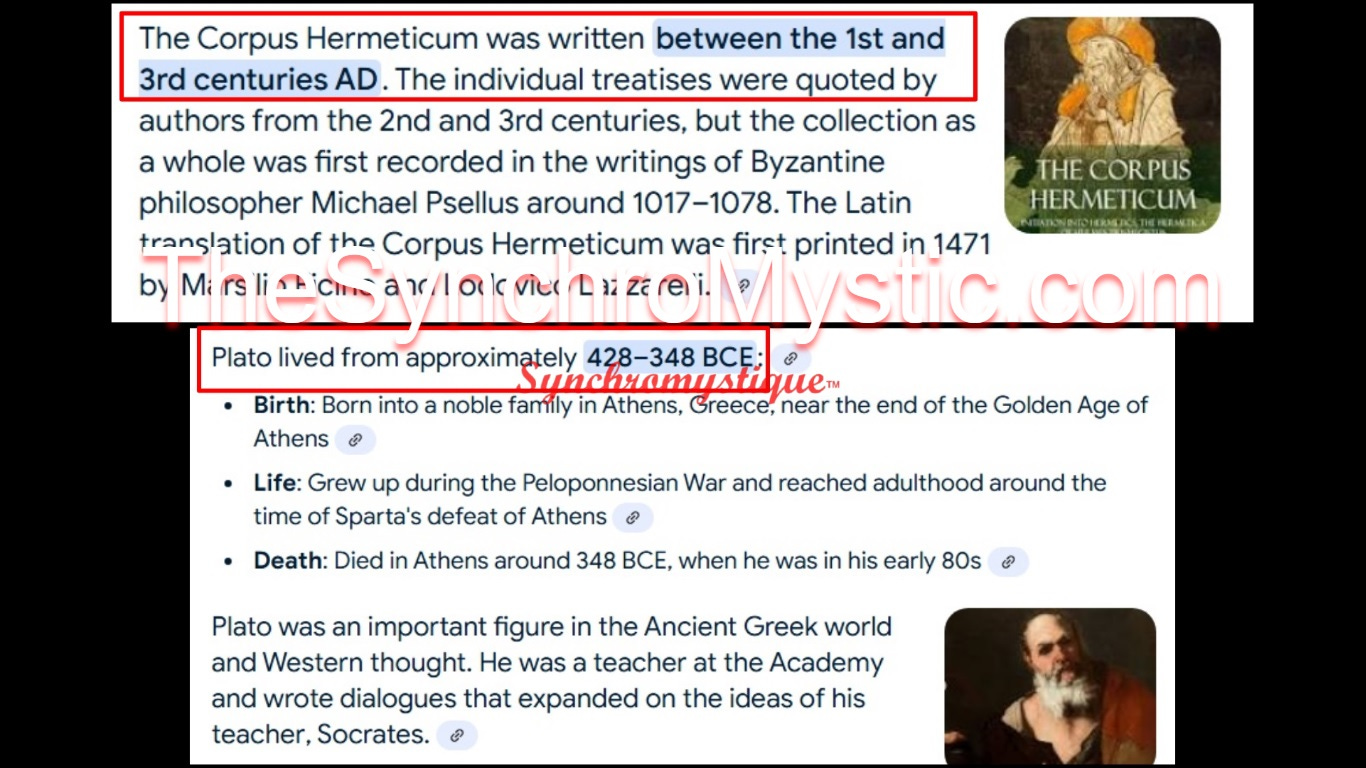

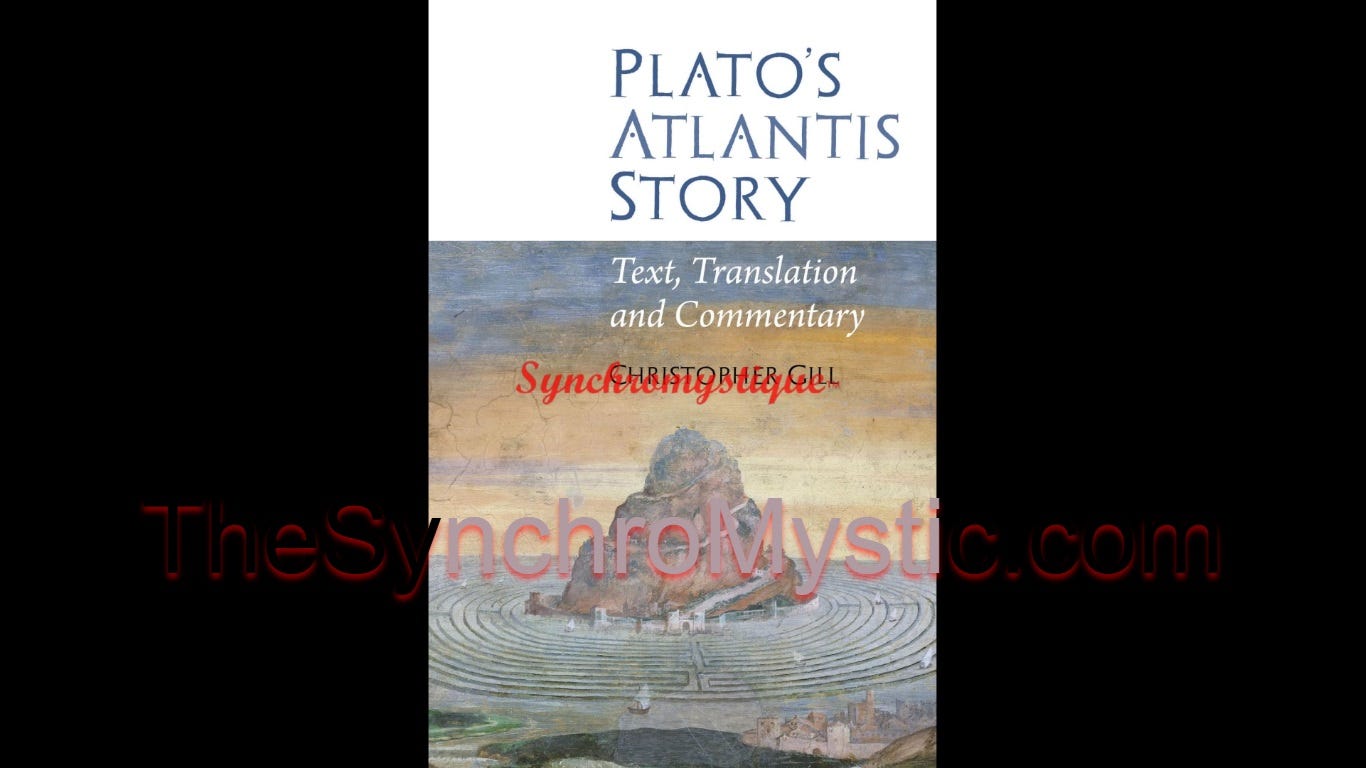
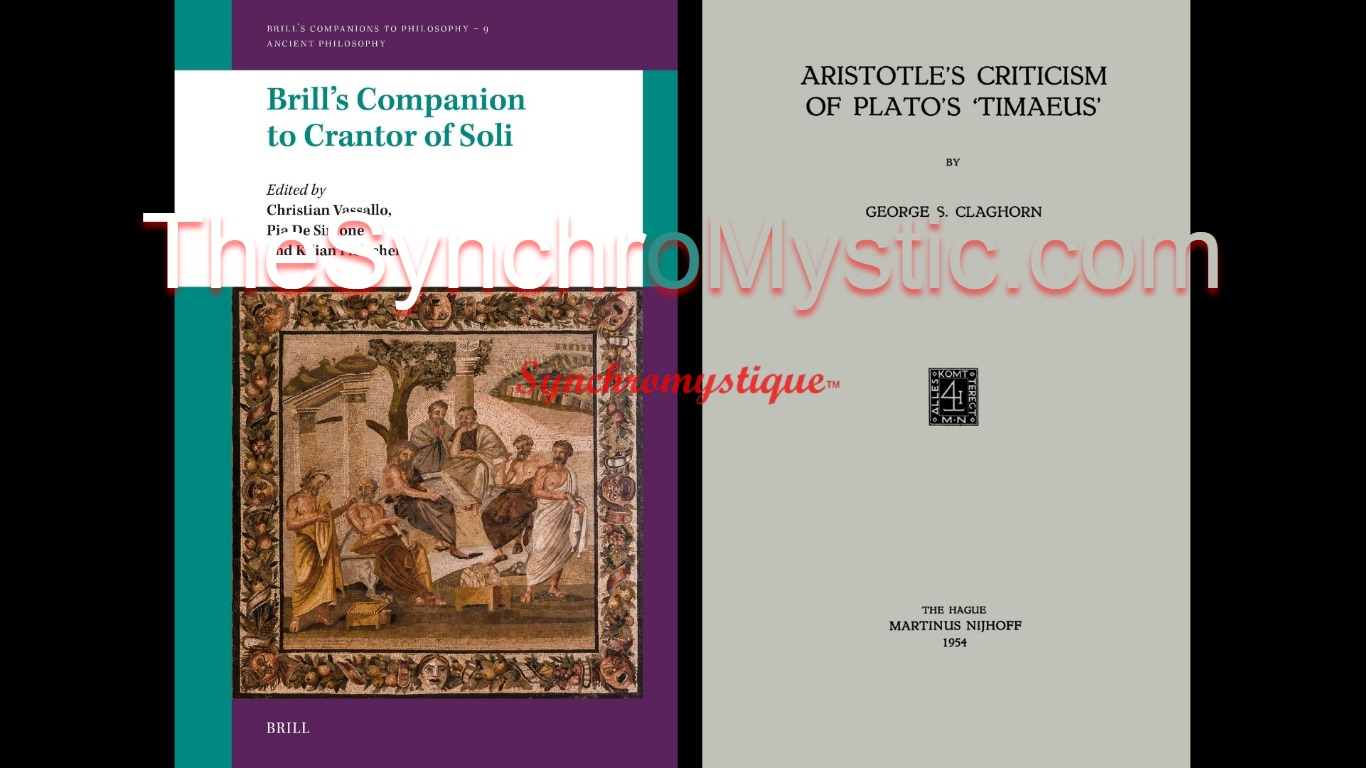
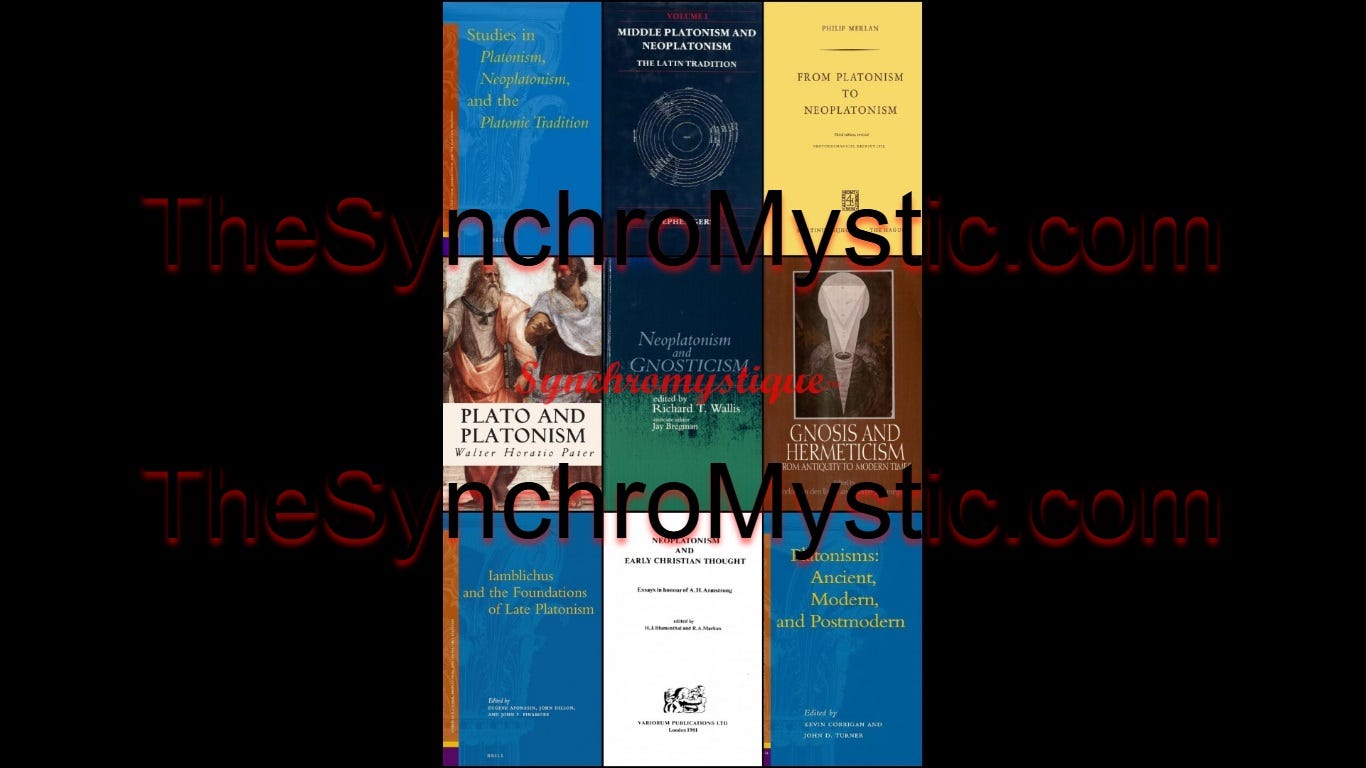
I have been through the references. I agree with what you write but it would be helpful (for my work) if you knew if there was a specific reference where Augustine refutes Hermes? Is it possible to pin-point one or two sentences? This is an helpful article. Thank you.